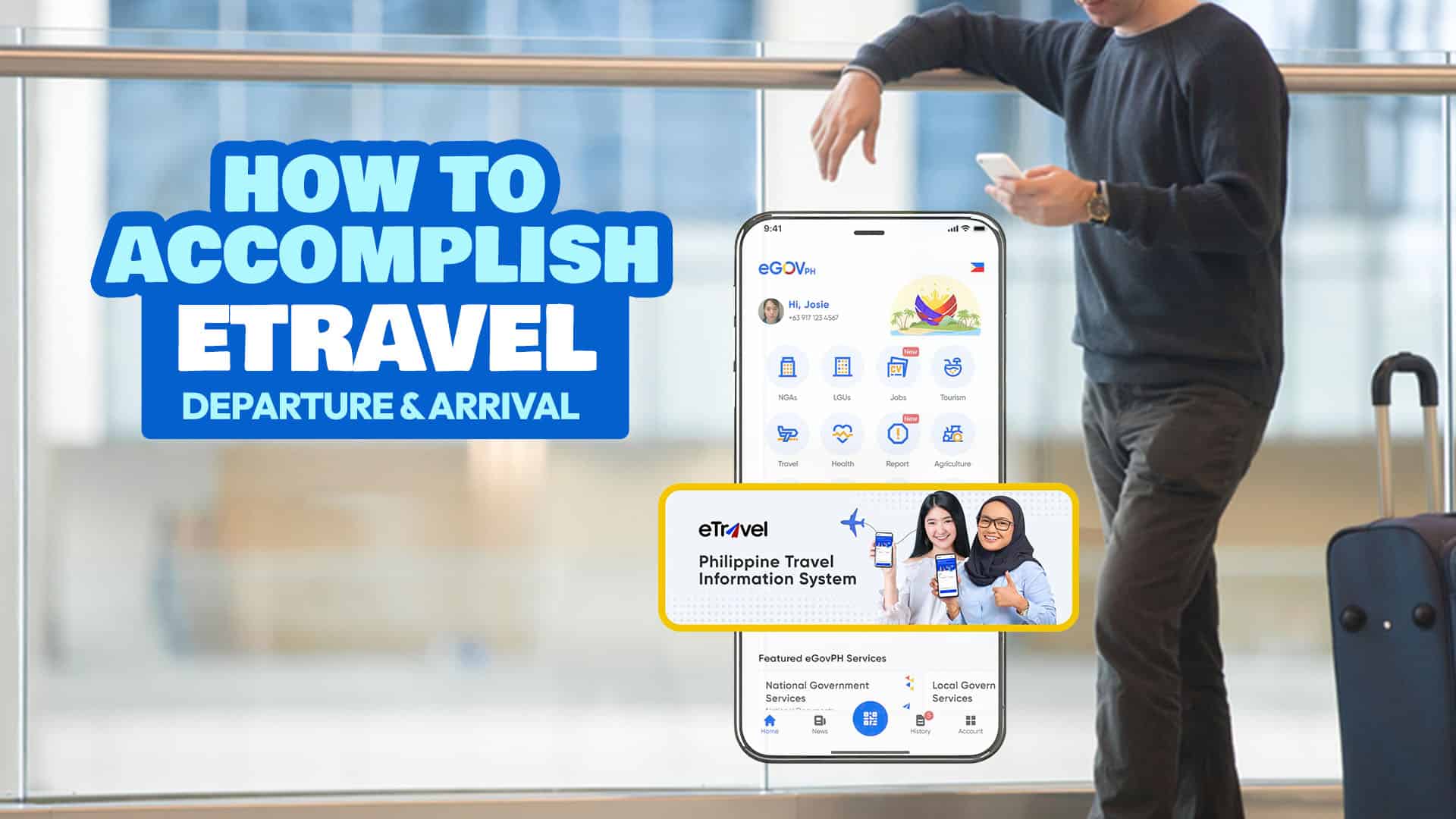

How to Accomplish eTRAVEL Form for Philippine Departure and Arrival

WHAT'S COVERED IN THIS GUIDE?
What is eTravel?
The eTravel form is an online form used to collect personal and travel information from passengers entering and exiting the Philippines for the purpose of immigration, border control, data analysis, and health surveillance. It serves as your departure/arrival card, health declaration, and contact tracing form.
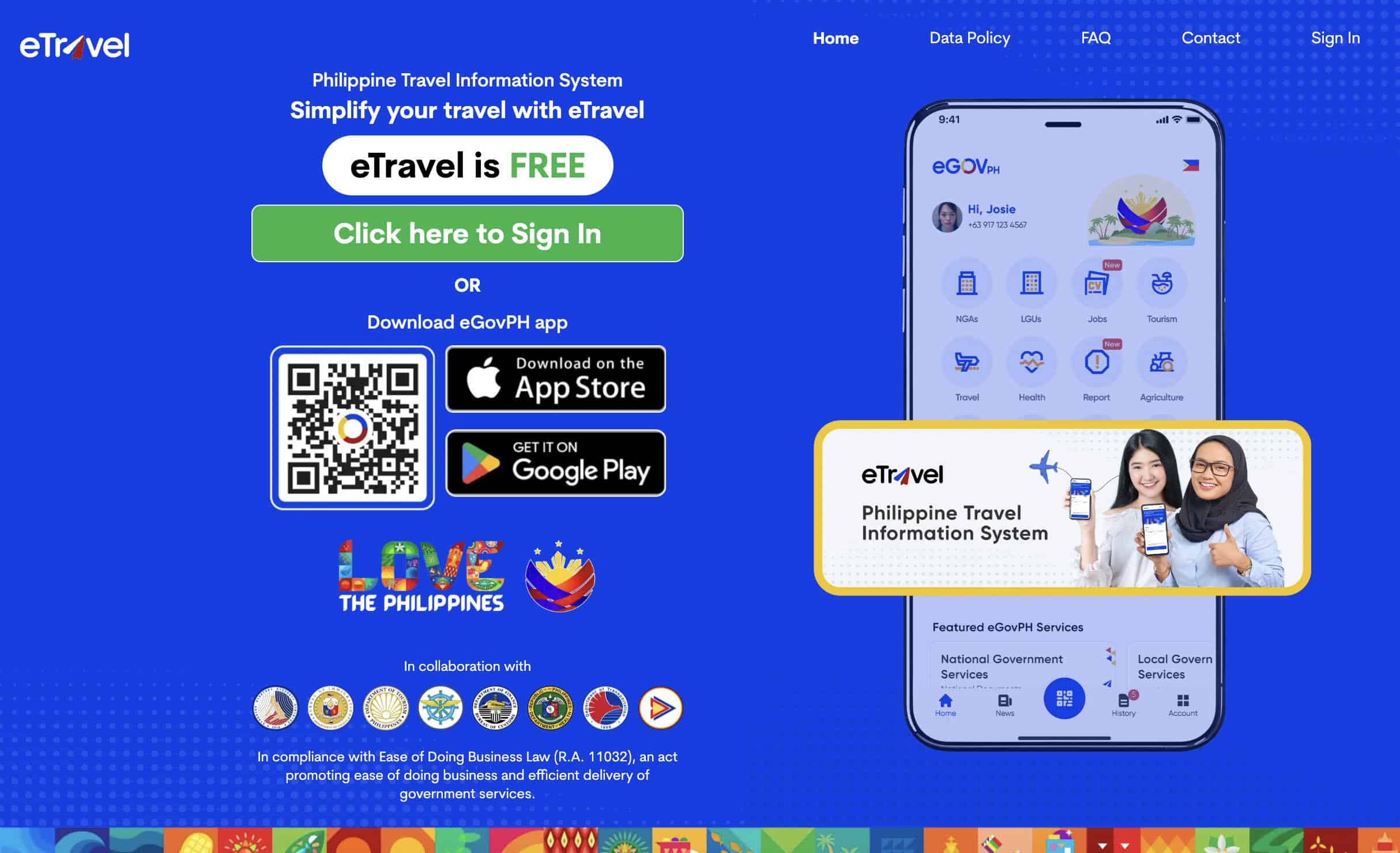
It was first implemented at the height of the COVID-19 pandemic to reduce physical contact between the passengers and airport personnel, replacing the traditional paper departure cards. Today, no more pandemic, but it has remained in use.
Who are required to accomplish the eTravel form?
Most travelers are required to complete and submit the form, including the following:
- arriving Filipinos and foreign nationals
- departing Filipinos
Adults and children alike falling under these two categories must submit an eTravel form. That covers most travelers.
I say “most” because, as you can see, it does not include departing foreigners. The following are also exempted from submitting eTravel:
- foreign diplomats and dependents
- foreign dignitaries and members of delegation
- 9(e) visa holders
- holders of diplomatic and official/service passport
The eTravel form must be completed and submitted as early as 72 hours (3 days) before your departure from the Philippines or expected arrival time in the Philippines.
If you’re traveling with family, you can also complete this form on behalf of your family members.
How to Create an eTravel Account
Whether you’re outbound or inbound traveler, the first step is to create an account, if you don’t have one yet. You can do so in two ways:
- the official eTravel website: etravel.gov.ph
- the official eGovPH app: Android , iOS (Apple)
If you have traveled internationally and submitted an eTravel form before 2024, it doesn’t mean that you automatically have an account. Prior to 2024, creating an account was not a requirement. One could simply accomplish the form and submit without having to sign up for an account. However, in early 2024, this has become mandatory. Don’t worry. It does feel like a lot of work in the beginning, but it will make your subsequent submissions a breeze because, unlike before, the system is now able to save your personal details and automatically fill in some of the fields with pre-saved data.
If you don’t have an account yet, here’s how:
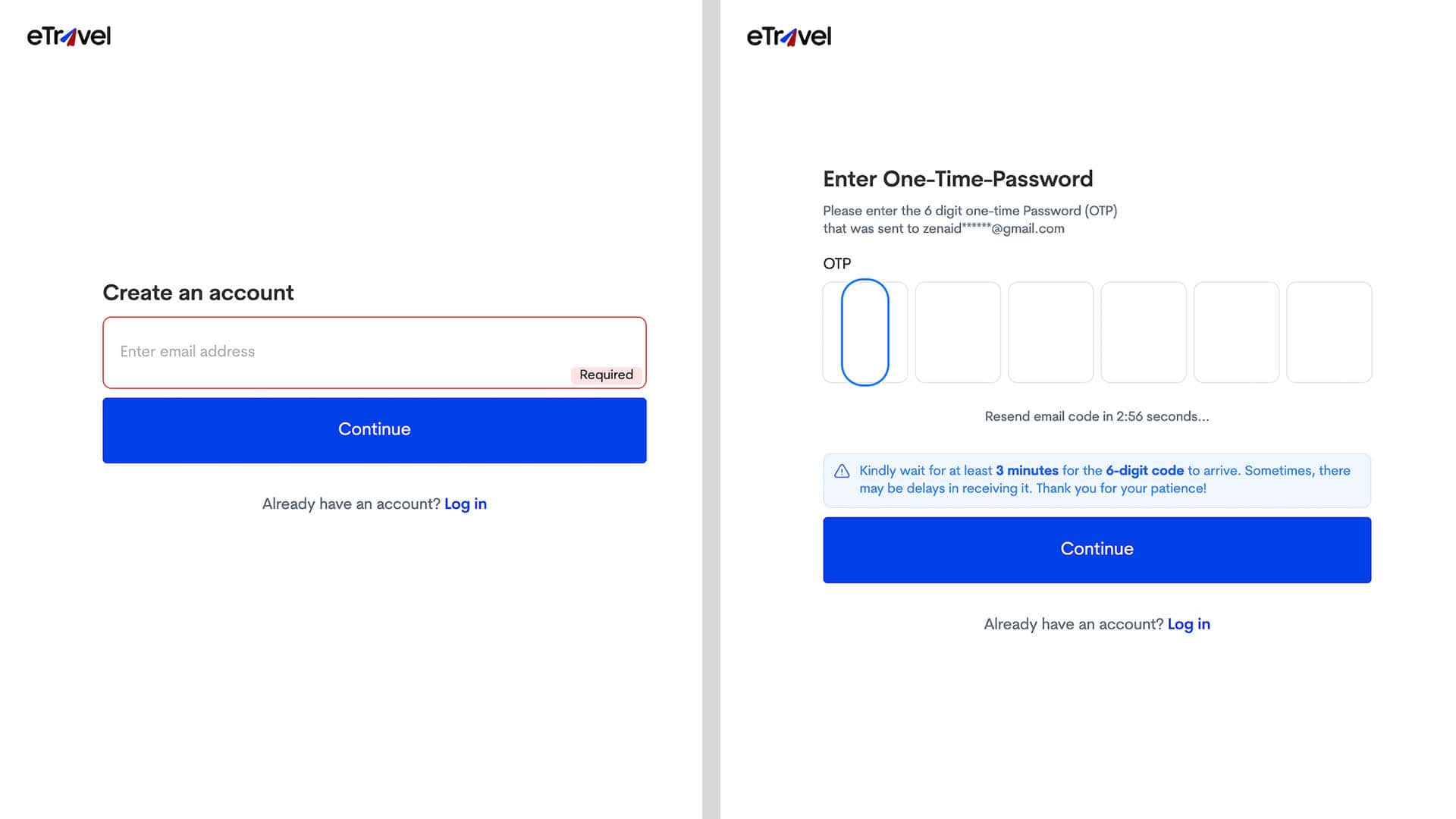
- Visit the etravel.gov.ph/authentication . This is the official sign-up page. Make sure you’re on the right website.
- Enter a valid email address. Make sure it’s correct because the system will be sending a one-time password (OTP) to this email address.
- Enter the OTP. Check your email to retrieve it. It should have 6 digits.
- Create a password. The password must have at least 8 characters, with at least one uppercase and one lowercase letter. Re-enter your password to confirm.
- Enter your personal information. The system will ask for the following: – Full name – Sex – Birth date – Mobile number – Citizenship – Country of birth – Passport number Tap NEXT.
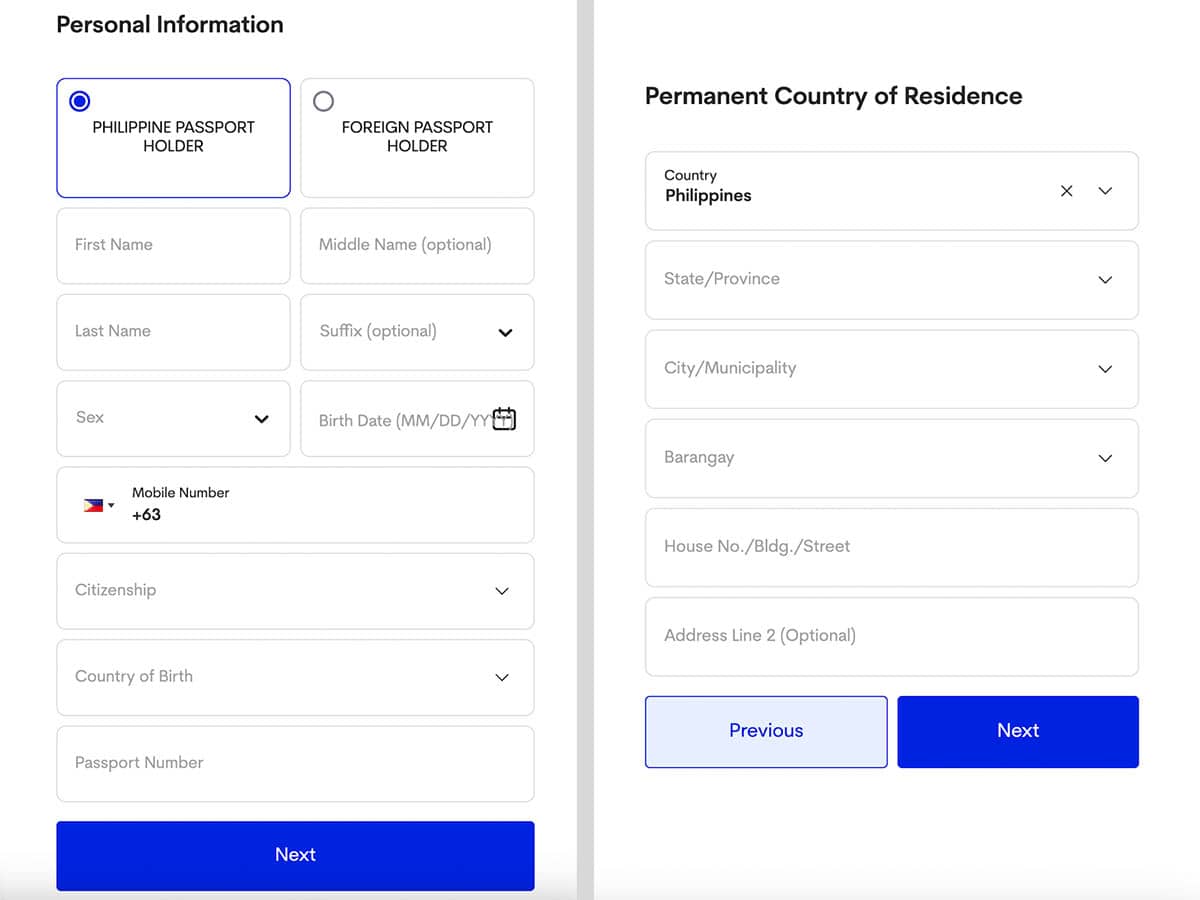
- Enter your residential address. Click NEXT after.
- Review all the information you entered. The system will show you a summary of your details. If every thing is correct, hit SUBMIT.
That’s it! You now have an eTravel account!
Using this account, you can register a trip for yourself and even family members.
Now, it’s time to register your trip.
How to Accomplish eTravel for DEPARTING Passengers
Now that you have an account, all you need to do is register your upcoming trip. Every time you do so, you’ll be asked if you’re completing the form for yourself or for a family member. (Yes, you can submit a form on their behalf.) You’ll also be asked if it’s for ARRIVAL or DEPARTURE.
This section is for DEPARTURE , i.e. for those flying OUT of the Philippines. This applies to all Filipino passengers and crewmembers. Foreign nationals departing the Philippines do not need to register their departure trip.
Here’s how to register a departure trip:
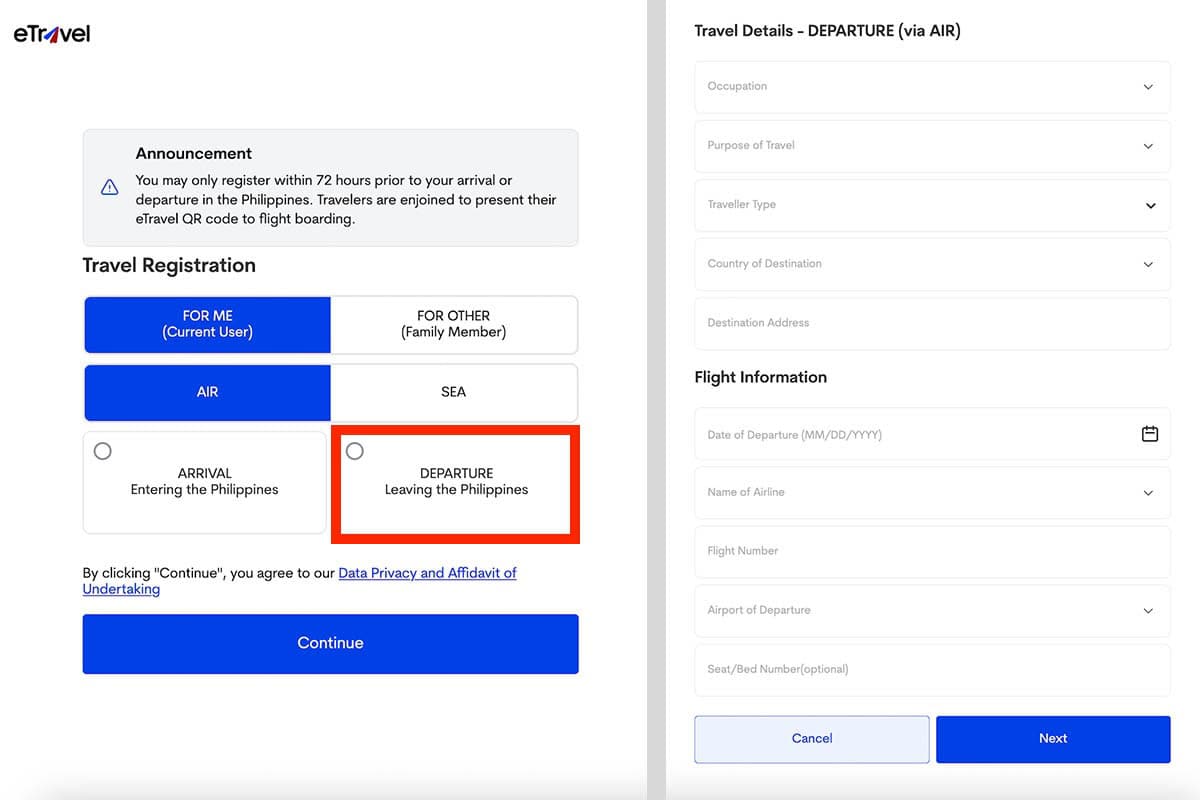
- Select whether you’re accomplishing the form for yourself or a family member. You should also select whether you’re traveling by air or by sea. Let’s assume you’re flying, so choose AIR.
- Choose DEPARTURE (Leaving the Philippines). Make sure you select the right one! Then click CONTINUE.
- Enter your travel details, including the following: – Your occupation . Select the industry closest to yours) – Purpose of travel . If you’re traveling as a tourist, choose HOLIDAY/PLEASURE/VACATION. Other choices are OFW, Convention/Conference, Education/Training/Studies, Religion/Pilgrimage, and Transit. Just pick what applies to you.. – Traveler type . Choose AIRCRAFT PASSENGER. – Destination country and address . If you’re staying at a hotel, enter your hotel’s address. If you’re staying with someone else, type their address.
- Enter your flight information. Provide the following details: – Date of departure – Name of airline – Flight number – Airport of departure. If flying out of Manila, choose NINOY AQUINO INTERNATIONAL AIRPORT (MNL). But make sure you pick the right terminal, too. – Seat number (optional) Click NEXT.
- Review your details. You’ll be shown a summary of all the info you entered. Make sure everything is correct. If so, click SUBMIT.
- Save or take a screenshot of your eTravel QR code. This will also be sent to the email address you used.
That’s it! All your information will also be sent to the Immigration Officer’s database. In most cases, they won’t even ask to see your QR code because they can already see it on their screen as you clear Immigration Check.
How to Accomplish eTravel for ARRIVING Passengers
Assuming you already have an eTravel account, you only need to register your trip. For ARRIVAL registration, all passengers — Filipinos and foreigners alike — must complete and submit an ARRIVAL eTravel form. Just follow these steps.
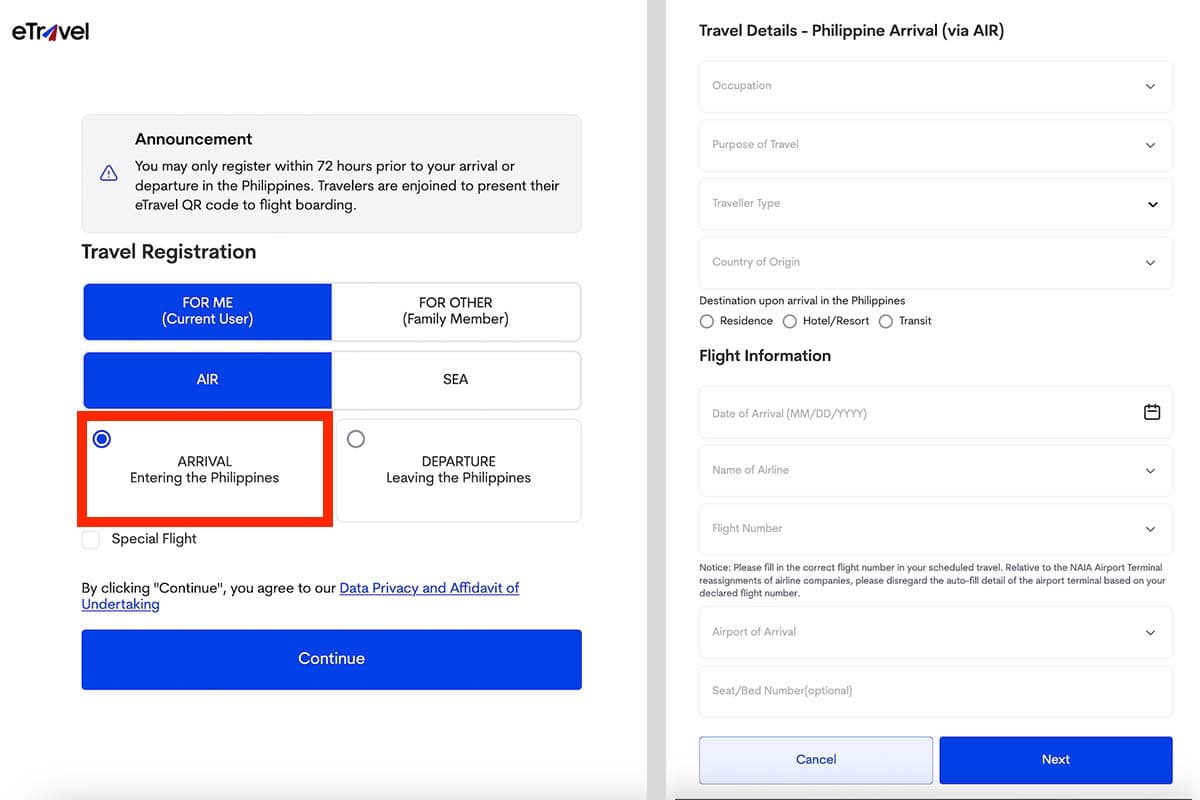
- Choose ARRIVAL (Entering the Philippines). Make sure you select the right one! Then click CONTINUE.
- Enter your travel details, including the following: – Your occupation. Select the industry closest to yours) – Purpose of travel. If you live in the Philippines and you just went abroad for business or holiday, choose RETURNING RESIDENT. Other options are OFW, Convention/Conference, Education/Training/Studies, Religion/Pilgrimage, and Transit. Just pick what applies to you. – Traveler type. Choose AIRCRAFT PASSENGER. – Country of origin. This is the country where you will be flying from.
- Enter your address in the Philippines. Choose where you will be staying in the Philippines: Residence, Hotel/Resort, or Transit. Once you select, type in the address of your residence or hotel, whichever is applicable.
- Enter your flight information. Provide the following details: – Date of arrival – Name of airline – Flight number – Airport of arrival. If flying to Manila, choose NINOY AQUINO INTERNATIONAL AIRPORT (MNL). But make sure you pick the right terminal, too. – Seat number (optional) Click NEXT.
- Fill out the Health Declaration Form. Enter all the countries you have visited within the past 30 days. You’ll also be asked if you have been sick, have experienced symptoms, or have been exposed to someone with symptoms within the past 30 days. After answering all the items, click NEXT.
Frequently Asked Questions (FAQs)
I want to change something after generating the qr code. how to correct it.
You can still edit your info if you noticed a typo error or you entered wrong data. However, note that you can only do this BEFORE it gets validated or verified by the BOQ officer upon your arrival sa Pilipinas. Ensure that you make your corrections before your flight to the Philippines.
To do this, just go to the main page or home page of eTravel, then click the UPDATE REGISTRATION button. Provide your reference number or transaction number and birth date.
At what point of the airport process should I present the QR code?
In most cases, you won’t be asked to present this at any point. But it doesn’t mean you can skip it. The Immigration Officer can see on their screens if you’ve accomplished this form.
- If they see that you have, they usually won’t ask for it.
- If they can’t find your eTravel for this trip, they will ask you to step aside and accomplish one at the tablet station nearby.
Do I have to pay for eTravel QR Code? How much is the charge?
No, you don’t need to pay anything for the eTravel QR Code. It is FREE of charge. If you landed on a website requiring you to pay for the service, it’s definitely a scam.
I’m traveling with family. Does every one of us need to accomplish eTravel?
YES and NO. YES, every member of the family on your trip must have an eTravel record, but not everyone needs to create an account. One member can create an account and then they can register all the accompanying family members under that one account. I’ve done it myself for my mother and sister on our most recent trip, and we didn’t encounter any problem.
Note that this does not apply to friends, colleagues, or romantic partners. If you’re not family, each of you must create an account.
Is there a Tagalog version of this article?
We will be publishing a Tagalog video version of this on our YouTube channel .
Do I still need to accomplish One Health Pass and eArrival Card?
No need. The eTravel has officially replaced the now obsolete One Health Pass and eArrival Card starting 2 December 2022.
To be honest, all these systems are very similar. The changes are not too drastic. Some items were removed such as the Philhealth Number, and then some required items are now optional. The noticeable difference is not really the content but the appearance or the user interface.
Updates Log & Credits
2024 • 5 • 4 – Reflected “account creation requirement” update, and included Departure process: Yosh Dimen 2023 • 2 • 24 – Original publication, covers only Arrival process: Asta Alvarez
More Tips on YouTube ⬇️⬇️⬇️
Is this post helpful to you?

Related Posts:
- HOW TO AVOID GETTING OFFLOADED: Airport Immigration Requirements
- How to Get to Paris City Center from Charles de Gualle Airport by Train
- Do You Need to Bring the CREDIT CARD You Used to Airport Check-in?
- List of OPERATIONAL AIRPORTS IN THE PHILIPPINES: As of July 17, 2020
- List of DOH-BOQ-Accredited QUARANTINE HOTELS in Metro Manila & Near NAIA
- NEW DEPARTURE PROCESS for Domestic PAL Flights from Manila: Step-by-Step Guide
- NEW INTERNATIONAL DEPARTURE PROCESS & TRAVEL REQUIREMENTS: For PAL Passengers from MANILA
- CLARK AIRPORT International Arrival Process & Requirements (OFWs, Non-OFWs, Foreigners)

- Recent Posts
- 2024 Philippine Airlines PROMO: Get 50% OFF on PAL Domestic Flights! - 16 May 2024
- 2024 NAIA Departure Guide for International Passengers (Manila Flights) - 10 May 2024
- 2024 Cebu Pacific Promos & PISO SALE with Number of Seats Available - 10 May 2024
what option should I choose after my vacation in let’s say Japan, and I’m just going back home to the Philippines?
purpose of travel: what option should I choose after my vacation in let’s say Japan, and I’m just going back home to the Philippines?
I’m vaccinated with j&j. do I need to have booster for my etravel application
Hi Mary Grace, ‘yan ung 1 dose lang po ano? Afaik, hindi na required ang booster now.
yes po.color blu3 nging color ng qr code ko then n/a Yung lumabas dun sa health survey.ok lng po b yun?
ohhh.. for departure pala ung Blue QR code.. ung health declaration daw will be edited for Arrival na.
naku blue din ung sa akin.. nagskip siya sa health declaration na part. tapos di naman ma-edit. weird.
hello po ano po update sa color blue na qr code po? color blue rin po sakin
nakaalis naman po kayo ng walang issue sa blue QR code?
Ay. Naku di ko po alam pag blue yung QR code. Green and red lang po ung naeencounter namin. Green is diretso na, tas pag red, need pa ng additional docs to verify. Pero pag blue po, hindi ko po alam. :(
Manila to cebu need pa ba etravel again? If Foreign passport holder
Hi just to clarify, do employees fall under worker/labourer? Ty
Pano ung unvaccinated ..no chance po ba mkatravel po? Salamat po sa sasagot?
Wat if the qr code or reference# can’t save immigetly and the fillup form back again for signing? Please helo
Featured On

We heard you!
Your comment is now queued for moderation! We’ll try to get back to you soonest. While waiting, follow us on these channels.
Subscribe on Youtube! Follow us on Instagram!

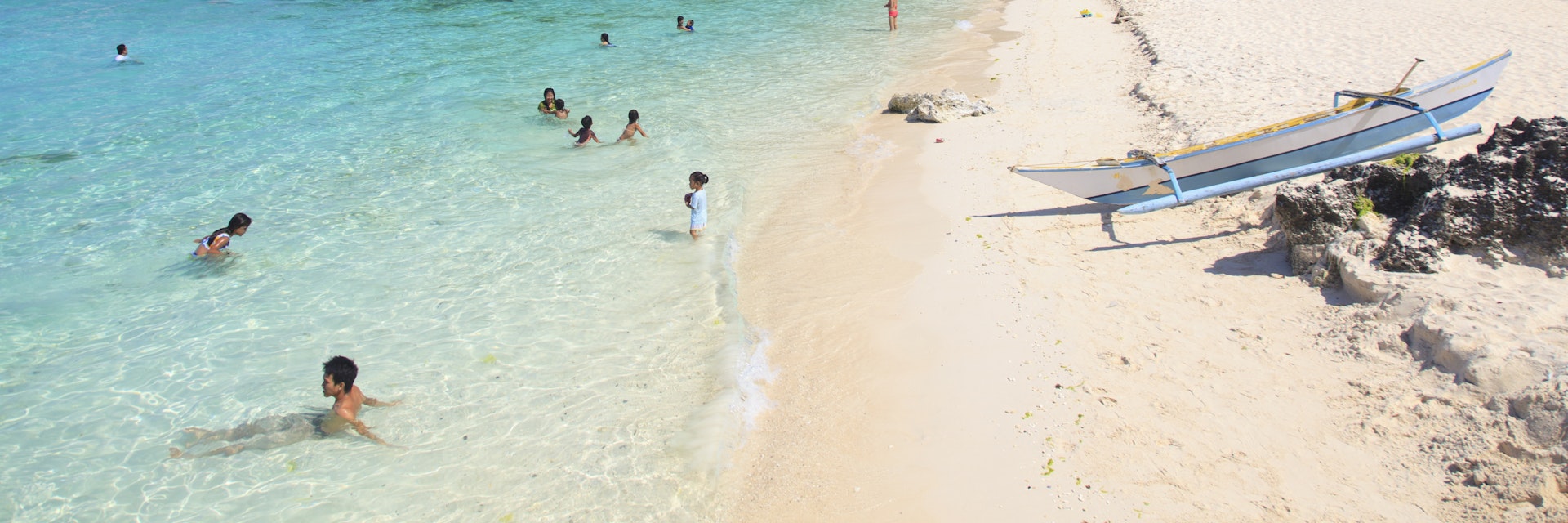
Getty Images
Philippines
The Philippines is defined by its emerald rice fields, teeming megacities, graffiti-splashed jeepneys, smoldering volcanoes, bug-eyed tarsiers, fuzzy water buffalo and smiling, happy-go-lucky people.
Best Time to Visit
Attractions, must-see attractions.
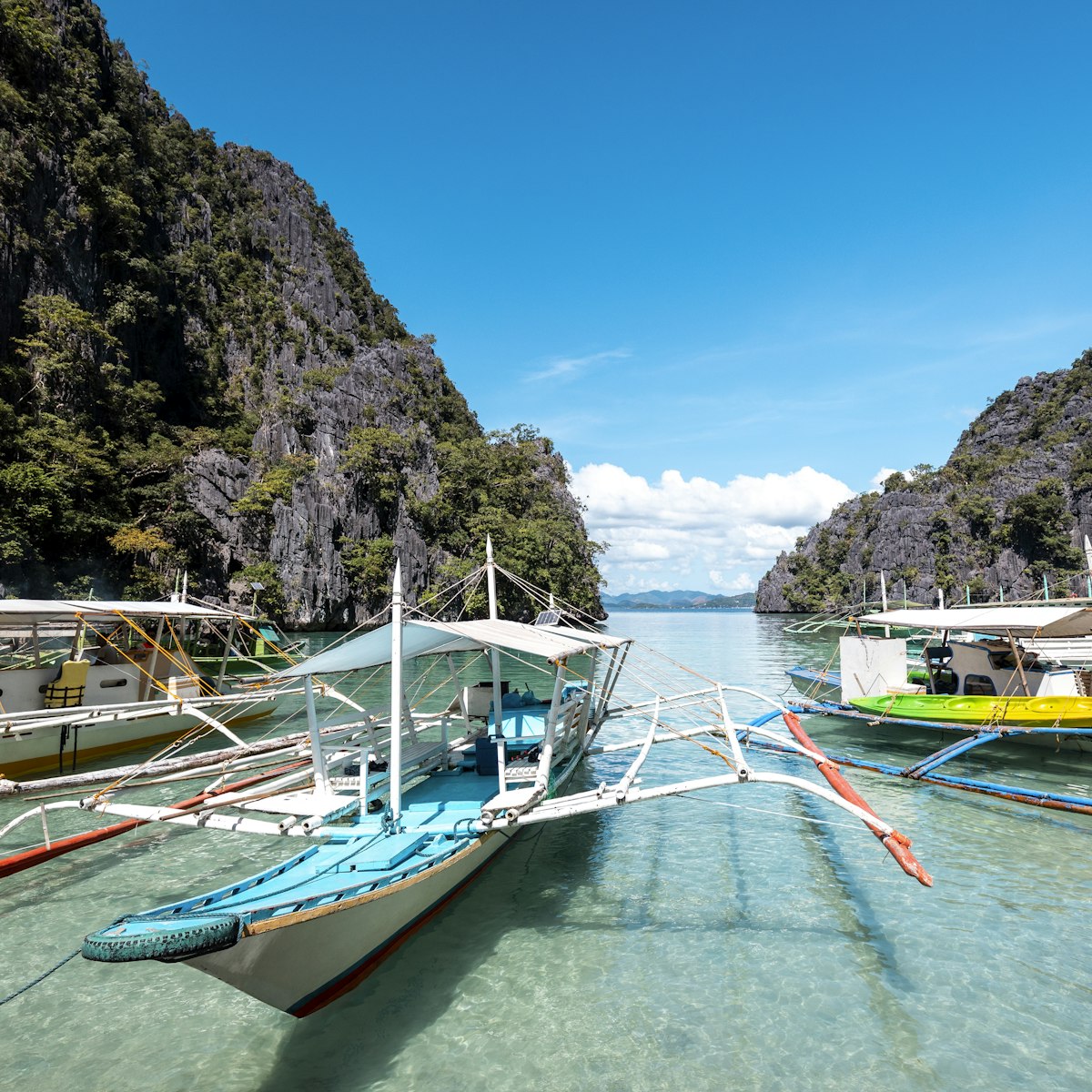
Coron Island
This island, only a 20-minute bangka ride from Coron town, has an imposing, mysterious skyline that wouldn’t be out of place in a King Kong film. Flying…
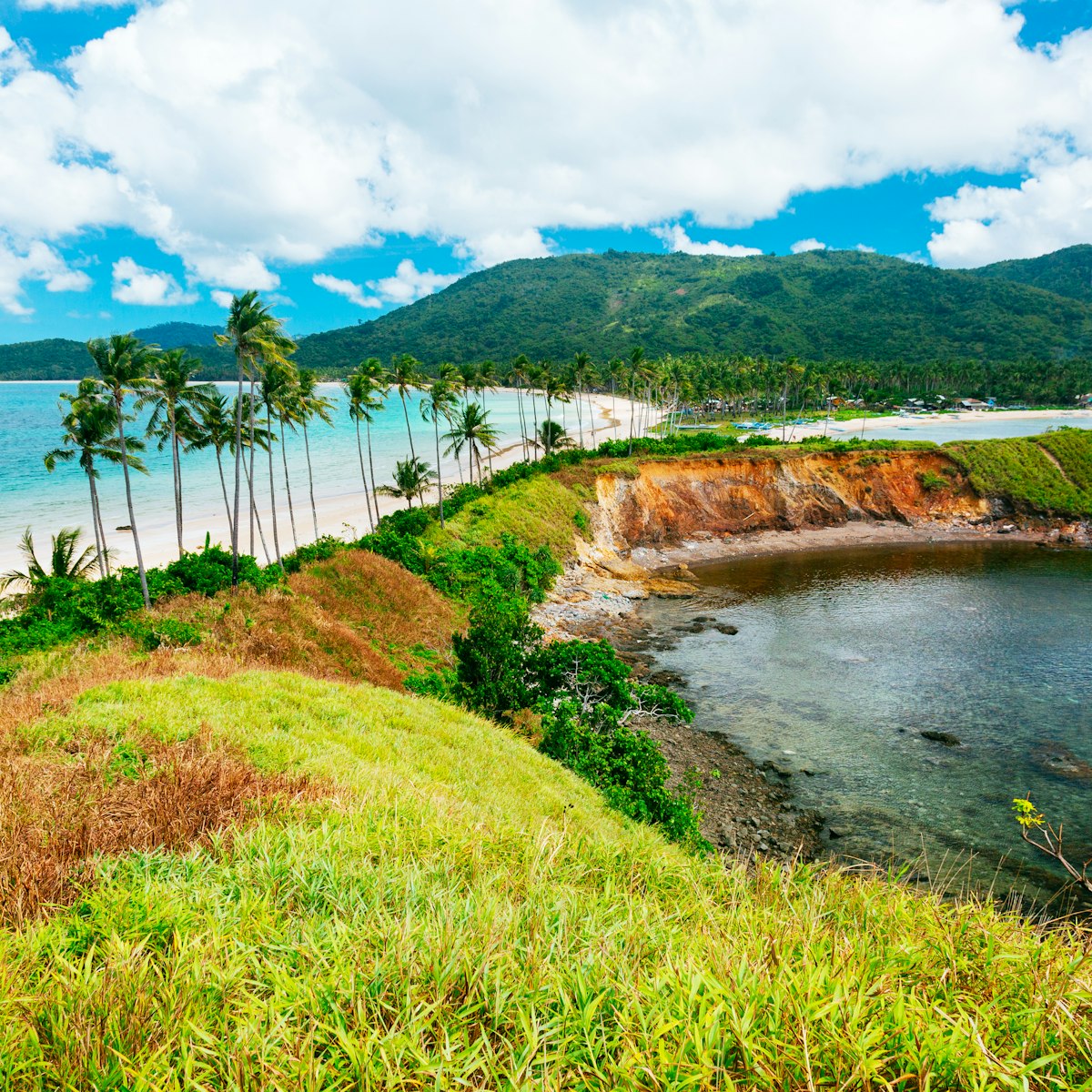
Nacpan Beach
For an easy day trip out of El Nido, head north by tricycle or motorbike to this incredible, golden-hued, 3km-long beach. Development has arrived in…
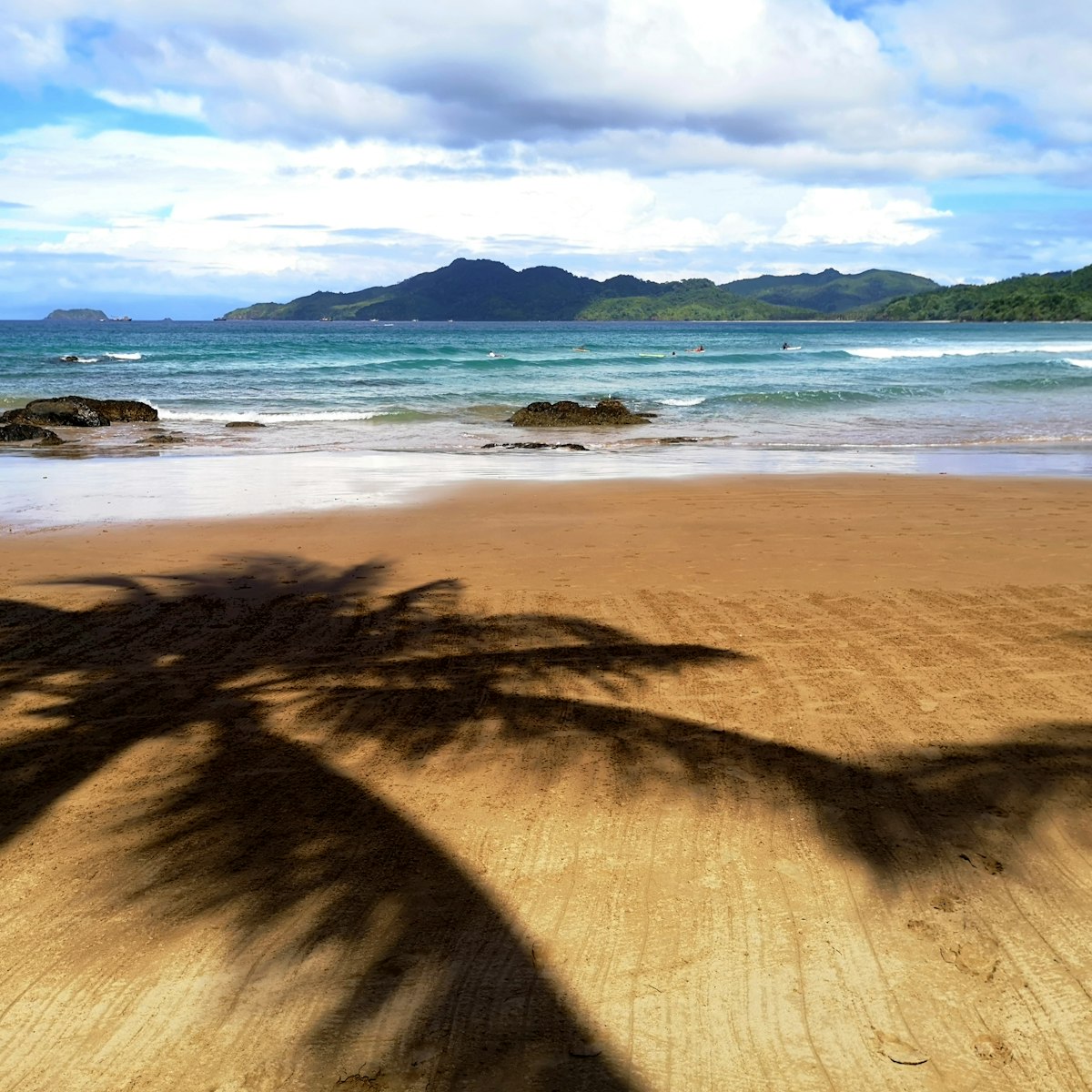
This incredibly beautiful, jungle-backed, stretch of golden sand toward the northern tip of mainland Palawan is the centre of El Nido's surfing community…
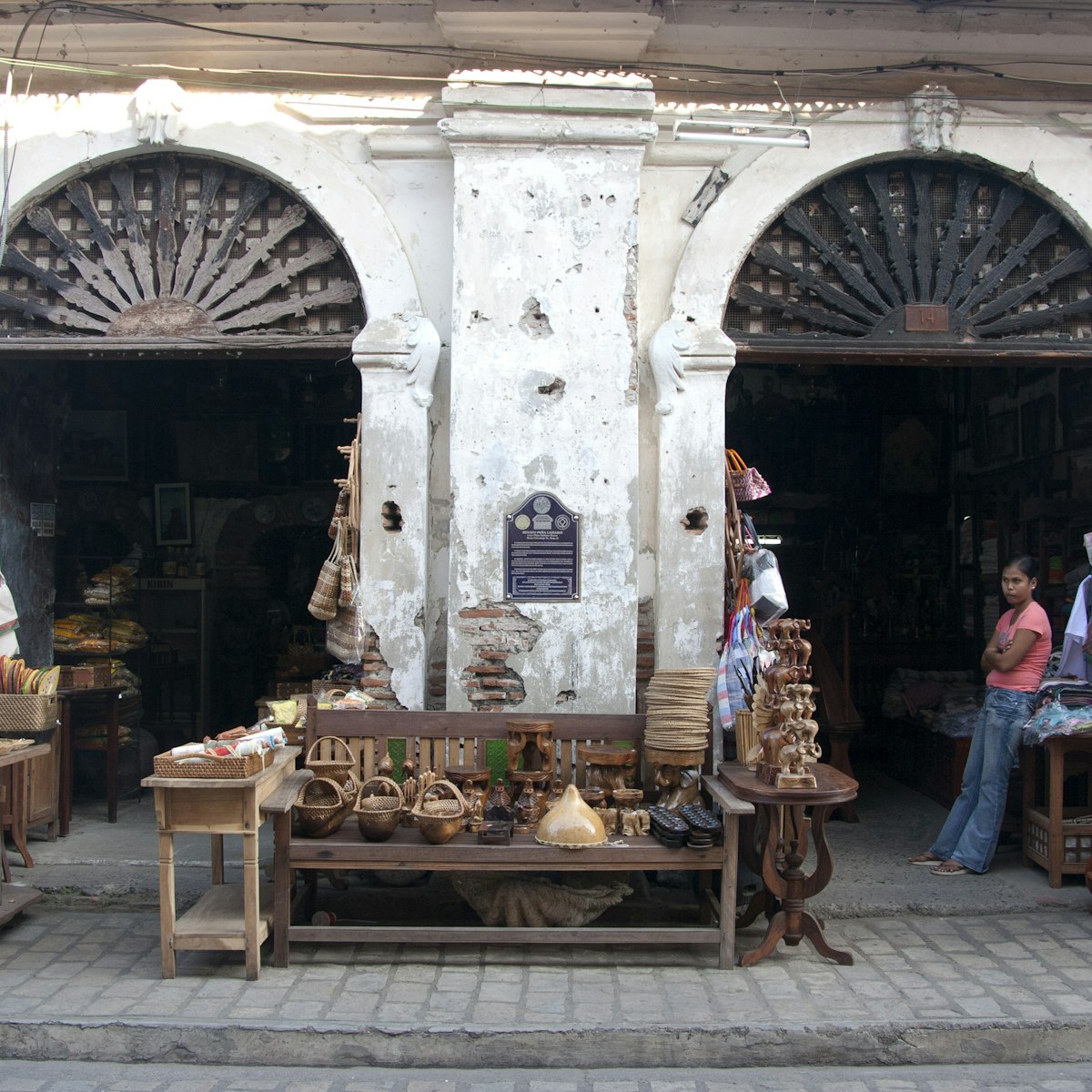
Mestizo District
The Mestizo District, or Kasanglayan ('where the Chinese live'), is a grid of streets hemmed in between Plaza Burgos and Liberation Blvd and bisected by…
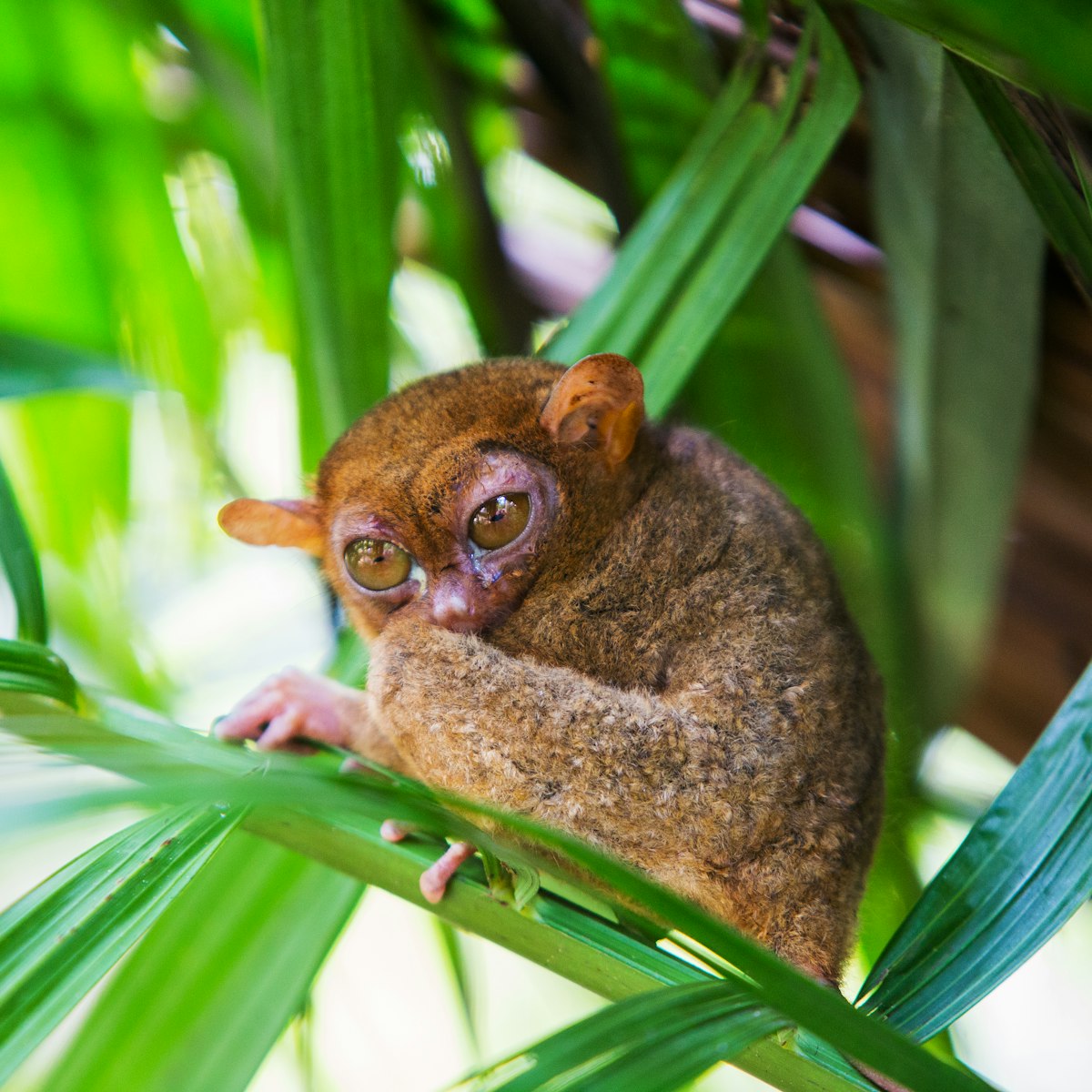
Philippine Tarsier Sanctuary
In Canapnapan, a barangay of Corella, you can see saucer-eyed tarsiers in the wild at the Philippine Tarsier Sanctuary. Over 100 of these territorial…
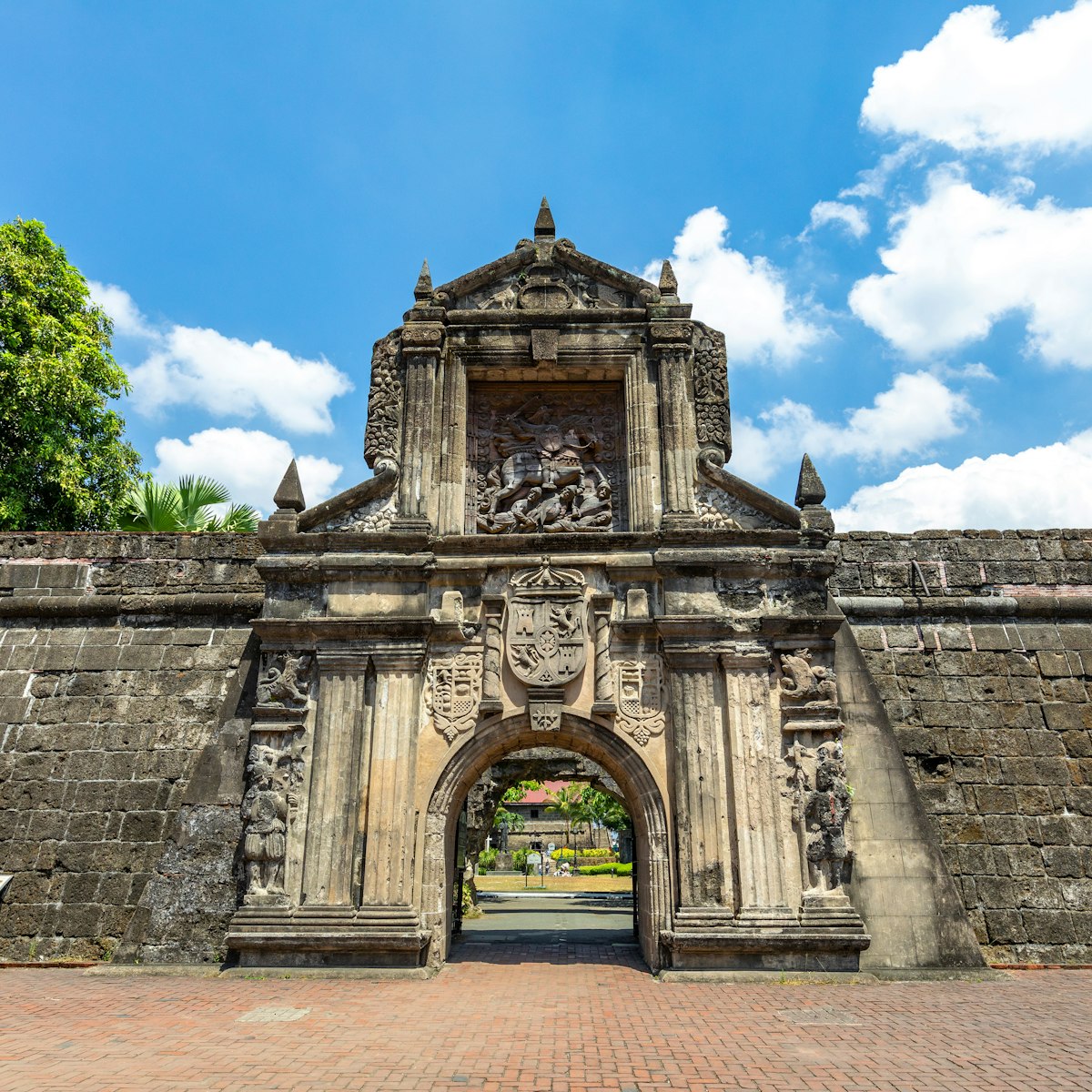
Fort Santiago
Guarding the entrance to the Pasig River is Intramuros' premier tourist attraction: Fort Santiago. Within the fort grounds is an oasis of lovely manicured…
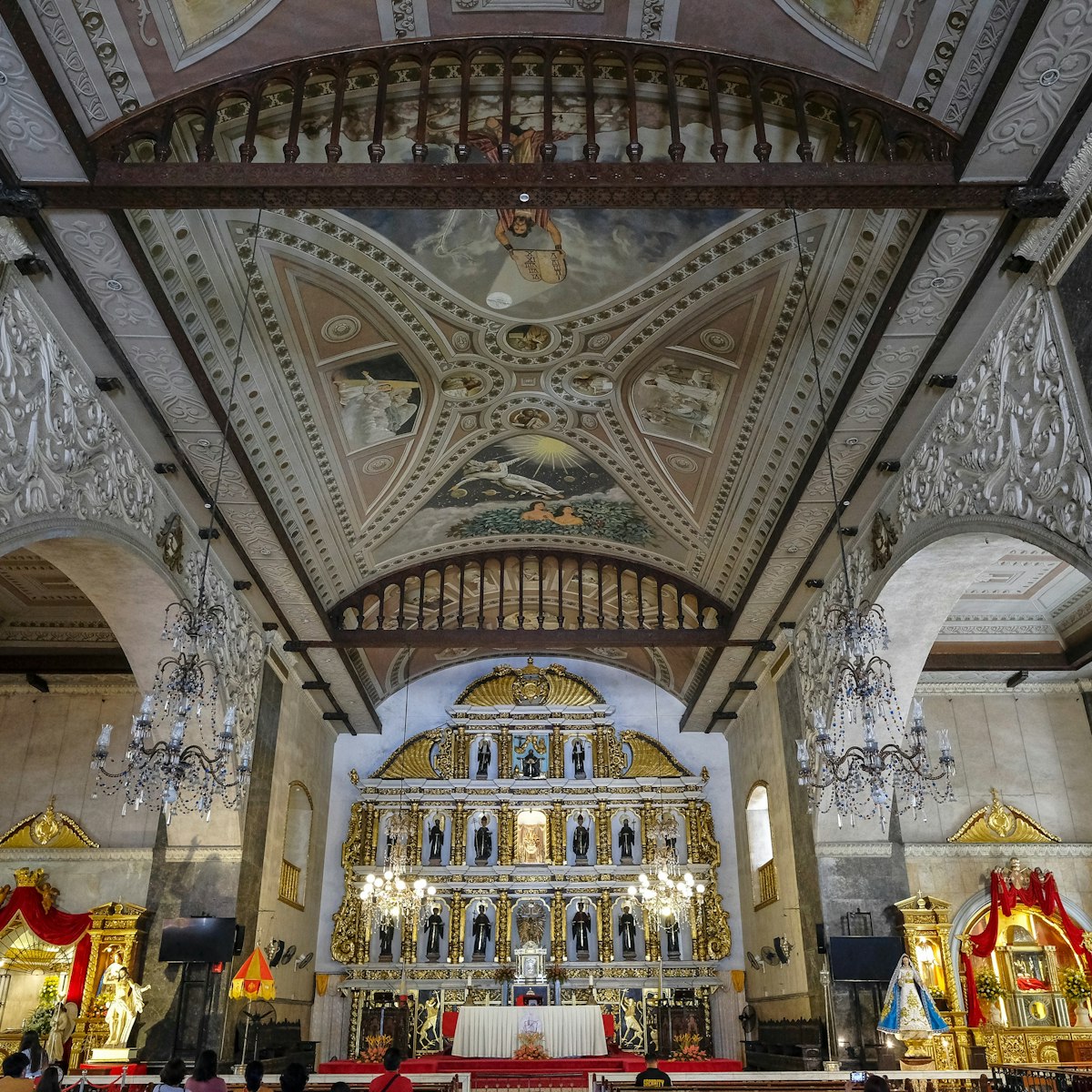
Basilica Minore del Santo Niño
Cebu's holiest church houses a revered Flemish statuette of the Christ child (Santo Niño) that dates to Magellan's time. The church is no stranger to…
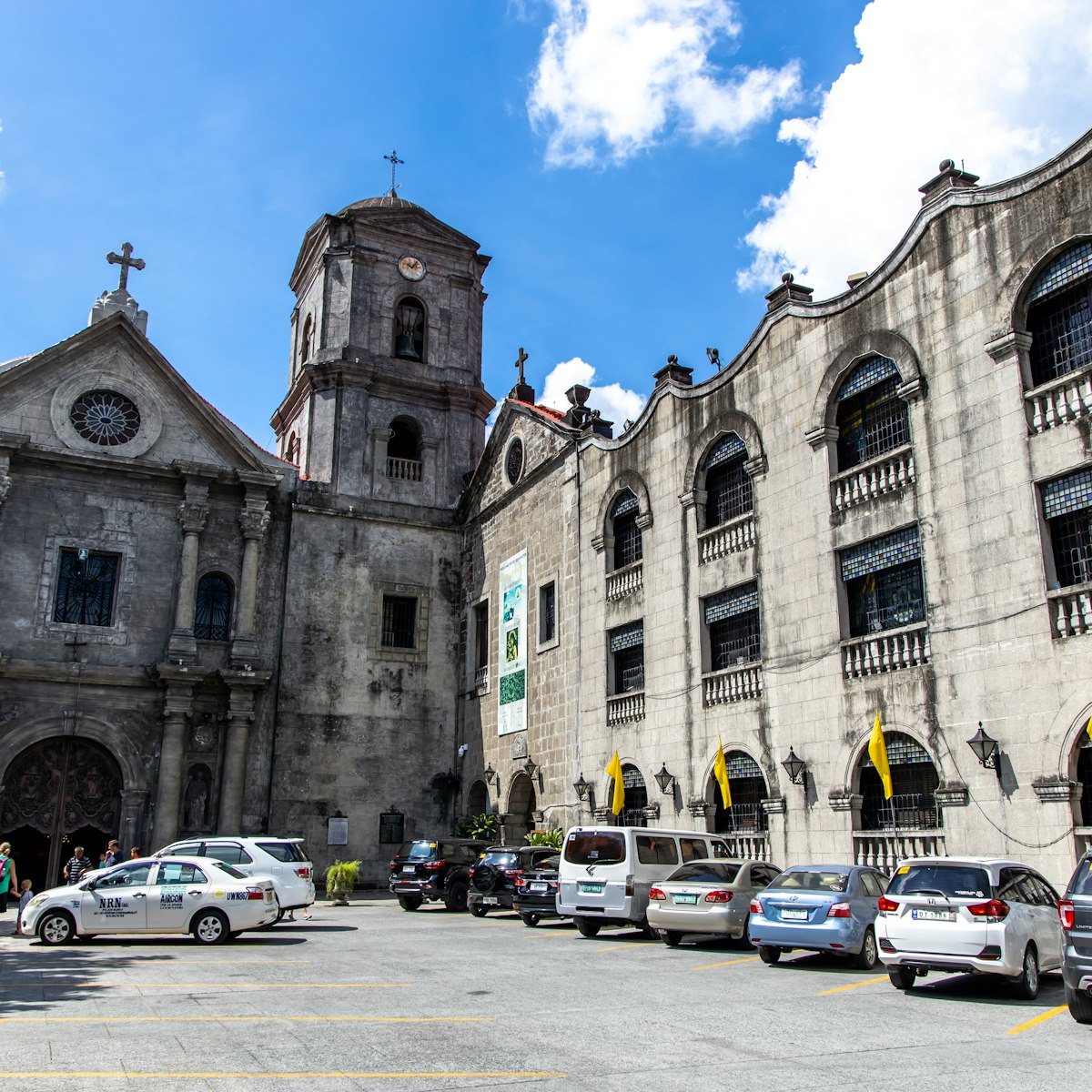
San Agustin Church
The San Agustin Church was the only building left intact after the destruction of Intramuros in WWII. Built between 1587 and 1606, it is the oldest church…
Latest stories from Philippines
Filter by interest:
- All Interests
- Adventure Travel
- Art & Culture
- Beaches, Coasts & Islands
- Food & Drink
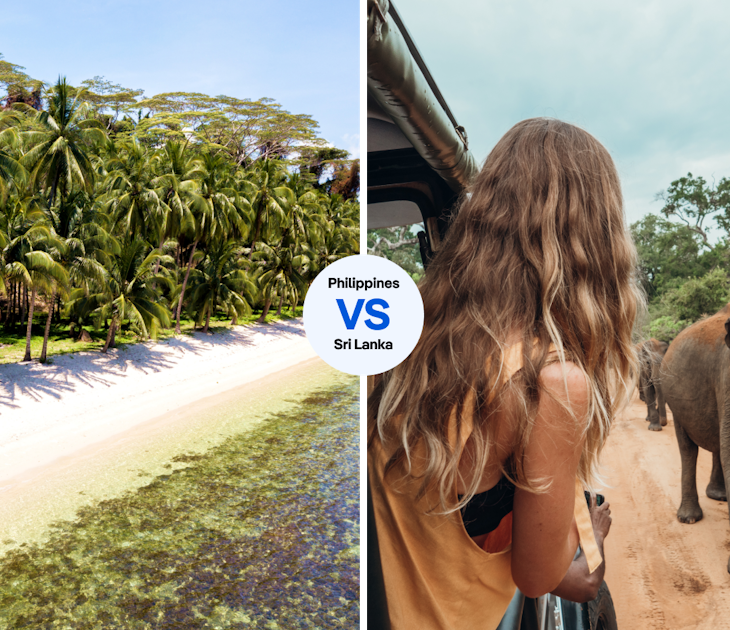
Feb 14, 2024 • 8 min read
We asked a pair of passionate writers to make the case for two of Asia’s most fabulous destinations.
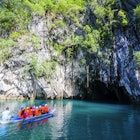
Apr 1, 2022 • 5 min read
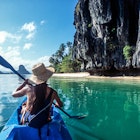
Jan 28, 2022 • 3 min read
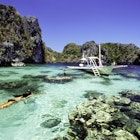
Apr 15, 2021 • 7 min read
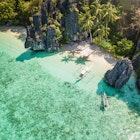
Feb 12, 2021 • 4 min read

Nov 5, 2020 • 2 min read
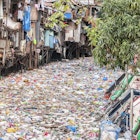
Jan 30, 2020 • 2 min read

Sep 10, 2019 • 7 min read
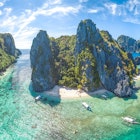
Aug 2, 2019 • 5 min read
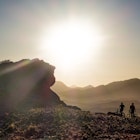
Jul 18, 2019 • 5 min read
in partnership with getyourguide
Book popular activities in Philippines
Philippines and beyond.
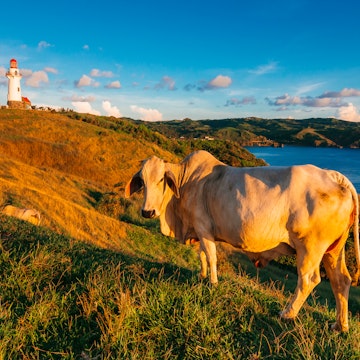
Philippine Travel Information System
Announcement
You may only register within 72 hours prior to your arrival or departure in the Philippines. Travelers are enjoined to present their eTravel QR code to flight boarding.
Update Existing Record
Philippine One-Stop Electronic Travel Declaration System
Initiative of the Government of the Philippines:
Security Alert May 17, 2024
Worldwide caution, update may 10, 2024, information for u.s. citizens in the middle east.
- Travel Advisories |
- Contact Us |
- MyTravelGov |
Find U.S. Embassies & Consulates
Travel.state.gov, congressional liaison, special issuance agency, u.s. passports, international travel, intercountry adoption, international parental child abduction, records and authentications, popular links, travel advisories, mytravelgov, stay connected, legal resources, legal information, info for u.s. law enforcement, replace or certify documents.
Share this page:
Philippines Travel Advisory
Travel advisory may 16, 2024, philippines - level 2: exercise increased caution.
Updated to reflect changes in the country summary and information on the Sulu Archipelago, Marawi City.
Exercise increased caution to the Philippines due to crime, terrorism, civil unrest, and kidnapping. Some areas have increased risk. Read the entire Travel Advisory.
Do Not Travel to:
- The Sulu Archipelago, including the southern Sulu Sea, due to crime, terrorism, civil unrest, and kidnapping .
- Marawi City in Mindanao due to terrorism and civil unrest .
Reconsider Travel to:
- Other areas of Mindanao due to crime, terrorism, civil unrest, and kidnapping .
Country Summary: Terrorists and armed groups have carried out kidnappings, bombings, and other attacks targeting public areas like tourist sites, markets, and local government facilities in the Philippines. Violent crimes are also common in the Philippines such as robbery, kidnappings, and physical assaults. Protests happen in the Philippines and could turn violent and/or result in traffic jams and road closures with limited capacity of the local government to respond.
There are stringent travel protocols and restrictions for U.S. government employees under the U.S. Embassy’s (Chief of Mission) security responsibility when traveling to certain areas of the country as stated below.
Read the country information page for additional information on travel to the Philippines.
If you decide to travel to the Philippines:
- Monitor local media for breaking events and adjust your plans based on new information.
- Avoid demonstrations.
- Enroll in the Smart Traveler Enrollment Program (STEP) to receive Alerts and make it easier to locate you in an emergency.
- Follow the Department of State on Facebook and Twitter/X .
- Review the Country Security Report for the Philippines.
- Visit the CDC page for the latest Travel Health Information related to your travel.
- Prepare a contingency plan for emergency situations. Review the Traveler’s Checklist .
The Sulu Archipelago and Sulu Sea – Level 4: Do Not Travel
Terrorist and armed groups in the Sulu Archipelago and the Sulu Sea have historically engaged in kidnappings for ransom on land and at sea, in addition to bombings and other attacks. These incidents often target foreign nationals, including U.S. citizens, local government entities, and security personnel.
The U.S. government’s ability to provide emergency services to U.S. citizens in this region is very limited. U.S. government employees under the U.S. Embassy’s (Chief of Mission) security responsibility are required to obtain special authorization to travel to these areas.
Visit our website for Travel to High-Risk Areas .
Marawi City in Mindanao – Level 4: Do Not Travel
Civilians face risk of death or injury from ongoing clashes between terrorist group remnants and Philippine security forces in Marawi.
The U.S. government’s ability to provide emergency services to U.S. citizens in Marawi City is very limited. U.S. government employees under the U.S. Embassy’s (Chief of Mission) security responsibility are required to obtain special authorization to travel to Marawi City.
Mindanao (except Davao City, Davao del Norte Province, Siargao Island, and the Dinagat Islands) – Level 3: Reconsider Travel
Terrorist and armed groups in Mindanao have historically engaged in kidnappings for ransom, in addition to bombings and other attacks. These incidents often target foreign nationals, including U.S. citizens, as well as civilians, local government entities, and security forces.
The U.S. government has limited ability to provide emergency services to U.S. citizens in large parts of Mindanao. U.S. government employees under the U.S. Embassy’s (Chief of Mission) security responsibility are required to obtain special authorization to travel to areas outside of Davao City, Davao del Norte Province, Siargao Island, and the Dinagat Islands.
Travel Advisory Levels
Assistance for u.s. citizens, philippines map, search for travel advisories, external link.
You are about to leave travel.state.gov for an external website that is not maintained by the U.S. Department of State.
Links to external websites are provided as a convenience and should not be construed as an endorsement by the U.S. Department of State of the views or products contained therein. If you wish to remain on travel.state.gov, click the "cancel" message.
You are about to visit:
- PRIVACY POLICY

The Philippines: Travel Guide for First Time Visitors

OVERVIEW GET HERE GET AROUND SEE & DO STAY & SLEEP FOOD & DRINK ENTERTAINMENT SHOPPING COSTS MORE INFO TIPS & HACKS INSPIRATION DON’T FORGET

Learn useful information about the Philippines. This Philippine travel guide summarizes everything from transportation, destinations, food, drinks, accommodations, and so much more.
Introduction
The Philippines is an archipelago located in Southeast Asia in the western Pacific Ocean. This archipelago is a country and officially known as the Republic of the Philippines . It consists of over 7,600 islands with a total land area of 301,780 square kilometers (116,518 sq mi). The Philippines Is divided into three island major groups: Luzon , Visayas , and Mindanao . These island groups are further divided into 17 regions which are then divided into 82 provinces .
The capital of the Philippines is Manila , and one of the most populous cities in both the Philippines and the world.

Given its location so close to the equator makes the country prone to earthquakes and typhoons, but also endows it with abundant natural resources and some of the world’s greatest biodiversity .
The Philippines has become a popular holiday destination due to it’s tropical weather, diverse islands, pristine white-sand beaches, outdoor activities, marine life, adventure, and Filipino hospitality.

Best Time to Visit
It’s best to visit the Philippines during the dry season . Dry season in the Philippines spans from November through April. These are the summer months in this country.
Be aware that temperatures and humidity levels are particularly high in April and May.
The best time to be a beach bum and explore the islands is from March to May.
NOTE: Booking for summer trips should be done as early as possible, at least a month before your travel dates, since resorts get fully booked early.
The period from June to October is the rainy (wet) season and is best avoided due to the high possibility of typhoons. The typhoons can not only be destructive, but most tours and activities are cancelled under such circumstances. Transportation via plane and boat is also seriously impacted as well. This happens frequently so beware!
This Philippine travel guide recommends traveling in April-May or in November-December, just before and just after the rainy season. This will likely bring fewer crowds, yet pleasant weather, and is also a great time to score a travel deal.
READ MORE: Climate & Weather of the Philippines
READ MORE: When & Where to Visit the Philippines: A Month by Month Guide
READ MORE: Facts About the Philippines
GETTING HERE
Manila Int’l Airport
BUS TERMINAL
Ports of Entry
Most international travelers take a plane to get to the Philippines. Although there are many international airports throughout the Philippines, the main hub for most airlines is in Manila , the capital city of the Philippines. The following is a list of the international airports in the Philippines.
Manila’s Ninoy Aquino International Airport (NAIA) is the country’s main international airport. This airport has a bad reputation for delays due to congestion and is often referred to as one of the worst airports in the world.
Mactan-Cebu International Airport is the second busiest airport in the Philippines, and a major domestic and international hub in the Central Visayas region for Philippine Airlines , AirAsia , and Cebu Pacific . Passengers can connect to a long list of domestic destinations which is comparable to the route network out of Manila . It currently serves international flights from major international hubs in Asia such as Hong Kong, Singapore, Beijing, Tokyo, and Seoul. In addition, there are also flights to Dubai and Doha operated by Emirates and Qatar Airways .
Clark International Airport is a former US Air Force base located 50 miles north of Manila. It is the closest current alternate airport to Manila, where AirAsia announced it would base its Philippine operations. International destinations include Singapore, Dubai, Doha, Hong Kong, China, and Seoul. While it has a broad range of domestic destinations, the routes are limited so domestic connections may be a bit problematic.
The Davao (Francisco Bangoy) International Airport is the third busiest in the Philippines and serves a handful of domestic destinations. Both Cebu Pacific and Silk Air operate flights to Singapore. AirAsia operates flights to/from Kuala Lumpur, Malaysia.
Completed in 2007, the new Iloilo International Airport serves as a hub for Cebu Pacific . The airline operates flights to Hong Kong and Singapore from the largest city in the Western Visayas . Guests can arrive at the airport to take a six hour bus ride to Caticlan/ Boracay . However, travellers can access the resort island through either Caticlan Airport or Kalibo Airport .
While Bacolod Airport is not designated as an international airport, it has charter flights to/from Seoul, South Korea. That route is currently served by Philippine Airlines on a seasonal basis.
Tagbilaran is the capital of Bohol where the previous airport resided. A new international airport on Panglao island opened in 2018 called Bohol-Panglao International Airport . Philippine Airlines operates flights to Seoul, South Korea. Local officials expect more flights to come after the new airport opens.
Kalibo International Airport benefits from its distance to Boracay , as it is the closest international airport to the resort island. The airport serves a broad range of Asian hubs such as Singapore, Seoul, Beijing, Hong Kong, and Kuala Lumpur. Upon arriving, passengers can take a two hour bus ride to the Caticlan boat jetty on their way to the shores of Boracay.
Puerto Princesa
Puerto Princesa International Airport serves Puerto Princesa City and the surrounding area and is also Palawan ‘s primary airport. The new airport was opened recently to meet the growing number of tourists from within the Philippines and from abroad to visit the natural wonders found on the island. International services are still relatively new here, though are expected to grow over the next few years. For now, Philippine Airlines operates the only international route from Palawan – to Taipei, Taiwan.
Located in the northern province of Ilocos Norte in Luzon, Laoag International Airport is designated an International airport with regular chartered flights to China. China Eastern Airlines operates a flight to Guangzhou, China. Philippine Airlines operates the only domestic flights to the city from Manila .
READ MORE: Airports in the Philippines
Getting to the Philippines by land is impossible since it is surrounded by water, land connection to neighboring countries is non-existence.
Traveling by sea from any country to the Philippines is not very common. In fact, the only route a foreign tourist can take is from Sandakan, Sabah, Malaysia to Zamboanga through Aleson Shipping Lines. Usually, there is only one trip every week, Tuesdays for Sabah to Zamboanga, and Mondays for Zamboanga – Sabah.
READ MORE: Seaports in the Philippines
GETTING AROUND
There are several modes of transportation in the Philippines. Modes of transportation vary from city to city and in the provinces. The following are the modes of transportation that are generally available throughout the Philippines.
Car for Hire
Motorcycles
Motorized Outrigger
Ride-Sharing
There are few businesses where you can rent a bicycle to get around the local city, town, or municipality and neighboring towns.
Buses are not used to get around most cities. More often, buses are used to get in the city from other towns and cities, and vice versa.
It won’t take too much effort to find a car for hire. Rate starts at 2,000 PHP ($40 USD) and can go higher depending on the type and model of the car. The cost comes with free fuel, professional driver, and insurance.
Car Rentals
To rent a self-drive car, one needs to have a valid driver’s license and ID. Some companies even ask for proof of billing and have a minimum age requirement. Most companies require full payment of rental and cash bond which is usually 5,000 PHP ($100 USD). For foreigners, a passport may be required. Rate starts at 1,500 PHP ($30 USD).
Jeepneys are used when traveling outside the city limit. They have set routes so make sure to check out the route of the vehicle before getting into it. Fare ranges from 5 PHP ($ 0.1 USD) to 30 PHP ($0.6 USD) depending on the origin and destination.
Renting a motorcycle for a day or throughout your stay in the city can give you more freedom to go wherever you want at your own time. Motorcycle rental starts at 250 PHP ($5 USD) per day and can go higher depending on the model or type of motorcycle. Helmet and insurance are usually included. Most cities and municipalities have rental shops. Some rental companies deliver the unit to your hotel.
Motorized Outrigger (Bangka)
Motorized Outrigger or Bangkas and are also known as pump boats. Bangkas are glorified water taxis made of traditional building materials like wood and bamboo. They are surprisingly sturdy boats that can withstand rough seas to an extent. Bangkas are the cheapest form of ferry transport and most often used for short-distances.
Ride Sharing
Ride-sharing is available in a few of the larger cities but not common in most of the Philippines.
Shuttles are typically used by hotels to transport their guests.
Taxis are used only in the larger cities. The Grab Taxi app is available in only a few of the larger cities.
Trains are only available in Manila to Calamba, Laguna up to Lucena City, Quezon .
The tricycle is the main mode of transportation when getting around most of the Philippines. You can simply hail one just outside your hotel, restaurants, business establishments, and tourists attractions. Minimum fare for short distance rides is 10 ($.20 USD) per person
READ MORE: Articles on Transportation
SEE & DO
Attractions.
There are many attractions throughout the Philippines. Each destination has many attractions to offer. In addition to this Philippine travel guide, we have written guides about each destination and the attractions it has to offer. The following is an article on the most popular attractions in all of the Philippines.
READ MORE: Best Things to See in the Philippines
There are many activities to do in the Philippines, the best and most popular are outdoors.
Each destination has many activities to offer. We have written guides about each destination and the activities it has to offer. The following is an article on the most popular activities throughout the Philippines.
READ MORE: Best Things to Do in the Philippines
Events & Festivals
There are many events and festivals throughout the Philippines. The largest Philippine islands offer a variety of events and festivals. The following is a list of the most popular events and festivals in the Philippines.
READ MORE: Annual Events & Festivals in the Philippines
STAY & SLEEP
There are several types of accommodations to stay at when traveling around the Philippines.
The following is a list of the most common accommodations available throughout the Philippines.
- Campgrounds
- Pension Houses
- Bed & Breakfasts
- Variety of AirBnB Properties
Booking accommodations online almost always saves you money and time in the Philippines and guarantees that you have a place to stay when you arrive at your destination.
We use and recommend booking online to save money using HostelWorld , Agoda , Booking.com, and AirBnB.
READ MORE: Various Types of Accommodations in the Philippines
FOOD & DRINK
Aside from the traditional food from several ethno-linguistic groups in the country, the Filipino cuisine has influences from Chinese, Spanish, and American brought by trading and colonization in the past. Considering the thousands of islands and agricultural land in the country, there’s definitely an abundance of seafoods and tropical fruits which creative Filipino cooks transformed into appetizing dishes worth trying.
Filipinos enjoy different kinds of drinks, from locally grown kapeng barako, salabat (ginger tea), and lambanog (palm liquor) to fruit juices, sodas, beers, wines, and whiskeys. Most big malls and grocery stores carry imported drinks as well.
Restaurants
With thousands of foreign tourists exploring the country every year, expect to see restaurants of various cuisines spread all over the country, from Chinese, Korean, and Japanese to American, Italian, Spanish, and German. Several Filipino restaurants even carry international dishes on their menu so it’s not like you are limited to eating local dishes only throughout your day.
READ MORE: Articles about Food & Drink
ENTERTAINMENT & NIGHTLIFE
Entertainment.
The Philippines is home to some of the world’s best entertainers and performers so finding entertainment is never a problem. Catch local singers, dancers, and actors in various cinemas and theaters such as the Cultural Center of the Philippines, Newport Performing Arts, Kia Theater, and many others.
Manila , undoubtedly, has a vast nightlife among other areas in the country. Outside Manila, Boracay Island , and Cebu City have interesting night scenes and coolest parties.
READ MORE: How to Stay Safe in the Philippines
READ MORE: Articles about Entertainment & Nightlife
From ultra-modern shopping malls to street markets, there are many shopping venues in the Philippines.
At least one shopping mall can be found in every city of the Philippines in addition to street markets.
Most malls provide just about every service from grocery shopping to medical and dental services. Malls also offer a wide range of food & drinks and things to see and do.
The following are articles about shopping in malls … a very common form of shopping in the Philippines:
- Top 10 Largest Malls In The Philippines
- Shopping at Malls in the Philippines: What YOU Need to Know
- Directory of Shopping Malls in the Philippines
READ MORE: Articles about Shopping
Travel Costs
Accommodation.
A bed in a hostel dorm costs from 350 PHP ($7 USD), but smaller dorms can cost from 500 PHP ($10 USD). For a private double, prices start around 700 PHP ($14 USD).
Most budget hotels begin at 700 PHP ($14 USD) per night for a double room and usually include free wifi and breakfast. For a three-star hotel , prices begin around 1,400 PHP ($28 USD) per night. Airbnb is also widespread throughout the country, with private rooms starting from as little as 500 PHP ($10 USD) per night. For entire apartments, expect to pay at least 1,400 PHP ($28 USD) per night.
Resorts and luxury accommodations vary greatly from 1,400 PHP ($28 USD) to 5,000+ PHP ($100+ USD). However, there are some really nice resorts and luxury accommodations which are surprisingly affordable.
We use and recommend booking online to save money using HostelWorld , Agoda , Booking.com, and AirBnB.
Local food is extremely cheap, with street food costing under 50 PHP ($1USD). For an inexpensive meal at a local restaurant, prices start around 100 PHP ($2 USD). For a meal at a mid-range restaurant with drinks and table service, expect to pay from 200 PHP ($4 USD). Knowing that their target customers are primarily tourists, Western food venues can be pricey compared to Filipino food. Also, some of the ingredients need to be imported, which contributes to the higher cost. Western food (burgers, pizza, pasta, etc.) is much more expensive but is still relatively affordable at around 200 PHP ($4 USD) for a meal and drink.
Fast food like McDonalds will cost around 200 PHP ($4 USD). A beer at the bar will cost around 50-100 PHP ($1–2 USD).
A week’s worth of groceries will cost between 300-600 PHP ($6-12 USD) per person. However, food in this country is so inexpensive, and kitchens & refrigerators are hard to come by, I don’t recommend cooking your meals here since there is plenty of delicious street food to eat at very cheap prices. You won’t make it as good as they do and the food is too delicious to miss!
Transportation
There are many modes of transportation available in the Philippines and each varies greatly.
Public Transportation is cheap. Bus services on the islands are inexpensive. Local buses (called jeepneys) are the most common type of transportation in towns and cities. The fare is usually between 7-25 PHP PHP ($.20–.50 USD).
On islands without a bus system, a taxi or tricycle is the only form of transport with fares starting at 50-500 PHP ($1-$10) USD for short trips.
Taxis are everywhere, and they’re very cheap. Most fares shouldn’t cost you more than 500 PHP ($10 USD) around town.
To get between islands, you’ll need to take a boat or to fly. There are ferries that connect the island together since they aren’t too far apart but, generally speaking, flights are the most realistic option.
Flights between islands usually cost about 2,000-3500 PHP ($40-70 USD). However, this isn’t the cheapest way to travel. It’s only recommended if you have limited time.
We recommend booking online to save money using Skyscanner , momondo , Kayak , kiwi.com .
Attractions & Activities
Most attractions and activities in the Philippines are pretty cheap. Most attractions throughout the area are FREE to enter, though some of the more well known and popular ones cost 5-100 PHP ($.10-$2 USD) to enter.
Depending on the activity, most day tours only cost around 1,000-1,500 PHP ($20-30 USD), oftentimes less. You have more bargaining power if you go with a group. If you are expecting to do some climbing, remember to pack some warm layers. It gets cold at the top!
Other activities such as Island Hopping, scuba diving, helmet diving, swimming with whale sharks, jungle trekking, canyoning, ATVs, jet skis, wakeboarding, cruises, parasailing, horseback riding, cultural experiences, and tours can cost as much as 1,250-5,000+ PHP ($25-100+ USD).
The Philippines is one of the least expensive places to learn how to scuba dive. Learning to scuba dive usually costs about 15,000-20,000 PHP ($300-400 USD), but often includes FREE accommodation for the duration of the course, which lasts three or four days.
Always book your tours and activities when you arrive. Stick to travel agents who are selling on the ground. If a travel agent won’t negotiate with you, move on to the next until you find one that will. Booking tours online is almost always more expensive.
Typical Costs in the Philippines in 2023:
- Hostel Dorm Bed: 300-600 PHP ($5–10 USD) night
- Budget Hotel: 700 PHP ($14 USD) night
- Mid-Range Hotel: 700 PHP ($14 USD) night
- Street Food: 50-150 PHP ($1–3 USD) meal
- Restaurant Meals: 200-300 PHP ($4–6 USD) meal
- Local Beer: 50-100 PHP ($1–2 USD) bottle
- 1.5L Bottle of Water: 38 PHP ($.75 USD) bottle
- Jeepney Ride: 7-25 PHP ($.20–$.50 USD) ride
- Tricycle Ride: 20-100 PHP ($.5-$2 USD) ride
- Taxi: 75-500 PHP ($1.50-$10 USD) ride – use GrabTaxi app
- Long-Distance Bus Ride: 400-500 PHP ($8–10 USD) ride
- Public Ferry Ride: 200-300 PHP ($4–6 USD) ride
- Domestic Flight: 2,000-3,500 PHP ($40–70 USD) flight
- Island-Hopping: 1,000-1,500 PHP ($20-30 USD) trip
- Diving with Whale Sharks: 1,250 PHP ( $25 USD) trip
Suggested Budget
Use the chart below to get an idea of how much to budget daily. Actual amounts will depend on YOUR travel style. Keep in mind these are daily averages … some days you’ll spend more, some days you’ll spend less. Prices are in USD.
READ MORE: Itineraries & Budgets
BEST NO-FEE INTERNATIONAL DEBIT & CREDIT CARDS
CHASE SAPPHIRE CREDIT CARD

VIEW DETAILS
CHARLES SCHWAB DEBIT CARD

CAPITAL ONE VENTURE CARD

ADDITIONAL INFO
Money matters.
Banks, ATMs, and money-changers can be found in the city. If you are exploring outside the city limits or the neighboring islands, make sure to bring enough cash that will last until the next time you get to an ATM or bank since most tours, transportation, and some budget accommodations only accept cash.
READ MORE: Money in the Philippines: Everything You Need to Know
Health & Safety
While the Philippines is a safe country to visit, there are things you need to keep in mind to ensure your safety throughout the duration of your stay.
Consult your hotel or resort front desk as they are more likely to give you reliable information than a random stranger on the street. If you really need to, trust your gut feeling when approaching a stranger.
READ MORE: How to Avoid Scams & Thieves in the Philippines
There are many things to consider when traveling in order to stay safe … things that we may not be accustomed to during our normal everyday lives.
The following are articles about tips on how to stay safe while traveling in the Philippines:
- 6 Common Accidents to Avoid
- How to Beat the Heat in the Philippines
- Taxi Safety Tips: Dos and Don’ts
- Motorbike Safety Tips
- Beach & Ocean Safety Tips
- Sun Safety Tips
Staying fit & healthy can be challenging when traveling in the Philippines.
The tropical Philippines climate requires you to prepare for illnesses that you may not normally be accustomed to.
The following are our Top 10 Tips for Staying Healthy while Traveling in the Philippines :
- Stay Hydrated but Only Drink Bottled Water
- Maintain a Balanced Diet
- Get Plenty of Rest
- Allow Your Body Time to Adjust
- Keep Active
- Sanitize Often!
- Be Aware of Food Safety Concerns
- Take Your Vitamins
- Practice Safe Sex
- Be Prepared Should You Get Sick
READ MORE: Stay Healthy in the Philippines: How to Avoid Getting Sick
Staying Connected
You need to have a local-based SIM card in order to stay connected when in the Philippines. Network giants such as Globe and Smart have SIM cards you can use to make calls, send text messages, and also to connect to the Internet. A SIM card costs around P50 ($1 USD) and usually comes with a FREE load worth P50 ($1 USD). You can buy a card containing a code you can enter on your phone to replenish your load or buy an electronic load that is available almost anywhere in the city.
While you may not have problems with signal when in the city, it is not always the case when on islands or in remote areas of a province. So when arranging for transportation pick up, say when renting a boat to take you to and pick you up from the island, it would be best that you make it clear what time you need to be picked up before the boatman leaves.
Don’t Forget
There is a nationwide ban which prohibits smoking in public places including indoors, the streets, on sidewalks, in restaurants , and on public transportation, requiring smokers to use designated smoking areas. Selling tobacco to and purchasing from/for minors is also prohibited. Violators are subject to fines (up to 5000 PHP | $100 USD) and even 4 months in prison.
The minimum legal drinking age at 18. Alcohol such as beer and hard drinks can easily be bought in grocery and convenience stores. The most common alcoholic beverage is beer, generally served cold. Local alcoholic drinks include tuba (coconut wine which is usually very strong) and potent moonshine-like clear liquors made from sugar or fruit. Imported beer, wine, and name brand hard alcohol are available but expensive.
Drugs are illegal in the Philippines. Don’t use, buy, or sell any non-prescription drugs while in the Philippines … not even marijuana. It is considered an especially heinous crime to buy from, for, or sell drugs to children. The penalties are severe … up to and including death.
Public nudity is illegal in the Philippines and is not tolerated. Most locals consider it offensive. There are laws which prohibit provocative and erotic clothing and swimwear, therefore carefully consider your clothings and swimwear choices to make certain they are not too revealing.
READ MORE: Practical Travel Information about the Philippines
TIPS & HACKS
Tips & hacks.
The following are our Top 10 Tips When Traveling in the Philippines :
- Be aware that a tourist VISA is only 30 days. You can extend it upon arrival, or within the first 30 days, for an additional 30 days for a fee of approximately 3,000 pesos.
- Don’t buy into the fear factor. The Philippines has an unjustified reputation of being a dangerous place. It’s true there are security guards everywhere, but that is to deter theft.
- Manila is NOT the Philippines. Get outside of the cities to see the real Philippines.
- Don’t over plan. Boats, buses, and even airplane schedules are notoriously unreliable. Be flexible.
- Check the weather. The weather varies greatly throughout the Philippines daily.
- Typhoons can have a huge impact on your plans. Account for this when planning your trip.
- It’s not cool to raise your voice or show outward frustration in public.
- Be polite at all times. Realize that your country’s sense of humor may be different from Filipino humor and take this into account when interacting with Filipinos and while in public places.
- Things move at a slower pace. Accept it… don’t get frustrated… but do account for it.
- Don’t drink the tap water… but stay hydrated! Save money by buying large bottles (6-10 liters) of water and using it to fill your water bottle or hydration bladder in your backpack.
For a complete list of our tips and hacks, checkout the following Philippine travel guide and be sure to download a FREE copy for yourself.
READ MORE: Ultimate Travel Tips & Hacks for the Philippines
NOTE: Consider inserting the Download Guide box here …
Useful Travel Apps
Apps for smartphones and tablets can be useful both before you leave and while you’re traveling. Most are available for iPhones and Android phones.
These apps for savvy travelers aid you in having an unforgettable and stress-free vacation while saving you time, money, and frustration.The following is our list of 10 Top Travel Apps when traveling in the Philippines :
- TripAdvisor
- XE Currency
- Google Maps
- AccuWeather
Be certain to download and set up apps BEFORE leaving on your trip to make certain each is installed and working properly.
For our complete list of travel apps that we use and recommend while traveling in the Philippines, checkout our checklist below. Download a FREE copy for yourself as a PDF.
READ MORE: The Best (Must Have) Travel Apps for the Philippines
RECOMMENDED PRODUCTS
I always carry a Camelbak Hydration Pack with me when traveling. Not only does it allow me to pack all my daily gear and snacks, but it also has a 3-liter water bladder which holds enough water to get me through the entire day.
Bluetooth Speaker
Compact yet mighty, a bluetooth speaker setup is a breeze, and the sound quality it delivers for its size is nothing short of impressive. Beyond its audio prowess, it boasts exceptional durability, making it an ideal companion for outdoor adventures.
UV Shirt is an essential when travelling in a tropical country. Providing reliable protection during long hours in the water, not only comfortable but also ensures a secure shield against the elements.
Snorkel Gear
For my island-hopping escapades, a snorkel gear set has become indispensable. Designed to enhance the joy of snorkeling and free diving, each piece ensures comfort and functionality. Together, they create an immersive and enjoyable underwater experience.
Adventure Camera
As a long-time enthusiast of GoPro cameras, I can attest to their user-friendly nature, excellent image stabilization, and impressive footage quality. Waterproof and rugged, the GoPro is my reliable companion for capturing adventures in any environment.
When it comes to beach footwear, aqua shoes offer exceptional support, breathability, and overall comfort. Well-crafted and sturdy, it provides effective protection against rocky terrain, quick drying for added convenience, and easy maintenance. A must-have for any outdoor enthusiast.
CLICK FOR MORE TRAVEL GEAR
INSPIRATION
We hope that the following photos inspire you to experience the Philippines and all that it has to offer.

The following video should give you an idea of what life is like in the Philippines.
Don’t Forget …
Book online & save money.
Book Your Trip Flights Hotels Transportation Travel Insurance No-Fee Cards

About the Author

Patrick is an entrepreneur, digital nomad, explorer, and photographer. Patrick is always in search of fun and adventure. He is well travelled throughout the world, and although location independent, his home base is Phoenix, Arizona in the USA. Patrick loves island lifestyle which is no wonder why he is so interested in spending time in the Philippines with it’s over 7,000 islands. Patrick created this site to share his knowledge of and experiences in the Philippines with Filipinos as well as other foreigners.
Leave a Comment X
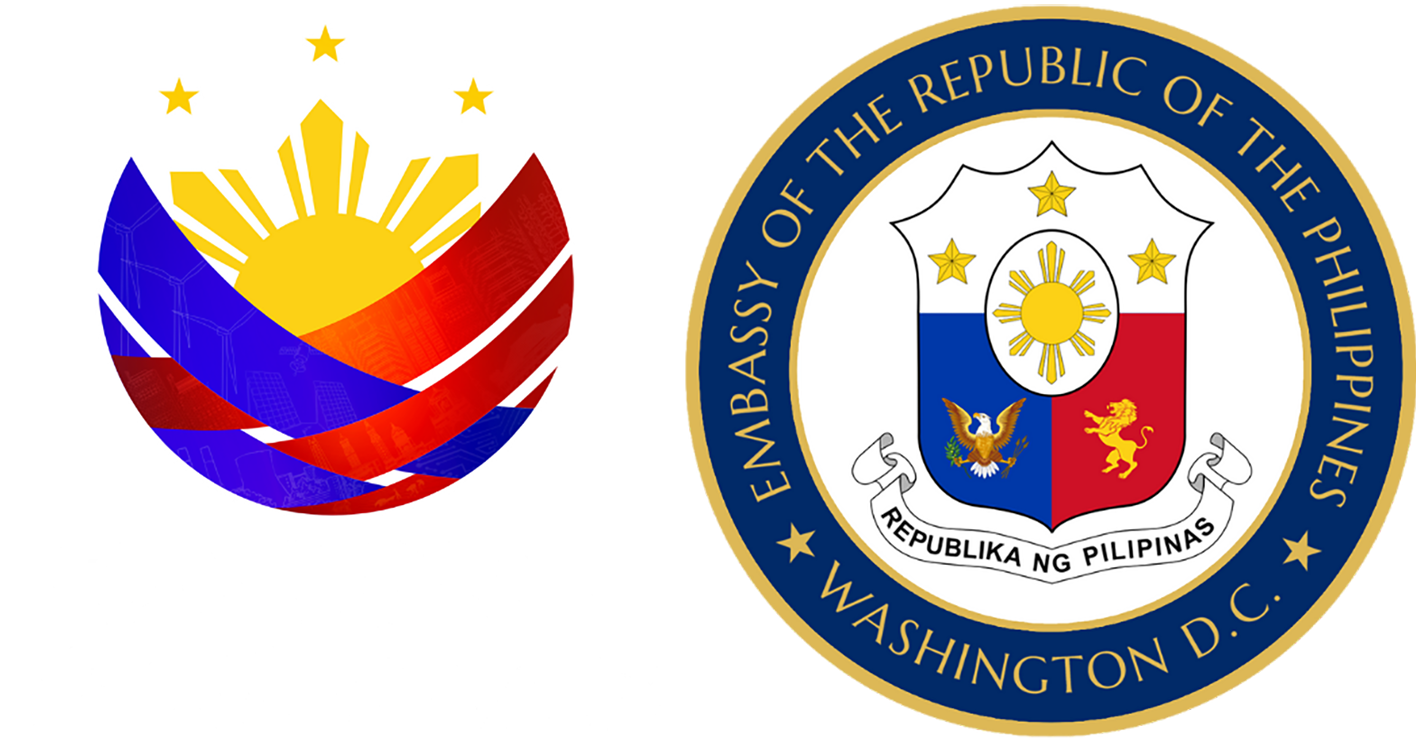
Last Updated 14 August 2023
Travel to the Philippines
Note: etravel.gov.ph now replaces the One Health Pass and remains mandatory for all travelers, Filipino and non-Filipino alike. The Embassy would like to remind the public that this website is FREE OF CHARGE and to be vigilant in recognizing fraudulent websites.
For International Arrivals in the Philippines: Presentation of vaccination status and vaccination certificate for COVID-19 is no longer required . All arriving international travelers are accepted regardless of their vaccination status.
For OFWs and Seafarers: The issuance of the International Certificate of Vaccination for Prophylaxis for Yellow Fever Vaccine and other vaccination depends on the requirement of the agency/company.
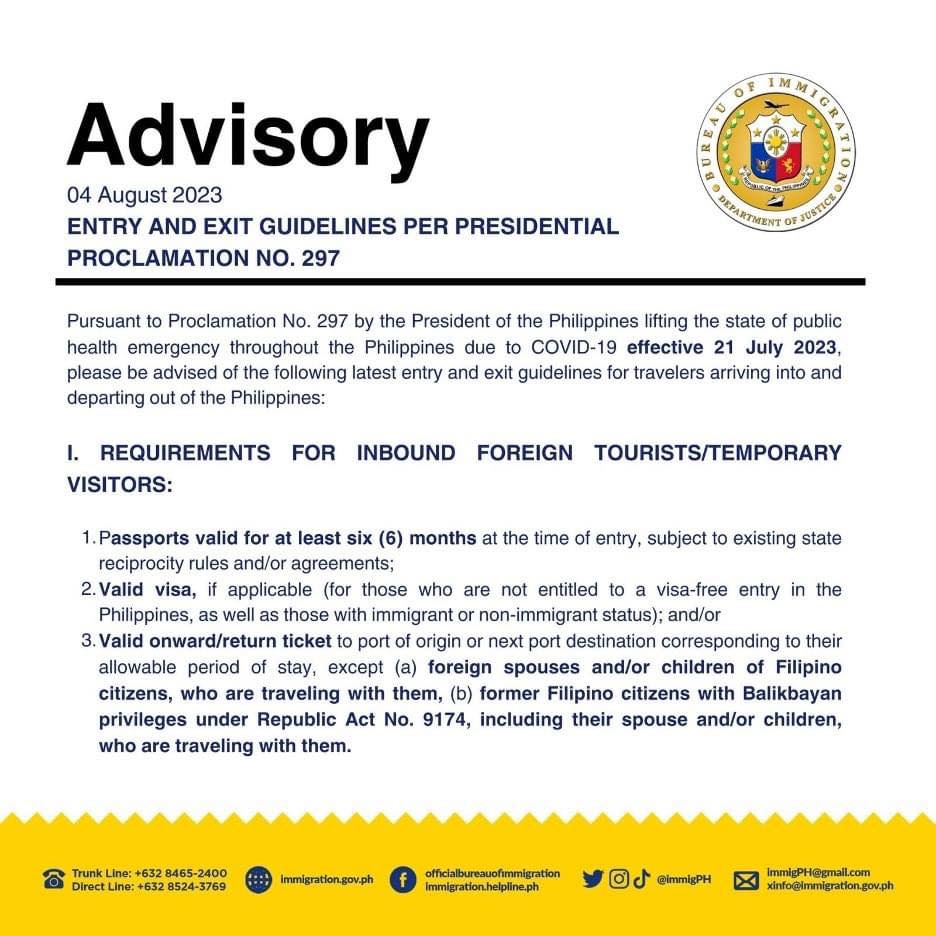
Travel to the United States from the Philippines
For details and updates, visit the website of the US Embassy in the Philippines. You can also visit the Official “Visit the USA” website at https://www.visittheusa.com/ .
For more information, see CDC regulations on international travel .
Note for all travelers : Travelers transiting through other countries will need to check the travel restrictions regarding that country and are recommended to further inquire with their airline carrier of choice
You are using an outdated browser. Upgrade your browser today or install Google Chrome Frame to better experience this site.
Philippines Traveler View
Travel health notices, vaccines and medicines, non-vaccine-preventable diseases, stay healthy and safe.
- Packing List
After Your Trip
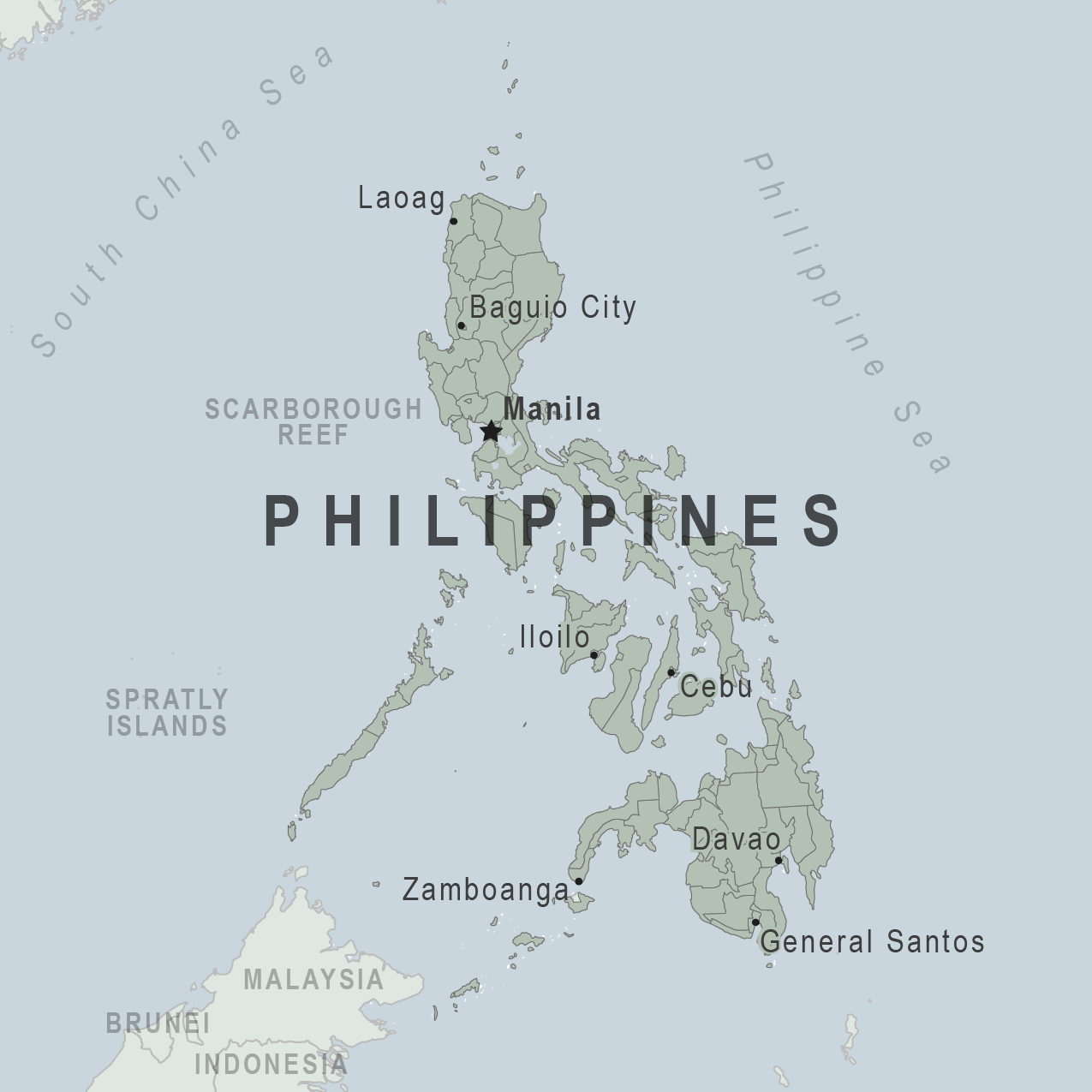
Be aware of current health issues in the Philippines. Learn how to protect yourself.
Level 1 Practice Usual Precautions
- Updated Global Measles May 28, 2024 Many international destinations are reporting increased numbers of cases of measles. Destination List: Afghanistan, Angola, Armenia, Austria, Azerbaijan, Belarus, Benin, Burkina Faso, Burundi, Cameroon, Central African Republic, Chad, Côte d'Ivoire (Ivory Coast), Democratic Republic of the Congo, Djibouti, Equatorial Guinea, Ethiopia, Gabon, Ghana, India, Indonesia, Kazakhstan, Kyrgyzstan, Lebanon, Liberia, Libya, Malaysia, Mauritania, Nepal, Niger, Nigeria, Pakistan, Philippines, Qatar, Republic of South Sudan, Republic of the Congo, Romania, Russia, Senegal, Somalia, Sri Lanka, Sudan, Syria, Tajikistan, Togo, Turkey, United Arab Emirates, Uzbekistan, Yemen, Zambia
⇧ Top
Check the vaccines and medicines list and visit your doctor at least a month before your trip to get vaccines or medicines you may need. If you or your doctor need help finding a location that provides certain vaccines or medicines, visit the Find a Clinic page.
Routine vaccines
Recommendations.
Make sure you are up-to-date on all routine vaccines before every trip. Some of these vaccines include
- Chickenpox (Varicella)
- Diphtheria-Tetanus-Pertussis
- Flu (influenza)
- Measles-Mumps-Rubella (MMR)
Immunization schedules
All eligible travelers should be up to date with their COVID-19 vaccines. Please see Your COVID-19 Vaccination for more information.
COVID-19 vaccine
Chikungunya
There has been evidence of chikungunya virus transmission in the Philippines within the last 5 years. Chikungunya vaccination may be considered for the following travelers:
- People aged 65 years or older, especially those with underlying medical conditions, who may spend at least 2 weeks (cumulative time) in indoor or outdoor areas where mosquitoes are present in the Philippines, OR
- People planning to stay in the Philippines for a cumulative period of 6 months or more
Chikungunya - CDC Yellow Book
Active cholera transmission is widespread in the Philippines. Cholera is rare in travelers. Certain factors may increase the risk of getting cholera or having severe disease ( more information ). Avoiding unsafe food and water and washing your hands can also help prevent cholera.
Vaccination may be considered for children and adults who are traveling to areas of active cholera transmission.
Cholera - CDC Yellow Book
Hepatitis A
Recommended for unvaccinated travelers one year old or older going to the Philippines.
Infants 6 to 11 months old should also be vaccinated against Hepatitis A. The dose does not count toward the routine 2-dose series.
Travelers allergic to a vaccine component or who are younger than 6 months should receive a single dose of immune globulin, which provides effective protection for up to 2 months depending on dosage given.
Unvaccinated travelers who are over 40 years old, immunocompromised, or have chronic medical conditions planning to depart to a risk area in less than 2 weeks should get the initial dose of vaccine and at the same appointment receive immune globulin.
Hepatitis A - CDC Yellow Book
Dosing info - Hep A
Hepatitis B
Recommended for unvaccinated travelers of all ages traveling to the Philippines.
Hepatitis B - CDC Yellow Book
Dosing info - Hep B
Japanese Encephalitis
Recommended for travelers who
- Are moving to an area with Japanese encephalitis to live
- Spend long periods of time, such as a month or more, in areas with Japanese encephalitis
- Frequently travel to areas with Japanese encephalitis
Consider vaccination for travelers
- Spending less than a month in areas with Japanese encephalitis but will be doing activities that increase risk of infection, such as visiting rural areas, hiking or camping, or staying in places without air conditioning, screens, or bed nets
- Going to areas with Japanese encephalitis who are uncertain of their activities or how long they will be there
Not recommended for travelers planning short-term travel to urban areas or travel to areas with no clear Japanese encephalitis season.
Japanese encephalitis - CDC Yellow Book
Japanese Encephalitis Vaccine for US Children
CDC recommends that travelers going to certain areas of the Philippines take prescription medicine to prevent malaria. Depending on the medicine you take, you will need to start taking this medicine multiple days before your trip, as well as during and after your trip. Talk to your doctor about which malaria medication you should take.
Find country-specific information about malaria.
Malaria - CDC Yellow Book
Considerations when choosing a drug for malaria prophylaxis (CDC Yellow Book)
Malaria information for the Philippines.
Cases of measles are on the rise worldwide. Travelers are at risk of measles if they have not been fully vaccinated at least two weeks prior to departure, or have not had measles in the past, and travel internationally to areas where measles is spreading.
All international travelers should be fully vaccinated against measles with the measles-mumps-rubella (MMR) vaccine, including an early dose for infants 6–11 months, according to CDC’s measles vaccination recommendations for international travel .
Measles (Rubeola) - CDC Yellow Book
Dogs infected with rabies are commonly found in the Philippines.
If rabies exposures occur while in the Philippines, rabies vaccines are typically available throughout most of the country.
Rabies pre-exposure vaccination considerations include whether travelers 1) will be performing occupational or recreational activities that increase risk for exposure to potentially rabid animals and 2) might have difficulty getting prompt access to safe post-exposure prophylaxis.
Please consult with a healthcare provider to determine whether you should receive pre-exposure vaccination before travel.
For more information, see country rabies status assessments .
Rabies - CDC Yellow Book
Recommended for most travelers, especially those staying with friends or relatives or visiting smaller cities or rural areas.
Typhoid - CDC Yellow Book
Dosing info - Typhoid
Yellow Fever
Required for travelers ≥9 months old arriving from countries with risk for YF virus transmission; this includes >12-hour airport transits or layovers in countries with risk for YF virus transmission. 1
Yellow Fever - CDC Yellow Book
- Avoid contaminated water
Leptospirosis
How most people get sick (most common modes of transmission)
- Touching urine or other body fluids from an animal infected with leptospirosis
- Swimming or wading in urine-contaminated fresh water, or contact with urine-contaminated mud
- Drinking water or eating food contaminated with animal urine
- Avoid contaminated water and soil
Clinical Guidance
Schistosomiasis
- Wading, swimming, bathing, or washing in contaminated freshwater streams, rivers, ponds, lakes, or untreated pools.
Avoid bug bites
- Mosquito bite
- Avoid Bug Bites
- Mosquito bite
- An infected pregnant woman can spread it to her unborn baby
Airborne & droplet
- Breathing in air or accidentally eating food contaminated with the urine, droppings, or saliva of infected rodents
- Bite from an infected rodent
- Less commonly, being around someone sick with hantavirus (only occurs with Andes virus)
- Avoid rodents and areas where they live
- Avoid sick people
Tuberculosis (TB)
- Breathe in TB bacteria that is in the air from an infected and contagious person coughing, speaking, or singing.
Learn actions you can take to stay healthy and safe on your trip. Vaccines cannot protect you from many diseases in the Philippines, so your behaviors are important.
Eat and drink safely
Food and water standards around the world vary based on the destination. Standards may also differ within a country and risk may change depending on activity type (e.g., hiking versus business trip). You can learn more about safe food and drink choices when traveling by accessing the resources below.
- Choose Safe Food and Drinks When Traveling
- Water Treatment Options When Hiking, Camping or Traveling
- Global Water, Sanitation and Hygiene | Healthy Water
- Avoid Contaminated Water During Travel
You can also visit the Department of State Country Information Pages for additional information about food and water safety.
Prevent bug bites
Bugs (like mosquitoes, ticks, and fleas) can spread a number of diseases in the Philippines. Many of these diseases cannot be prevented with a vaccine or medicine. You can reduce your risk by taking steps to prevent bug bites.
What can I do to prevent bug bites?
- Cover exposed skin by wearing long-sleeved shirts, long pants, and hats.
- Use an appropriate insect repellent (see below).
- Use permethrin-treated clothing and gear (such as boots, pants, socks, and tents). Do not use permethrin directly on skin.
- Stay and sleep in air-conditioned or screened rooms.
- Use a bed net if the area where you are sleeping is exposed to the outdoors.
What type of insect repellent should I use?
- FOR PROTECTION AGAINST TICKS AND MOSQUITOES: Use a repellent that contains 20% or more DEET for protection that lasts up to several hours.
- Picaridin (also known as KBR 3023, Bayrepel, and icaridin)
- Oil of lemon eucalyptus (OLE) or para-menthane-diol (PMD)
- 2-undecanone
- Always use insect repellent as directed.
What should I do if I am bitten by bugs?
- Avoid scratching bug bites, and apply hydrocortisone cream or calamine lotion to reduce the itching.
- Check your entire body for ticks after outdoor activity. Be sure to remove ticks properly.
What can I do to avoid bed bugs?
Although bed bugs do not carry disease, they are an annoyance. See our information page about avoiding bug bites for some easy tips to avoid them. For more information on bed bugs, see Bed Bugs .
For more detailed information on avoiding bug bites, see Avoid Bug Bites .
Stay safe outdoors
If your travel plans in the Philippines include outdoor activities, take these steps to stay safe and healthy during your trip.
- Stay alert to changing weather conditions and adjust your plans if conditions become unsafe.
- Prepare for activities by wearing the right clothes and packing protective items, such as bug spray, sunscreen, and a basic first aid kit.
- Consider learning basic first aid and CPR before travel. Bring a travel health kit with items appropriate for your activities.
- If you are outside for many hours in heat, eat salty snacks and drink water to stay hydrated and replace salt lost through sweating.
- Protect yourself from UV radiation : use sunscreen with an SPF of at least 15, wear protective clothing, and seek shade during the hottest time of day (10 a.m.–4 p.m.).
- Be especially careful during summer months and at high elevation. Because sunlight reflects off snow, sand, and water, sun exposure may be increased during activities like skiing, swimming, and sailing.
- Very cold temperatures can be dangerous. Dress in layers and cover heads, hands, and feet properly if you are visiting a cold location.
Stay safe around water
- Swim only in designated swimming areas. Obey lifeguards and warning flags on beaches.
- Practice safe boating—follow all boating safety laws, do not drink alcohol if driving a boat, and always wear a life jacket.
- Do not dive into shallow water.
- Do not swim in freshwater in developing areas or where sanitation is poor.
- Avoid swallowing water when swimming. Untreated water can carry germs that make you sick.
- To prevent infections, wear shoes on beaches where there may be animal waste.
Schistosomiasis and leptospirosis, infections that can be spread in fresh water, are found in the Philippines. Avoid swimming in fresh, unchlorinated water, such as lakes, ponds, or rivers.
Keep away from animals
Most animals avoid people, but they may attack if they feel threatened, are protecting their young or territory, or if they are injured or ill. Animal bites and scratches can lead to serious diseases such as rabies.
Follow these tips to protect yourself:
- Do not touch or feed any animals you do not know.
- Do not allow animals to lick open wounds, and do not get animal saliva in your eyes or mouth.
- Avoid rodents and their urine and feces.
- Traveling pets should be supervised closely and not allowed to come in contact with local animals.
- If you wake in a room with a bat, seek medical care immediately. Bat bites may be hard to see.
All animals can pose a threat, but be extra careful around dogs, bats, monkeys, sea animals such as jellyfish, and snakes. If you are bitten or scratched by an animal, immediately:
- Wash the wound with soap and clean water.
- Go to a doctor right away.
- Tell your doctor about your injury when you get back to the United States.
Consider buying medical evacuation insurance. Rabies is a deadly disease that must be treated quickly, and treatment may not be available in some countries.
Reduce your exposure to germs
Follow these tips to avoid getting sick or spreading illness to others while traveling:
- Wash your hands often, especially before eating.
- If soap and water aren’t available, clean hands with hand sanitizer (containing at least 60% alcohol).
- Don’t touch your eyes, nose, or mouth. If you need to touch your face, make sure your hands are clean.
- Cover your mouth and nose with a tissue or your sleeve (not your hands) when coughing or sneezing.
- Try to avoid contact with people who are sick.
- If you are sick, stay home or in your hotel room, unless you need medical care.
Avoid sharing body fluids
Diseases can be spread through body fluids, such as saliva, blood, vomit, and semen.
Protect yourself:
- Use latex condoms correctly.
- Do not inject drugs.
- Limit alcohol consumption. People take more risks when intoxicated.
- Do not share needles or any devices that can break the skin. That includes needles for tattoos, piercings, and acupuncture.
- If you receive medical or dental care, make sure the equipment is disinfected or sanitized.
Know how to get medical care while traveling
Plan for how you will get health care during your trip, should the need arise:
- Carry a list of local doctors and hospitals at your destination.
- Review your health insurance plan to determine what medical services it would cover during your trip. Consider purchasing travel health and medical evacuation insurance.
- Carry a card that identifies, in the local language, your blood type, chronic conditions or serious allergies, and the generic names of any medications you take.
- Some prescription drugs may be illegal in other countries. Call the Philippines’s embassy to verify that all of your prescription(s) are legal to bring with you.
- Bring all the medicines (including over-the-counter medicines) you think you might need during your trip, including extra in case of travel delays. Ask your doctor to help you get prescriptions filled early if you need to.
Many foreign hospitals and clinics are accredited by the Joint Commission International. A list of accredited facilities is available at their website ( www.jointcommissioninternational.org ).
In some countries, medicine (prescription and over-the-counter) may be substandard or counterfeit. Bring the medicines you will need from the United States to avoid having to buy them at your destination.
Malaria is a risk in some parts of the Philippines. If you are going to a risk area, fill your malaria prescription before you leave, and take enough with you for the entire length of your trip. Follow your doctor’s instructions for taking the pills; some need to be started before you leave.
Select safe transportation
Motor vehicle crashes are the #1 killer of healthy US citizens in foreign countries.
In many places cars, buses, large trucks, rickshaws, bikes, people on foot, and even animals share the same lanes of traffic, increasing the risk for crashes.
Be smart when you are traveling on foot.
- Use sidewalks and marked crosswalks.
- Pay attention to the traffic around you, especially in crowded areas.
- Remember, people on foot do not always have the right of way in other countries.
Riding/Driving
Choose a safe vehicle.
- Choose official taxis or public transportation, such as trains and buses.
- Ride only in cars that have seatbelts.
- Avoid overcrowded, overloaded, top-heavy buses and minivans.
- Avoid riding on motorcycles or motorbikes, especially motorbike taxis. (Many crashes are caused by inexperienced motorbike drivers.)
- Choose newer vehicles—they may have more safety features, such as airbags, and be more reliable.
- Choose larger vehicles, which may provide more protection in crashes.
Think about the driver.
- Do not drive after drinking alcohol or ride with someone who has been drinking.
- Consider hiring a licensed, trained driver familiar with the area.
- Arrange payment before departing.
Follow basic safety tips.
- Wear a seatbelt at all times.
- Sit in the back seat of cars and taxis.
- When on motorbikes or bicycles, always wear a helmet. (Bring a helmet from home, if needed.)
- Avoid driving at night; street lighting in certain parts of the Philippines may be poor.
- Do not use a cell phone or text while driving (illegal in many countries).
- Travel during daylight hours only, especially in rural areas.
- If you choose to drive a vehicle in the Philippines, learn the local traffic laws and have the proper paperwork.
- Get any driving permits and insurance you may need. Get an International Driving Permit (IDP). Carry the IDP and a US-issued driver's license at all times.
- Check with your auto insurance policy's international coverage, and get more coverage if needed. Make sure you have liability insurance.
- Avoid using local, unscheduled aircraft.
- If possible, fly on larger planes (more than 30 seats); larger airplanes are more likely to have regular safety inspections.
- Try to schedule flights during daylight hours and in good weather.
Medical Evacuation Insurance
If you are seriously injured, emergency care may not be available or may not meet US standards. Trauma care centers are uncommon outside urban areas. Having medical evacuation insurance can be helpful for these reasons.
Helpful Resources
Road Safety Overseas (Information from the US Department of State): Includes tips on driving in other countries, International Driving Permits, auto insurance, and other resources.
The Association for International Road Travel has country-specific Road Travel Reports available for most countries for a minimal fee.
For information traffic safety and road conditions in the Philippines, see Travel and Transportation on US Department of State's country-specific information for the Philippines .
Maintain personal security
Use the same common sense traveling overseas that you would at home, and always stay alert and aware of your surroundings.
Before you leave
- Research your destination(s), including local laws, customs, and culture.
- Monitor travel advisories and alerts and read travel tips from the US Department of State.
- Enroll in the Smart Traveler Enrollment Program (STEP) .
- Leave a copy of your itinerary, contact information, credit cards, and passport with someone at home.
- Pack as light as possible, and leave at home any item you could not replace.
While at your destination(s)
- Carry contact information for the nearest US embassy or consulate .
- Carry a photocopy of your passport and entry stamp; leave the actual passport securely in your hotel.
- Follow all local laws and social customs.
- Do not wear expensive clothing or jewelry.
- Always keep hotel doors locked, and store valuables in secure areas.
- If possible, choose hotel rooms between the 2nd and 6th floors.
Healthy Travel Packing List
Use the Healthy Travel Packing List for Philippines for a list of health-related items to consider packing for your trip. Talk to your doctor about which items are most important for you.
Why does CDC recommend packing these health-related items?
It’s best to be prepared to prevent and treat common illnesses and injuries. Some supplies and medicines may be difficult to find at your destination, may have different names, or may have different ingredients than what you normally use.
If you are not feeling well after your trip, you may need to see a doctor. If you need help finding a travel medicine specialist, see Find a Clinic . Be sure to tell your doctor about your travel, including where you went and what you did on your trip. Also tell your doctor if you were bitten or scratched by an animal while traveling.
If your doctor prescribed antimalarial medicine for your trip, keep taking the rest of your pills after you return home. If you stop taking your medicine too soon, you could still get sick.
Malaria is always a serious disease and may be a deadly illness. If you become ill with a fever either while traveling in a malaria-risk area or after you return home (for up to 1 year), you should seek immediate medical attention and should tell the doctor about your travel history.
For more information on what to do if you are sick after your trip, see Getting Sick after Travel .
Map Disclaimer - The boundaries and names shown and the designations used on maps do not imply the expression of any opinion whatsoever on the part of the Centers for Disease Control and Prevention concerning the legal status of any country, territory, city or area or of its authorities, or concerning the delimitation of its frontiers or boundaries. Approximate border lines for which there may not yet be full agreement are generally marked.
Other Destinations
If you need help finding travel information:
Message & data rates may apply. CDC Privacy Policy
File Formats Help:
- Adobe PDF file
- Microsoft PowerPoint file
- Microsoft Word file
- Microsoft Excel file
- Audio/Video file
- Apple Quicktime file
- RealPlayer file
- Zip Archive file
Exit Notification / Disclaimer Policy
- The Centers for Disease Control and Prevention (CDC) cannot attest to the accuracy of a non-federal website.
- Linking to a non-federal website does not constitute an endorsement by CDC or any of its employees of the sponsors or the information and products presented on the website.
- You will be subject to the destination website's privacy policy when you follow the link.
- CDC is not responsible for Section 508 compliance (accessibility) on other federal or private website.
Philippines Travel Guide
The Philippines is a great place for island hopping and scuba diving, with over 7,000 islands full of white sand beaches, rainbow corals, and turquoise waterfalls.
One of the best known islands is Palawan , which has been ranked as the most beautiful island in the world. The island of Bohol is also popular for its exotic scenery and scuba diving.
Read through this complete Philippines travel guide for more info on what to expect!
Quick Facts
Filipino & English
Christianity
Philippine Peso (PHP)
Visa free access for most nationalities
Tropical; hot & humid year round. Dry season is Nov - May
Power Plugs
Type A / B / C
The main airports in the Philippines are Manila (MNL) and Cebu (CEB), which have direct international flights from many countries in Asia and beyond. There are also domestic airports in popular Filipino tourist spots like Bohol, Coron, El Nido, and Siargao.
You can shop for flights to the Philippines on Skyscanner.
There are a few areas to steer clear of in the Philippines, but according to the UN it has a violent crime rate that is significantly lower than the global average. Some parts of Mindanao can be dangerous due to terrorism and kidnappings.
With that said, I’ve traveled in many parts of the Philippines and haven't witnessed any crime. Popular tourist areas like El Nido and Coron are safe, and attitudes toward foreigners are welcoming.
It's a good idea to wear mosquito spray in rural areas, especially during the rainy season, because some areas have a risk of dengue or malaria.
The climate of the Philippines is tropical, so the weather is warm and humid all year. There's a rainy season that runs from June to October (with the typhoon season generally being September and October), and the sunny season runs from November to May.
It's still possible to visit Philippines in the rainy season, but give yourself some extra days as a buffer in case of bad weather.
The Philippines is a very budget friendly travel destination, with hostels available from 300 Philippine pesos ($5 USD) and private hotels from 600 pesos . Meals are also cheap, costing about 70 to 300 pesos depending on location.
Transportation in the Philippines is generally by motorbike or car, and these can be rented, but hiring a driver is cheap and often preferable. Transportation apps like Grab are great for getting around.
Palawan By Drone
The best Philippines tours & activities
My latest blog posts about the Philippines
Coron vs El Nido: Which Is Better? All Differences Explained
Palawan island has become famous for its tropical scenery and island hopping, but in a head-to-head comparison of Coron vs El Nido which is better? Both of …
Bohol Travel Guide For The Philippines
The island of Bohol Philippines is a unique one, with exotic landscapes like the ‘Chocolate Hills,’ and wild tarsiers, the world’s smallest primate. Bohol may not be …
Coron Palawan Travel Guide For The Philippines
Coron Palawan is one of the most amazing islands in the Philippines, with huge limestone peaks, multicolored lagoons, and great snorkeling or scuba diving. Like other islands …
How To Get To El Nido Palawan In The Philippines
El Nido, Palawan is a pristine, exotic island destination in the Philippines that can be reached by air, van, bus, or ferry. It’s not hard to get …
El Nido Palawan Island Travel Guide For The Philippines
For myself and many other travelers, El Nido Palawan island was the place that put the Philippines on the world map (and our bucket lists). El Nido’s …
El Nido Tour A in Palawan: Big Lagoon & Shimizu Island
El Nido’s famous for having some of the finest island scenery in the Philippines, and the best way to see it is on a shared boat tour. …
El Nido To Coron Ferry: How To Use The Palawan Fast Boat
Coron, Palawan is a scenic island destination located just north of the more famous El Nido, and a lot of tourists nowadays like to visit both places …
Coron Ultimate Island Tour In Palawan: What To Expect
The remote Philippine island of Coron may not be as popular as its cousin El Nido, but the scenery here is just as amazing, and it’s great …
El Nido Tour C in Palawan: Hidden Beach & Matinloc Shrine
El nido tour b in palawan: pinagbuyutan island & entalula beach, el nido tour d in palawan: cadlao island & small lagoon, get in touch.
Feel free to contact me if you have travel questions, comments, or suggestions! I'll try to get back to you!
- Skip to main content
- Skip to "About this site"
Language selection
Search travel.gc.ca.
Help us to improve our website. Take our survey !
COVID-19: travel health notice for all travellers
Philippines travel advice
Latest updates: Editorial change
Last updated: May 23, 2024 08:00 ET
On this page
Safety and security, entry and exit requirements, laws and culture, natural disasters and climate, philippines - exercise a high degree of caution.
Exercise a high degree of caution in the Philippines due to crime, terrorism and kidnapping.
Western Mindanao - Avoid all travel
- Lanao del Sur
- Lanao del Norte
- Maguindanao
- Misamis Occidental
- South Cotabato
- Sultan Kudarat
- Zamboanga del Norte
- Zamboanga del Sur
- Zamboanga Sibugay
Central and Eastern Mindanao - Avoid non-essential travel
- Agusan del Norte
- Agusan del Sur
- Davao de Oro
- Davao del Norte
- Davao del Sur, excluding Davao City
- Davao Occidental
- Davao Oriental
- Misamis Oriental
- Surigao del Norte, excluding Siargao Island
- Surigao del Sur
Back to top
Mindanao island
Extremists have been active in the southern Philippines for several years.
Although local authorities have demobilized some of violent extremist groups in the recent years, there's still a risk of terrorist attacks and kidnappings, especially in the following regions:
- Bangsamoro Autonomous Region in Muslim Mindanao
- Zamboanga Peninsula
- Sulu archipelago
Bombs causing deaths, injuries, and property destruction have exploded in public areas of major centres, including the cities of:
- General Santos
Clashes may occur between insurgent groups and security forces.
There's a risk of being in the wrong place at the wrong time. The Government of Canada's ability to provide consular assistance is limited if you get stranded in this area.
If you chose to travel in the southern Philippines despite this advisory:
- remain indoors as much as possible
- be aware of your surroundings at all times
- avoid crowded places
- always travel with identification
- expect an increased security presence in public areas, especially around malls and transportation hubs
- stop at security checkpoints
- monitor local media
- follow the advice and instructions of local authorities
There is a threat of terrorism in the southern Philippines.
In recent years, the Filippino government has intensified its fight against terrorists. Counterterrorism operations diminished the capacity of terrorist groups to operate in the Philippines. However, militants remain in the country even if attacks are less common.
Terrorist have carried out attacks, including in major cities and places visited by foreigners. Attacks are far more frequent in Western Mindanao, where government forces and rebel groups clash.
Further attacks may not be ruled out. Targets could include:
- government buildings, including military and police installations
- places of worship
- airports and other transportation hubs and networks
- public areas such as tourist destinations, restaurants, bars, coffee shops, shopping centres, markets, hotels and other sites frequented by foreigners
Always be aware of your surroundings when in public places.
Be particularly vigilant during the following:
- sporting events
- religious holidays
- public celebrations
- major political events, such as elections
Terrorists have used such occasions to mount attacks.
There is a threat of kidnapping across the country, including in Metro Manila. In coastal areas, criminals target individuals on private boats, in marinas and resorts. They have also kidnapped cargo vessel crews.
Kidnappings are usually for ransom, targeting both local and foreign nationals perceived to have money. Criminals have killed some victims.
While in the Philippines:
- maintain a high level of vigilance and personal security awareness at all times
- stay in reputable accommodation with adequate security measures
- report any suspicious behaviour to security forces
- if you are abducted, comply with the kidnappers' demands and do not resist
Crime remains a serious concern throughout the country.
Violent crime, such as armed robbery, sexual assault, and murder, occur regularly. Gangs are active, including in Metro Manila.
The possession of guns and other weapons is common and poorly regulated. Arms trafficking is a significant problem throughout the country and criminals have attacked foreigners, even in wealthy neighborhoods.
- Be aware of your surroundings at all times
- Avoid showing signs of affluence
- If threatened by robbers, don't resist
Petty crime
Petty crime, such as pickpocketing, swarming and bag snatching, occurs, especially in urban areas.
- Ensure that your belongings, including your passport and other travel documents, are secure at all times
- Be careful in crowded shopping malls and other public places
- Avoid carrying large sums of money
- Keep valuables in safe place
- Keep backpacks and bags away from traffic, as motorcyclists may grab them from pedestrians, sometimes causing injury
- Beware of friendly strangers offering to take you around town or on an excursion
Spiked food and drinks
Some criminals have drugged and robbed tourists travelling alone after an invitation to visit a tourist attraction.
Snacks, beverages, gum and cigarettes may contain drugs that could put you at risk of sexual assault and robbery.
- Be wary of accepting these items from new acquaintances
- Never leave food or drinks unattended or in the care of strangers
Credit card and ATM fraud occurs frequently. Illegal electronic devices are sometimes attached to ATM card readers, enabling them to record information such as the user's PIN.
Be cautious when using debit or credit cards:
- pay careful attention when your cards are being handled by others
- use ATMs located in well-lit public areas or inside a bank or business
- avoid using card readers with an irregular or unusual feature
- cover the keypad with one hand when entering your PIN
- check for any unauthorized transactions on your account statements
Overseas fraud
Online financial scams
Internet is frequently used to initiate financial scams. Scammers often use fake profiles to target Westerners and steal from them. Once they succeed in building a virtual relationship, they ask for money for various purposes. This could include business or financial opportunities such as:
- money transfers
- lucrative sales
- gold purchase
- inheritance notices
- bank overpayments
If you intend to do business in the Philippines:
- ensure that any business opportunity is legitimate before leaving
- don't travel to the Philippines with the intention to obtain restitution after losing money to a fraud
Internet romance
Internet romance is also common. Victims of this type of scams have lost thousands of dollars. Before travelling to the Philippines to visit someone you met online:
- keep in mind that you may be the victim of a scam
- inform yourself about the country's customs and laws on conjugal relations and marriage
- be sure to retain possession of your return plane ticket, money, and passport
Child abuse
Locals with children may befriend single male tourists and then accuse them of child abuse to extort money from them.
Report any incident of crime or scams to local police before you leave the country.
Women's safety
Women travelling alone may be subject to some forms of harassment and verbal abuse.
Advice for women travellers
Demonstrations
Demonstrations take place, including in Manila. Clashes may occur between security forces and demonstrators, especially in Mindanao and remote areas of northern Luzon.
Filipino law prohibits political activities by foreigners. Participating in demonstrations may result in being detained or deported.
Even peaceful demonstrations can turn violent at any time. They can also lead to disruptions to traffic and public transportation.
- Avoid areas where demonstrations and large gatherings are taking place
- Follow the instructions of local authorities
- Monitor local media for information on ongoing demonstrations
Mass gatherings (large-scale events)
Water activities
Coastal waters can be dangerous. Riptides are common. Several drownings occur each year.
Most of the time, lifeguards are not present to supervise swimmers. Many beaches don't offer warnings of dangerous conditions.
Water pollution is also a concern.
- Seek local advice before swimming
- Avoid swimming if red flags are flown
Scuba diving
Diving schools and rescue services may not adhere to Canadian standards.
- Use only reputable dive companies
- Make sure the company offers proper safety equipment
Water safety abroad
Road safety
Road conditions.
Road conditions vary throughout the country. Some roads, including major highways, are poorly maintained. Traffic is very heavy, especially in Metro Manila.
Driving conditions may quickly become hazardous. During the rainy season, metro centres often become impassable due to flash floods.
Driving habits
Many drivers don't respect traffic laws. They are reckless. They often drive at excessive speeds or way below the speed limit on highways. Accidents causing fatalities are common. Pedestrians don't have priority over cars.
Even minor road incidents can escalate quickly and lead to violent assaults.
If driving in the Philippines:
- avoid travel outside urban areas or tourist centres after dark
- stay on national highways and paved roads
- avoid any confrontation
Most people travel using mopeds. Fatal scooter accidents involving tourists are common.
If renting a scooter or moped:
- be vigilant while driving
- avoid renting from operators who don't provide a helmet with the rental
- avoid driving on roads in disrepair
Public transportation
The safety and reliability of public transportation are poor.
Minibuses, known as jeepneys, and large buses are often old, poorly maintained, and overcrowded. Pickpocketing and armed robberies are frequent, especially in large cities such as Manila and Cebu.
Some interurban buses have also been involved in fatal accidents.
Motorcycles
Motorcycle transportation is prevalent throughout the country, whether by habal-habal or tricycle.
Habal-habal are motorcycles with extensions, which can carry several passengers at a time. They are illegal and dangerous.
Tricycles are rather a safe option as they don't drive very fast. However, vehicles may be in poor condition. They aren't metered and can be hailed anywhere.
- Don't use habal-habal
- Avoid using tricycles at night on country roads
- Agree on a fare with the tricycle driver before departing to avoid scams
Although most taxi services are safe and reliable, there have been extortion incidents from taxi drivers.
To minimize your risks:
- avoid hailing a taxi on the street
- only enter metered taxis from a reliable company and insist the meter be turned on
- prefer hotel transportation, official airport taxis, or a ridesharing app
- never share taxis with strangers
- ask for the windows being rolled up and doors locked at all times
- never hand your phone to the driver to allow them to see the map
- record the taxi's licence plate and provide the information to a relative/friend
Ferry accidents occur. Some vessels are poorly maintained and overcrowded. Accidents are more prevalent during the rainy season as storms can develop quickly. As a result, local authorities may suspend ferry services on short notice when a storm signal is raised, even if the weather is clear. You could get stranded at ports for several days.
If travelling by sea:
- use only a reliable company
- don't board vessels that appear overloaded or unseaworthy
- make sure you have access to a life jacket
- plan for extra time, especially during the rainy season
Pirate attacks and armed robbery targeting ships occur in coastal waters. You may face an elevated threat of kidnapping in waters:
- around Mindanao
- in the Sulu Sea
- in the Celebes Sea
- south of Palawan Island
- south of Negros Island
- around Siquijor Island
Mariners should take appropriate precautions.
Live piracy report - International Maritime Bureau
We do not make assessments on the compliance of foreign domestic airlines with international safety standards.
Information about foreign domestic airlines
Every country or territory decides who can enter or exit through its borders. The Government of Canada cannot intervene on your behalf if you do not meet your destination’s entry or exit requirements.
We have obtained the information on this page from the Philippine authorities. It can, however, change at any time.
Verify this information with the Foreign Representatives in Canada .
Entry requirements vary depending on the type of passport you use for travel.
Before you travel, check with your transportation company about passport requirements. Its rules on passport validity may be more stringent than the country’s entry rules.
Regular Canadian passport
Your passport must be valid at least 6 months beyond the date you expect to leave the Philippines.
Passport for official travel
Different entry rules may apply.
Official travel

Passport with “X” gender identifier
While the Government of Canada issues passports with an “X” gender identifier, it cannot guarantee your entry or transit through other countries. You might face entry restrictions in countries that do not recognize the “X” gender identifier. Before you leave, check with the closest foreign representative for your destination.
Other travel documents
Different entry rules may apply when travelling with a temporary passport or an emergency travel document. Before you leave, check with the closest foreign representative for your destination.
Useful links
- Foreign Representatives in Canada
- Canadian passports
Tourist visa: not required for stays of up to 30 days Business visa: not required for stays of up to 30 days Student visa: required
If you need to extend your stay above the 30-day visa-free period, you must get the proper authorization from local authorities before this period ends.
The visa that immigration officials issue upon your arrival in the Philippines takes precedence over any visa you may have obtained from a Philippine embassy or consulate abroad.
If you're leaving the Philippines using a temporary passport issued inside the country, consult the Philippine Bureau of Immigration to obtain the required exit stamps.
Bureau of Immigration – Republic of the Philippines
Registration
All travelers must register their entry and exit from the country in the Philippine's eTravel System within 72 hours before travel.
Foreign nationals staying in the Philippines for longer than 59 days must register with the local authorities.
You must present yourself to a Bureau of Immigration office to register your biometrics, such as fingerprinting, and obtain a special security registration number.
- Philippine E-Travel System – Republic of the Philippines
- Bureau of Immigration offices – Republic of the Philippines
Other entry requirements
Customs officials may ask you to show them a return or onward ticket.
Boracay Island
Local authorities are restricting visitors to Boracay Island.
You may need proof of accommodation in an accredited hotel to be allowed entry.
Exit requirements
Travel pass.
Foreign nationals travelling on a visa issued by one of the following authorities must present a travel pass to leave the country:
- the Department of Justice
- the Board of Investments
- the Philippine Retirement Authority
- the Philippine Economic Zone Authority
- the economic zones
Travel pass – Bureau of Immigration, Republic of the Philippines
Emigration clearance certificate
If you've been in the country for 6 months or more, you must obtain an emigration clearance certificate (ECC), also known as an exit clearance, and pay applicable fees at least 72 hours before your expected departure.
This also applies to children born in the Philippines who are leaving the country for the first time on a foreign passport.
Emigration clearance certificate – Bureau of Immigration, Republic of the Philippines
Children and travel
Children under 15 years travelling alone need a Waiver for Exclusion Ground to enter the Philippines.
- Waiver for Exclusion Ground – Bureau of Immigration, Republic of the Philippines
- Travelling with children
Yellow fever
Learn about potential entry requirements related to yellow fever (vaccines section).
Relevant Travel Health Notices
- Global Measles Notice - 13 March, 2024
- Zika virus: Advice for travellers - 31 August, 2023
- COVID-19 and International Travel - 13 March, 2024
This section contains information on possible health risks and restrictions regularly found or ongoing in the destination. Follow this advice to lower your risk of becoming ill while travelling. Not all risks are listed below.
Consult a health care professional or visit a travel health clinic preferably 6 weeks before you travel to get personalized health advice and recommendations.
Routine vaccines
Be sure that your routine vaccinations , as per your province or territory , are up-to-date before travelling, regardless of your destination.
Some of these vaccinations include measles-mumps-rubella (MMR), diphtheria, tetanus, pertussis, polio, varicella (chickenpox), influenza and others.
Pre-travel vaccines and medications
You may be at risk for preventable diseases while travelling in this destination. Talk to a travel health professional about which medications or vaccines may be right for you, based on your destination and itinerary.
There is a risk of hepatitis A in this destination. It is a disease of the liver. People can get hepatitis A if they ingest contaminated food or water, eat foods prepared by an infectious person, or if they have close physical contact (such as oral-anal sex) with an infectious person, although casual contact among people does not spread the virus.
Practise safe food and water precautions and wash your hands often. Vaccination is recommended for all travellers to areas where hepatitis A is present.
Measles is a highly contagious viral disease. It can spread quickly from person to person by direct contact and through droplets in the air.
Anyone who is not protected against measles is at risk of being infected with it when travelling internationally.
Regardless of where you are going, talk to a health care professional before travelling to make sure you are fully protected against measles.
Japanese encephalitis is a viral infection that can cause swelling of the brain. It is spread to humans through the bite of an infected mosquito. Risk is very low for most travellers. Travellers at relatively higher risk may want to consider vaccination for JE prior to travelling.
Travellers are at higher risk if they will be:
- travelling long term (e.g. more than 30 days)
- making multiple trips to endemic areas
- staying for extended periods in rural areas
- visiting an area suffering a JE outbreak
- engaging in activities involving high contact with mosquitos (e.g., entomologists)
Hepatitis B is a risk in every destination. It is a viral liver disease that is easily transmitted from one person to another through exposure to blood and body fluids containing the hepatitis B virus. Travellers who may be exposed to blood or other bodily fluids (e.g., through sexual contact, medical treatment, sharing needles, tattooing, acupuncture or occupational exposure) are at higher risk of getting hepatitis B.
Hepatitis B vaccination is recommended for all travellers. Prevent hepatitis B infection by practicing safe sex, only using new and sterile drug equipment, and only getting tattoos and piercings in settings that follow public health regulations and standards.
Malaria is a serious and sometimes fatal disease that is caused by parasites spread through the bites of mosquitoes. There is a risk of malaria in certain areas and/or during a certain time of year in this destination.
Antimalarial medication may be recommended depending on your itinerary and the time of year you are travelling. Consult a health care professional or visit a travel health clinic before travelling to discuss your options. It is recommended to do this 6 weeks before travel, however, it is still a good idea any time before leaving. Protect yourself from mosquito bites at all times: • Cover your skin and use an approved insect repellent on uncovered skin. • Exclude mosquitoes from your living area with screening and/or closed, well-sealed doors and windows. • Use insecticide-treated bed nets if mosquitoes cannot be excluded from your living area. • Wear permethrin-treated clothing. If you develop symptoms similar to malaria when you are travelling or up to a year after you return home, see a health care professional immediately. Tell them where you have been travelling or living.
The best way to protect yourself from seasonal influenza (flu) is to get vaccinated every year. Get the flu shot at least 2 weeks before travelling.
The flu occurs worldwide.
- In the Northern Hemisphere, the flu season usually runs from November to April.
- In the Southern Hemisphere, the flu season usually runs between April and October.
- In the tropics, there is flu activity year round.
The flu vaccine available in one hemisphere may only offer partial protection against the flu in the other hemisphere.
The flu virus spreads from person to person when they cough or sneeze or by touching objects and surfaces that have been contaminated with the virus. Clean your hands often and wear a mask if you have a fever or respiratory symptoms.
Yellow fever is a disease caused by a flavivirus from the bite of an infected mosquito.
Travellers get vaccinated either because it is required to enter a country or because it is recommended for their protection.
- There is no risk of yellow fever in this country.
Country Entry Requirement*
- Proof of vaccination is required if you are coming from or have transited through an airport of a country where yellow fever occurs.
Recommendation
- Vaccination is not recommended.
- Discuss travel plans, activities, and destinations with a health care professional.
- Contact a designated Yellow Fever Vaccination Centre well in advance of your trip to arrange for vaccination.
About Yellow Fever
Yellow Fever Vaccination Centres in Canada * It is important to note that country entry requirements may not reflect your risk of yellow fever at your destination. It is recommended that you contact the nearest diplomatic or consular office of the destination(s) you will be visiting to verify any additional entry requirements.
In this destination, rabies is carried by dogs and some wildlife, including bats. Rabies is a deadly disease that spreads to humans primarily through bites or scratches from an infected animal. While travelling, take precautions , including keeping your distance from animals (including free-roaming dogs), and closely supervising children.
If you are bitten or scratched by an animal while travelling, immediately wash the wound with soap and clean water and see a health care professional. Rabies treatment is often available in this destination.
Before travel, discuss rabies vaccination with a health care professional. It may be recommended for travellers who are at high risk of exposure (e.g., occupational risk such as veterinarians and wildlife workers, children, adventure travellers and spelunkers, and others in close contact with animals).
Coronavirus disease (COVID-19) is an infectious viral disease. It can spread from person to person by direct contact and through droplets in the air.
It is recommended that all eligible travellers complete a COVID-19 vaccine series along with any additional recommended doses in Canada before travelling. Evidence shows that vaccines are very effective at preventing severe illness, hospitalization and death from COVID-19. While vaccination provides better protection against serious illness, you may still be at risk of infection from the virus that causes COVID-19. Anyone who has not completed a vaccine series is at increased risk of being infected with the virus that causes COVID-19 and is at greater risk for severe disease when travelling internationally.
Before travelling, verify your destination’s COVID-19 vaccination entry/exit requirements. Regardless of where you are going, talk to a health care professional before travelling to make sure you are adequately protected against COVID-19.
Safe food and water precautions
Many illnesses can be caused by eating food or drinking beverages contaminated by bacteria, parasites, toxins, or viruses, or by swimming or bathing in contaminated water.
- Learn more about food and water precautions to take to avoid getting sick by visiting our eat and drink safely abroad page. Remember: Boil it, cook it, peel it, or leave it!
- Avoid getting water into your eyes, mouth or nose when swimming or participating in activities in freshwater (streams, canals, lakes), particularly after flooding or heavy rain. Water may look clean but could still be polluted or contaminated.
- Avoid inhaling or swallowing water while bathing, showering, or swimming in pools or hot tubs.
Cholera is a risk in parts of this country. Most travellers are at very low risk.
To protect against cholera, all travellers should practise safe food and water precautions .
Travellers at higher risk of getting cholera include those:
- visiting, working or living in areas with limited access to safe food, water and proper sanitation
- visiting areas where outbreaks are occurring
Vaccination may be recommended for high-risk travellers, and should be discussed with a health care professional.
Travellers' diarrhea is the most common illness affecting travellers. It is spread from eating or drinking contaminated food or water.
Risk of developing travellers' diarrhea increases when travelling in regions with poor standards of hygiene and sanitation. Practise safe food and water precautions.
The most important treatment for travellers' diarrhea is rehydration (drinking lots of fluids). Carry oral rehydration salts when travelling.
Typhoid is a bacterial infection spread by contaminated food or water. Risk is higher among children, travellers going to rural areas, travellers visiting friends and relatives or those travelling for a long period of time.
Travellers visiting regions with a risk of typhoid, especially those exposed to places with poor sanitation, should speak to a health care professional about vaccination.
There is a risk of schistosomiasis in this destination. Schistosomiasis is a parasitic disease caused by tiny worms (blood flukes) which can be found in freshwater (lakes, rivers, ponds, and wetlands). The worms can break the skin, and their eggs can cause stomach pain, diarrhea, flu-like symptoms, or urinary problems. Schistosomiasis mostly affects underdeveloped and r ural communities, particularly agricultural and fishing communities.
Most travellers are at low risk. Travellers should avoid contact with untreated freshwater such as lakes, rivers, and ponds (e.g., swimming, bathing, wading, ingesting). There is no vaccine or medication available to prevent infection.
Insect bite prevention
Many diseases are spread by the bites of infected insects such as mosquitoes, ticks, fleas or flies. When travelling to areas where infected insects may be present:
- Use insect repellent (bug spray) on exposed skin
- Cover up with light-coloured, loose clothes made of tightly woven materials such as nylon or polyester
- Minimize exposure to insects
- Use mosquito netting when sleeping outdoors or in buildings that are not fully enclosed
To learn more about how you can reduce your risk of infection and disease caused by bites, both at home and abroad, visit our insect bite prevention page.
Find out what types of insects are present where you’re travelling, when they’re most active, and the symptoms of the diseases they spread.
- In this country, dengue is a risk to travellers. It is a viral disease spread to humans by mosquito bites.
- Dengue can cause flu-like symptoms. In some cases, it can lead to severe dengue, which can be fatal.
- The level of risk of dengue changes seasonally, and varies from year to year. The level of risk also varies between regions in a country and can depend on the elevation in the region.
- Mosquitoes carrying dengue typically bite during the daytime, particularly around sunrise and sunset.
- Protect yourself from mosquito bites . There is no vaccine or medication that protects against dengue.
Zika virus is a risk in this country.
Zika virus is primarily spread through the bite of an infected mosquito. It can also be sexually transmitted. Zika virus can cause serious birth defects.
During your trip:
- Prevent mosquito bites at all times.
- Use condoms correctly or avoid sexual contact, particularly if you are pregnant.
If you are pregnant or planning a pregnancy, you should discuss the potential risks of travelling to this destination with your health care provider. You may choose to avoid or postpone travel.
For more information, see Zika virus: Pregnant or planning a pregnancy.
There is a risk of chikungunya in this country. The risk may vary between regions of a country. Chikungunya is a virus spread through the bite of an infected mosquito. Chikungunya can cause a viral disease that typically causes fever and pain in the joints. In some cases, the joint pain can be severe and last for months or years.
Protect yourself from mosquito bites at all times. There is no vaccine available for chikungunya.
Animal precautions
Some infections, such as rabies and influenza, can be shared between humans and animals. Certain types of activities may increase your chance of contact with animals, such as travelling in rural or forested areas, camping, hiking, and visiting wet markets (places where live animals are slaughtered and sold) or caves.
Travellers are cautioned to avoid contact with animals, including dogs, livestock (pigs, cows), monkeys, snakes, rodents, birds, and bats, and to avoid eating undercooked wild game.
Closely supervise children, as they are more likely to come in contact with animals.
Person-to-person infections
Stay home if you’re sick and practise proper cough and sneeze etiquette , which includes coughing or sneezing into a tissue or the bend of your arm, not your hand. Reduce your risk of colds, the flu and other illnesses by:
- washing your hands often
- avoiding or limiting the amount of time spent in closed spaces, crowded places, or at large-scale events (concerts, sporting events, rallies)
- avoiding close physical contact with people who may be showing symptoms of illness
Sexually transmitted infections (STIs) , HIV , and mpox are spread through blood and bodily fluids; use condoms, practise safe sex, and limit your number of sexual partners. Check with your local public health authority pre-travel to determine your eligibility for mpox vaccine.
Tuberculosis is an infection caused by bacteria and usually affects the lungs.
For most travellers the risk of tuberculosis is low.
Travellers who may be at high risk while travelling in regions with risk of tuberculosis should discuss pre- and post-travel options with a health care professional.
High-risk travellers include those visiting or working in prisons, refugee camps, homeless shelters, or hospitals, or travellers visiting friends and relatives.
Medical services and facilities
Good medical services and facilities are limited in availability, especially outside major urban areas. Public medical clinics often lack basic resources and equipment.
Quality of care varies greatly throughout the country. Most hospitals will require a down payment of estimated fees at the time of admission. They may also require additional payments during hospitalization.
Some hospitals require patients to have a full-time caregiver. You may have to hire one if you’re travelling alone.
Emergency services are not widely available. Time response can be slow.
Make sure you get travel insurance that includes coverage for medical evacuation and hospital stays.
Travel health and safety
Some medication that can be purchased over-the-counter in Canada is illegal in the Philippines. If you bring some medicines with you, you’re responsible for determining their legality before departing. If you enter the country with drugs locally considered illegal, including prescription drugs, you may be fined or detained.
- Make sure your medicines are legal in the Philippines before departure
- Bring your own medicines, but only in quantities sufficient for the duration of your stay
- Seal and declare a separate quantity of prescription drugs before departing the Philippines if you’re travelling onward to another country
- Always keep your medication in the original container
- Carry a copy of your prescriptions as well as a letter from your physician stating the dosage and your relevant medical condition
- Pack your medicines in your carry-on luggage
Medical tourism
Canadian citizens have died or had serious health complications following cosmetic or other elective surgeries abroad.
Before leaving for medical travel:
- make sure you have done your research
- use reputable health-care providers only
Receiving medical care outside Canada
Air pollution
Air pollution can be severe in several major cities. It may affect people suffering from respiratory ailments.
During periods of high pollution:
- limit your activities outdoors
- follow the instructions of local authorities
You must abide by local laws.
Learn about what you should do and how we can help if you are arrested or detained abroad .
Penalties for possession, use, trafficking or importation, including through e-commerce, of illegal drugs are severe. Convicted offenders can expect life imprisonment and heavy fines.
Many drugs considered as legal in Canada are illegal in the Philippines. This includes cannabis, regardless of quantity and purpose of use, as well as some over-the-counter medicine and prescription drugs.
- Pack your own luggage and monitor it closely at all times
- Never transport other people's packages, bags or suitcases
Drugs, alcohol and travel
Child sex tourism
Penalties for pedophilia are severe. Under Philippine law, a child is defined as a person under 18.
Police may investigate any adult who is with:
- an unrelated child 12 years of age or younger, or 10 years or more his/her junior
- an unrelated child under age 18 inside the room of a house, hotel, or other similar establishments, vehicle, or other secluded location, and is suspected of having the intention to exploit the child sexually
Child Sex Tourism: It’s a Crime
Photography
The government prohibits any photography of official buildings or military installations that is intended for publication.
If you wish to marry in the Philippines, ensure that you're well informed regarding legal requirements. Visit the Embassy of Canada to the Philippines website for information on documents and procedures.
- Embassy of Canada to the Philippines
- Marriage overseas factsheet
To protect the environment, local authorities restrict access to Boracay Island.
Some activities are also prohibited, including the consumption of alcohol and tobacco in public places, including White Beach.
If you plan to visit Boracay, make sure you know about the rules and regulations before leaving.
Filipino law prohibits political activities by foreigners.
Attending any protest, demonstration, or political rally as a foreign national may lead to detention and deportation.
Identification
Authorities may request to see your ID at any time.
- Carry valid identification at all times
- Keep a photocopy of your passport in case it's lost or seized
- Keep a digital copy of your ID and travel documents
Dual citizenship
Dual citizenship is legally recognized in the Philippines.
If you are a Canadian citizen, but also a citizen of the Philippines, our ability to offer you consular services may be limited while you're there. You may also be subject to different entry/exit requirements .
Travellers with dual citizenship
Dual citizens must obtain a certificate of recognition from Philippine authorities to ensure the legal recognition of both citizenships.
International Child Abduction
The Hague Convention on the Civil Aspects of International Child Abduction is an international treaty. It can help parents with the return of children who have been removed to or retained in certain countries in violation of custody rights. It does not apply between Canada and the Philippines.
If your child was wrongfully taken to, or is being held in the Philippines by an abducting parent:
- act as quickly as you can
- consult a lawyer in Canada and in the Philippines to explore all the legal options for the return of your child
- report the situation to the nearest Canadian government office abroad or to the Vulnerable Children’s Consular Unit at Global Affairs Canada by calling the Emergency Watch and Response Centre
If your child was removed from a country other than Canada, consult a lawyer to determine if The Hague Convention applies.
Be aware that Canadian consular officials cannot interfere in private legal matters or in another country’s judicial affairs.
- International Child Abduction: A Guidebook for Left-Behind Parents
- Canadian embassies and consulates by destination
- Emergency Watch and Response Centre
You can drive in the Philippines with a valid Canadian driver's licence for up to 90 days. After that period, you must apply for a local driving permit.
You should carry an international driving permit.
International Driving Permit
The currency in the Philippines is the peso (PHP).
ATMs are available in larger cities but may be scarce in rural areas. Make sure to have access to cash in local currency if you're travelling outside larger urban areas.
You may enter the Philippines with:
- up to PHP 50,000
- up to US$10,000 or other currency equivalent
You need a written authorization from local authorities for greater amounts.
Climate change
Climate change is affecting the Philippines. Extreme and unusual weather events are becoming more frequent. Monitor local news to stay informed on the current situation.
Typhoons and monsoons
The rainy or monsoon season extends from May to November, but storms can occur throughout the year. The Philippines experiences around 20 typhoons per year, mostly between June and November.
Seasonal flooding can hamper overland travel and reduce the provision of essential services. Roads may become impassable and bridges damaged. Flooding and mudslides are frequent following heavy rains, even in Metro Manila.
If you decide to travel to the Philippines during the rainy season:
- know that you expose yourself to serious safety risks
- be prepared to change your travel plans on short notice, including cutting short or cancelling your trip
- stay informed of the latest regional weather forecasts
- carry emergency contact information for your airline or tour operator
- Tornadoes, cyclones, hurricanes, typhoons and monsoons
- Philippine Weather Services and Warnings – Philippine Atmospheric, Geophysical and Astronomical Services Administration
- Nationwide Operational Assessment of Hazards – University of the Philippines
Seismic activity
The Philippines is located on the Pacific Ring of Fire and experiences regular seismic activity.
There are several active and potentially active volcanoes in the Philippines, mainly on Luzon island.
Taal is one of the main active volcanoes in Batangas on Luzon Island. It continuously shows signs of a possible eruption. The Philippine Institute of Volcanology and Seismology is constantly monitoring the Taal Volcano. Local authorities may raise alert levels and issue evacuation orders on short notice.
Volcanic activity may escalate suddenly. Volcanic ash clouds may cause disruptions to domestic and international flights.
If you are near active volcanoes:
- monitor levels of volcanic activity through the local media
- pay careful attention to all warnings issued
- follow the advice of local authorities, including evacuation orders
- be prepared to modify your travel arrangements or even evacuate the area on short notice
Earthquakes
The Philippines is located in an active seismic zone. Earthquakes occur regularly and strong aftershocks may occur after the initial quake.
Familiarize yourself with earthquake security measures in public and private buildings, including airports.
The Philippines is prone to tsunamis.
A tsunami can occur within minutes of a nearby earthquake. However, the risk of a tsunami can remain for several hours following the first tremor.
If you're staying on the coast, familiarize yourself with the region's evacuation plans in the event of a tsunami warning.
- Hazard Hunter – Philippine Institute of Volcanology and Seismology
- Philippine Institute of Volcanology and Seismology – Department of Science and Technology
- Earthquakes – What to Do?
- Latest earthquakes – U.S. Geological Survey
- Tsunami alerts – U.S. Tsunami Warning System
Local services
In case of emergency, dial 911.
Consular assistance
For emergency consular assistance, call the Embassy of Canada to the Philippines, in Manila, and follow the instructions. At any time, you may also contact the Emergency Watch and Response Centre in Ottawa.
The decision to travel is your choice and you are responsible for your personal safety abroad. We take the safety and security of Canadians abroad very seriously and provide credible and timely information in our Travel Advice to enable you to make well-informed decisions regarding your travel abroad.
The content on this page is provided for information only. While we make every effort to give you correct information, it is provided on an "as is" basis without warranty of any kind, expressed or implied. The Government of Canada does not assume responsibility and will not be liable for any damages in connection to the information provided.
If you need consular assistance while abroad, we will make every effort to help you. However, there may be constraints that will limit the ability of the Government of Canada to provide services.
Learn more about consular services .
Risk Levels
take normal security precautions.
Take similar precautions to those you would take in Canada.
Exercise a high degree of caution
There are certain safety and security concerns or the situation could change quickly. Be very cautious at all times, monitor local media and follow the instructions of local authorities.
IMPORTANT: The two levels below are official Government of Canada Travel Advisories and are issued when the safety and security of Canadians travelling or living in the country or region may be at risk.
Avoid non-essential travel
Your safety and security could be at risk. You should think about your need to travel to this country, territory or region based on family or business requirements, knowledge of or familiarity with the region, and other factors. If you are already there, think about whether you really need to be there. If you do not need to be there, you should think about leaving.
Avoid all travel
You should not travel to this country, territory or region. Your personal safety and security are at great risk. If you are already there, you should think about leaving if it is safe to do so.

Discover the Philippines
Your ultimate source for travel news, tips, and inspiration in the Philippines
Travel Requirements
Experience the best of Philippine travel
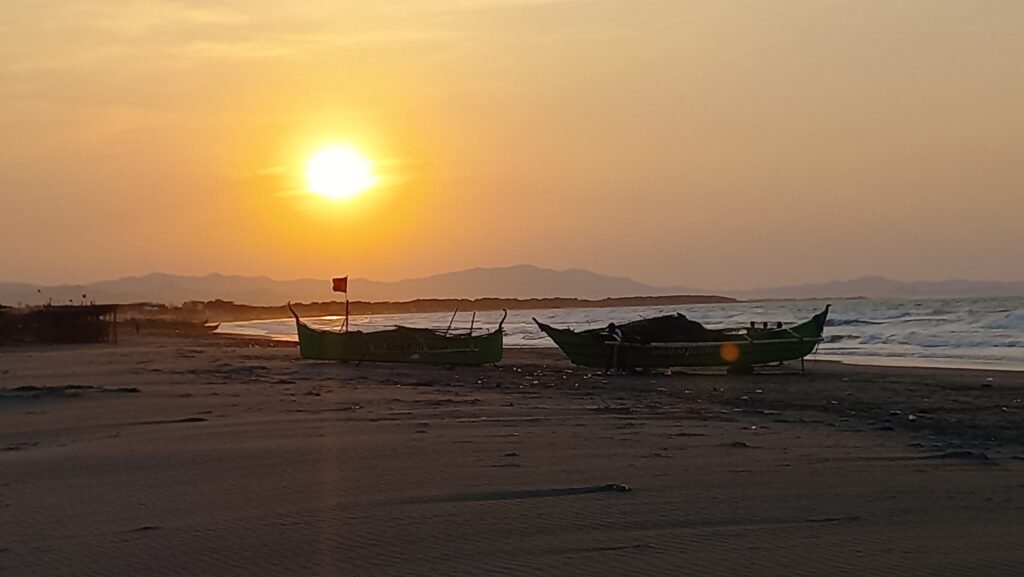
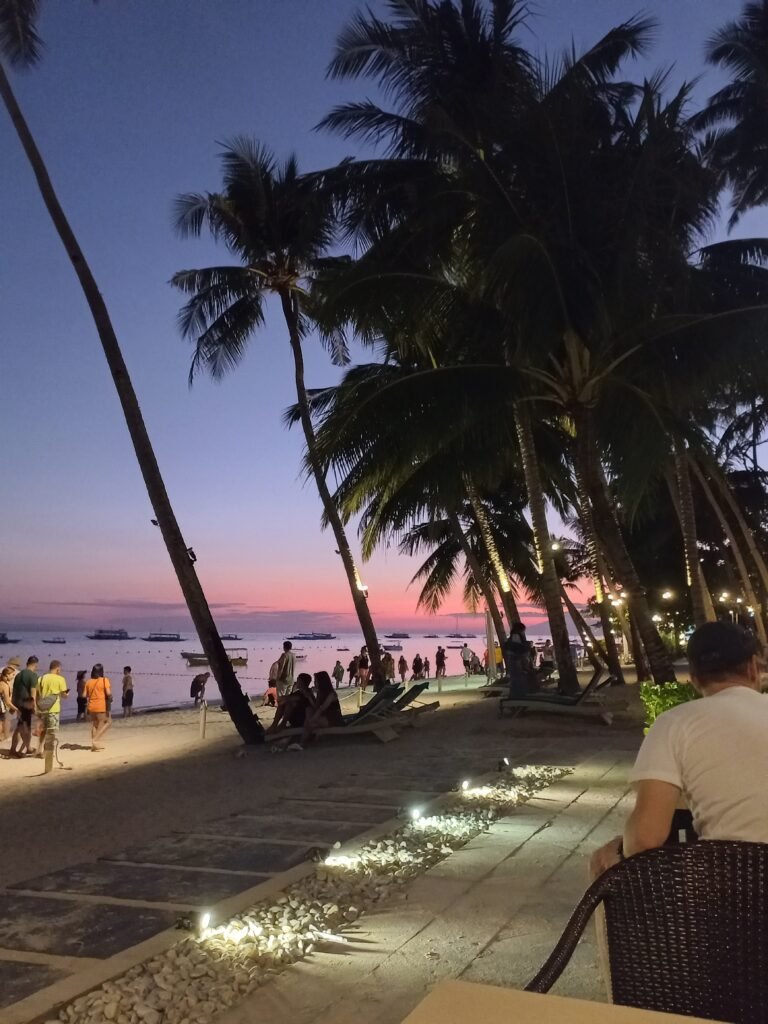
So, grab your passport and sense of adventure, and let’s embark on this journey together. Together, we’ll uncover the magic of the Philippines and create memories that will last a lifetime.
Salamat po, and welcome aboard!
Warm regards,
Cookies on GOV.UK
We use some essential cookies to make this website work.
We’d like to set additional cookies to understand how you use GOV.UK, remember your settings and improve government services.
We also use cookies set by other sites to help us deliver content from their services.
You have accepted additional cookies. You can change your cookie settings at any time.
You have rejected additional cookies. You can change your cookie settings at any time.
Register to vote Register by 18 June to vote in the General Election on 4 July.
- Passports, travel and living abroad
- Travel abroad
- Foreign travel advice
Philippines
Warnings and insurance.

The Foreign, Commonwealth & Development Office ( FCDO ) provides advice about risks of travel to help British nationals make informed decisions. Find out more about FCDO travel advice .
Areas where FCDO advises against travel
Your travel insurance could be invalidated if you travel against FCDO advice.
Western and central Mindanao and the Sulu archipelago
FCDO advises against all travel to western and central Mindanao and the Sulu archipelago because of terrorist activity and clashes between the military and insurgent groups.
Northern and eastern Mindanao
FCDO advises against all but essential travel to the remainder of Mindanao, excluding Camiguin, Dinagat and Siargao Islands, due to the threat of terrorism.
Find out more about why FCDO advises against travel .
Before you travel
No travel can be guaranteed safe. Read all the advice in this guide as well as support for British nationals abroad which includes:
- advice on preparing for travel abroad and reducing risks
- information for women, LGBT+ and disabled travellers
Follow and contact FCDO travel on Twitter , Facebook and Instagram . You can also sign up to get email notifications when this advice is updated.
Travel insurance
If you choose to travel, research your destinations and get appropriate travel insurance . Insurance should cover your itinerary, planned activities and expenses in an emergency.
Related content
Is this page useful.
- Yes this page is useful
- No this page is not useful
Help us improve GOV.UK
Don’t include personal or financial information like your National Insurance number or credit card details.
To help us improve GOV.UK, we’d like to know more about your visit today. Please fill in this survey (opens in a new tab) .

Search Smartraveller

Philippines
Latest update.
Exercise a high degree of caution in the Philippines overall due to the threat of terrorism and violent crime.
Higher levels apply in some areas.
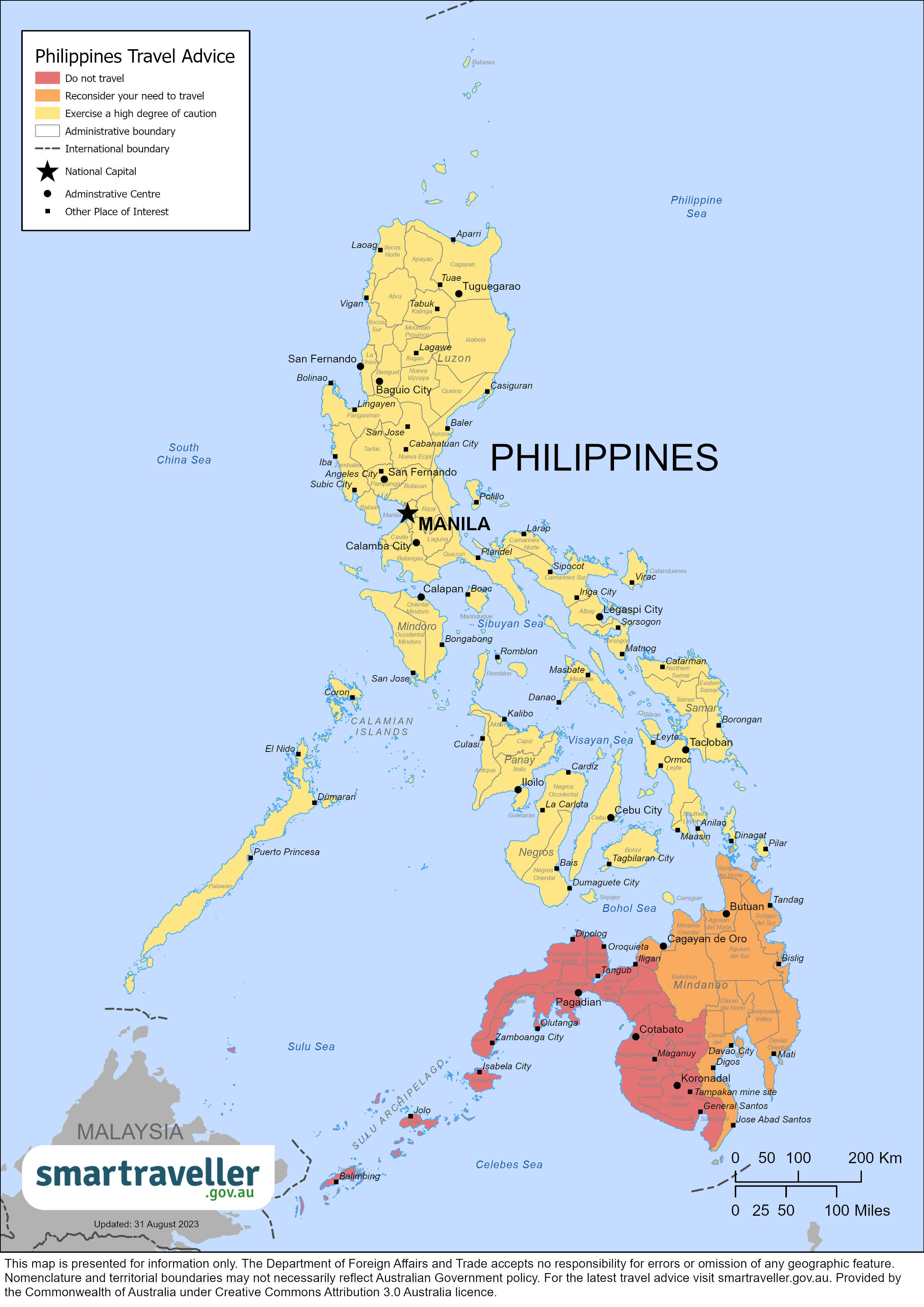
Philippines (PDF 1.97 MB)
Asia (PDF 2.21 MB)
Local emergency contacts
Fire and rescue services, medical emergencies.
Call 117 for the Police National Operations Center hotline.
Or contact your nearest Philippines National Police (PNP) station.
Advice levels
Exercise a high degree of caution in the Philippines overall.
Exercise a high degree of caution in the Philippines overall due to the threat of terrorism and violent crime.
See Safety .
Do not travel to:
- central and western Mindanao, including the Zamboanga Peninsula;
- the Sulu Archipelago; and
- the southern Sulu Sea area
due to the very high threat of terrorism and kidnapping.
Reconsider your need to travel to eastern Mindanao (excluding Camiguin, Dinagat and Siargao Islands).
Reconsider your need to travel to eastern Mindanao (excluding Camiguin, Dinagat and Siargao Islands), due to political violence and the threat of terrorism.
- Terrorist attacks could occur anywhere in the Philippines. Possible targets include aviation and airports, public transport, hotels, shopping malls, restaurants, major events, places of worship and tourist areas. Be alert to possible threats. On 3 December 2023 there was a terrorist attack in Marawi City resulting in four dead and many injured, leading to heightened security arrangements in Mindanao and elsewhere, including Manila.
- Kidnappings occur in the Philippines and kidnappers may target popular tourist areas. The threat of kidnapping and piracy in the southern Philippines is high, especially in the area of the Sulu Archipelago. If you travel to the southern Philippines despite our advice, get professional security advice. Ensure your accommodation has proper security measures. Don't travel by boat.
- Protests can turn violent. It's illegal to take part in political rallies if you're not Filipino. Avoid large public gatherings.
- Violent and other serious crime is common. Many crimes involve guns. Gangs often drug tourists before robbing or assaulting them. Pickpocketing, bag snatching, and scams are common. Don't leave food or drinks unattended. Avoid using public transport. Be careful in crowded shopping malls and other public places. Only use ATMs in secure locations.
- Typhoons, tropical storms, flooding, landslides, earthquakes and tsunamis are common. These events may disrupt essential services. Know your accommodation's evacuation plan.
Full travel advice: Safety
- Medical facilities are generally adequate in major cities. Medical facilities are limited outside cities.
- Malaria and dengue are common, especially in many provincial areas. Other insect-borne diseases include Japanese encephalitis and filariasis. Consider taking anti-malarial medication.
- Foodborne, waterborne and other infectious diseases include cholera, typhoid and hepatitis. Drink only boiled or bottled water. Avoid raw or undercooked food. Don't swim in lakes or rivers.
- HIV/AIDS is a risk. Take precautions if you engage in high-risk activities.
Full travel advice: Health
- If you're accused of a crime, authorities may not let you leave the Philippines until investigations and legal proceedings are finished. These can take a long time, sometimes years.
- Don't use or carry illegal drugs. Penalties are severe and police are strictly enforcing drug laws. Mandatory sentences are common for possessing small amounts of drugs and may include life imprisonment.
- The Philippines has strong laws against child sex crimes and human trafficking. Sentences can include life imprisonment. You can also be charged under Australian law for child sex crimes committed overseas.
- Local laws don't protect LGBTI rights. Consider avoiding public displays of affection.
Full travel advice: Local laws
- You can enter the Philippines without a visa for a period of stay of 30 days or less, provided that you meet all of the requirements and certain conditions . Entry and exit conditions can change at short notice. You should contact the nearest embassy or consulate of the Philippines for the latest details.
- You must register your travel to and from the Philippines on the eTravel Card online portal in order to receive a QR code to use for arrival and departure formalities.
- Airlines and countries you transit throug https://etravel.gov.ph/h may have different requirements. Check and fully understand the requirements of the airline you're travelling with. Also check the requirements of any country you're transiting through. Transit passengers should ensure they meet all entry requirements for the Philippines. Flight cancellations or delays have resulted in transit passengers who do not meet arrival requirements having to remain inside the airport, sometimes for many days.
- Airside transfer is not permitted between Terminal 3, and Terminal 1 or 2 of the Ninoy Aquino International Airport (NAIA). All travellers transiting to or from Terminal 3 must pass through Immigration and meet all Philippine arrival requirements.
Failure to meet entry requirements may result in you being denied entry to the Philippines and detained until the next available flight to your port of departure or Australia, at your own expense.
Full travel advice: Travel
Local contacts
- The Consular Services Charter details what the Australian Government can and can't do to help you overseas.
- For consular help, contact the Australian Embassy in Manila .
- To stay up to date with local information, follow the Embassy’s social media accounts
Full travel advice: Local contacts
Full advice
Terrorist attacks, including bombings, are possible anytime, anywhere in the Philippines, including Manila.
The Philippine media occasionally reports that terrorists may be planning attacks.
Possible targets for future attacks include places travellers and expats visit, such as:
- aviation and airports
- transport hubs and the metro system
- hotels, shopping malls, clubs, restaurants, bars and markets
- places of worship
- outdoor recreation events
- other tourist areas
Mindanao and the southern Philippines
These areas have a high threat of:
- terrorist attacks
- violent crime
- violent clashes between armed groups
We continue to advise do not travel to central or western Mindanao. If despite our advice you visit these areas:
- get professional security advice
- have effective personal security measures in place
If you get into trouble, the Australian Government may be unable to help. In most cases, our ability to provide consular assistance in do not travel locations is extremely limited.
Any travel by Australian officials to do not travel locations is subject to high-level approval and is based on a rigorous risk assessment.
Terror attacks
Terror attacks include:
- On 3 December 2023 there was a terrorist attack in Marawi City resulting in four dead and many injured, leading to heightened security arrangements in Mindanao and elsewhere, including Manila.
- On 24 August 2020, a dual bomb attack in Jolo, Sulu killed 14 people and injured 75.
- On 7 September 2019, a bomb blast in a public market in Sultan Kudarat, Mindanao injured 7 people.
- On 28 June 2019, several soldiers and civilians were killed in a suicide bombing at the entrance to a military base at Indanan in Sulu, Mindanao.
- On 30 January 2019, a grenade attack at the Mahardika mosque in Zamboanga City, Mindanao killed 2 people and injured others.
- On 27 January 2019, a bomb attack at the Roman Catholic Cathedral of Our Lady of Mount Carmel in Jolo, Sulu, Mindanao, killed more than 27 people and injured many more.
Terrorism is a threat worldwide.
More information:
Kidnapping occurs across the world with political, ideological, and criminal motives. Foreigners, including Australians, have been kidnapped overseas whilst travelling. Kidnaps can happen anywhere, anytime, including in destinations that are typically at lower risk.
Kidnapping can happen anywhere in the Philippines, including in metropolitan Manila. Kidnapping can be business, criminal or terrorism-related, and foreign nationals are affected. Kidnappings occur in rural, urban and coastal areas. Criminal kidnappers tend to target individuals perceived as wealthy. The threat is highest in central and western Mindanao, especially:
- along the Zamboanga Peninsula
- in the Sulu Archipelago
- off the coast of Sabah, Malaysia
Locals, expatriates and foreigners, including Australians, have been kidnapped in central and western Mindanao and in eastern Malaysia. Kidnappers sometimes hold victims for a long time, even for years, before releasing them. They sometimes kill their captives.
The threat of piracy in the southern Philippines is high, especially in the Sulu Archipelago.
If, despite our advice, you travel to an area with a high risk of kidnapping, our ability to provide consular assistance in these destinations will be limited.
To reduce the risk of kidnapping:
- always be alert to your personal security and surroundings
- get professional security advice for travel in locations with a heightened kidnap risk
- check your accommodation has appropriate security measures
- avoid isolated locations, particularly when travelling alone
- notify family or friends of planned travel, and share your location
- avoid talking about your money or business affairs
- use ATMs in public places and during daylight hours
- avoid giving personal details to strangers online or over the phone
The Australian Government's longstanding policy is that it doesn't make payments or concessions to kidnappers. Ransom payments to kidnappers have funded further terrorist attacks and criminal activity. Paying a ransom to terrorist groups will likely break Australian counter-terrorism financing laws.
- Travelling by boat
Civil unrest and political tension
Avoid all protests, demonstrations, or rallies, and monitor local media for updated information. See our general information on staying safe in case of demonstrations .
Public protests and events that draw large groups of people are not uncommon and can gather quickly. Sometimes they can turn violent.
It's illegal to take part in political rallies if you're not Filipino. Authorities may deport Australians or cancel their visas for being involved.
Armed clashes occur between security forces and militants, throughout the country but especially in central and western Mindanao.
The armed wing of the Communist Party of the Philippines (CPP), the New People’s Army (CPP-NPA), operates throughout the Philippines. They are often involved in attacks targeting Philippine security forces.
In central and western Mindanao, armed clashes between rival clans and other armed groups are common, often resulting in deaths.
If you see a confrontation between police and criminals or between rival groups, leave the area straight away.
- Demonstrations and civil unrest
Violent crime
Violent crime is a serious problem in the Philippines.
Gun ownership is widespread and poorly regulated. This adds to the high rate of violent crime.
Gunfights between police and criminals have occurred in the past, including in tourist areas in Manila. People, including bystanders, have been killed or injured in such incidents.
Terrorist groups are sometimes involved in violent criminal activities in rural areas. They target business interests, including mining projects, for extortion.
Several Australians have died after property disputes turned violent.
There have been instances where armed criminals have robbed and killed or injured people on:
Avoid travel on these forms of transport.
Gangs are active in Manila, and provincial resort towns.
Gangs can drug, rob or assault tourists.
Drink spiking can occur, including in areas frequented by foreigners in Metro Manila. To reduce the risk of drink spiking:
- never accept food or drinks from strangers or leave drinks unattended
- if you aren't sure if a drink is safe, leave it
- stay with people you trust in bars, nightclubs and taxis
Petty crime and scams
Pickpocketing and bag snatching are common, including in Manila. Be careful in crowded shopping malls, bars and nightclubs, and other public places.
Scams , including those involving property ownership, business ventures, credit cards and ATMs, are common. You should seek legal advice before committing to any major financial decision.
Online relationship and friendship scams are common. In the past, victims, which have included Australians, have been blackmailed or found themselves facing legal action.
- Be cautious of anyone you meet online from overseas.
- Learn the signs of a relationship scam. Know what to watch for.
- Never send money.
- If you've already given them money, don't go overseas to try to get it back.
- Always confirm their identity (including their age), before going overseas to meet them.
Learn more about internet friendship, dating and marriage scams on ScamWatch.
To protect yourself from scams:
- undertake due diligence when entering into business ventures
- only use ATMs in secure locations such as banks, shops and shopping centres
- always keep your debit and credit cards in sight
To protect yourself from crime:
- always keep your personal belongings close, especially in crowded areas
- monitor local sources for information about new security risks
Cyber security
You may be at risk of cyber-based threats during overseas travel to any country. Digital identity theft is a growing concern. Your devices and personal data can be compromised, especially if you’re connecting to Wi-Fi, using or connecting to shared or public computers, or to Bluetooth.
Social media can also be risky in destinations where there are social or political tensions, or laws that may seem unreasonable by Australian standards. Travellers have been arrested for things they have said on social media. Don't comment on local or political events on your social media.
- Cyber security when travelling overseas
Swimming safety
Swimming off coastal areas is risky.
Severe currents and rips are common in coastal areas. Many travellers have drowned, including at popular resorts.
Lifeguards are rarely available.
A red flag means you shouldn't enter the water.
If you plan on swimming:
- take extra care when swimming off coastal areas
- never swim after dark or after consuming alcohol
- don't swim where there are red flags
- get local advice before swimming
Tours and adventure activities
Transport and tour operators don't always follow safety and maintenance standards. This includes for adventure activities such as diving.
If you plan to do an adventure activity :
- check if your travel insurance policy covers it
- ask about and insist on minimum safety requirements
- always use available safety gear, such as life jackets or seatbelts
If proper safety equipment isn't available, use another provider.
Climate and natural disasters
The Philippines experiences frequent natural disasters and severe weather , including:
- Volcanic eruptions
- Earthquakes
To protect yourself during a natural disaster:
- secure your passport in a safe, waterproof place
- monitor news and other weather information sources such as the Global Disaster Alert and Coordination System
- take official warnings seriously and follow the advice of local authorities
- have a plan of what to do
- keep in touch with friends and family
Identify local sources of support and advice that can help you after a natural disaster.
If you're visiting after a natural disaster, contact your tour operator to check if services are affected.
Typhoons usually occur between late May and December and cause significant damage and disruption.
The direction and strength of typhoons can change with little warning.
Typhoons may disrupt communications, including phones and internet. Transportation may also be disrupted.
Heavy rain associated with typhoons may cause localised flooding.
If you're travelling during typhoon season:
- know your accommodation's evacuation plans
- identify your local shelter
- check the latest typhoon information at the Joint Typhoon Warning Centre
If there's a typhoon:
- adequate shelter may not be available
- flights and ferries could be delayed or suspended, and travel could be unsafe
- available flights and ferries may fill quickly
- ports could be affected
Contact your airline for the latest flight information.
- National Disaster Risk Reduction Management Council (NDRRMC)
- Philippine Atmospheric Geophysical and Astronomical Services Administration (PAGASA)
Earthquakes and volcanoes
The Philippines is located on the Ring of Fire. Earthquakes and volcanic eruptions are common. Following an earthquake or volcanic eruption, there may be disruptions to essential services.
- On 27 July 2022, a 7.0 magnitude earthquake occurred in Abra, Northern Luzon, resulting in landslides and damage to infrastructure. The earthquake was felt in Manila.
- On 12 August 2021, a 7.1 magnitude earthquake hit in Governor Generoso, Davao Oriental.
- On 24 July 2021, a 6.6 magnitude earthquake hit at an intermediate depth of 130km beneath the epicentre near Balayan, Luzon.
- On 7 February 2021 a 6.3 magnitude earthquake occurred 6km southeast of Magsaysay, Davao Del Sur at an intensity of 5 (strong) in Kidapawan City causing injuries and damage to the area.
- On 22 January 2021, a 7.1 magnitude earthquake struck off the coast of Jose Abad Santos, Davao Occidental.
- On 25 December 2020, a 6.3 magnitude earthquake occurred offshore near Batangas in central Luzon. This earthquake was felt in Manila.
- In April 2019 a 6.1 magnitude earthquake struck the northern Luzon region. It damaged infrastructure and disrupted essential services, including transport. This earthquake was felt in Manila.
Monitor media reports and follow the advice of the local authorities.
The Philippine Institute of Volcanology and Seismology (PHIVOLCS) has set up permanent danger zones (PDZ) around the summits of several volcanoes:
- Mayon volcano in Albay Province has a 6km PDZ
- Bulusan volcano in Bicol Province has a 4km PDZ
- the entire volcanic island of Taal is a PDZ
Avoid areas around all of these volcanoes.
On 12 January 2020, Taal Volcano, in the southern Luzon province of Batangas, erupted. Residents within 14 km were advised to evacuate, and ash clouds travelling over Manila affected both international and domestic flights at the Ninoy Aquino International Airport (NAIA).
On 26 and 27 March 2022, Taal Volcano erupted again, resulting in a temporary increase to the alert level and evacuation of a number of surrounding communities.
Volcanic activity may increase with little or no notice. It may disrupt flights in the region. Individual airlines make their own decisions about flight operations. Contact your airline or tour operator for up-to-date information.
If there is major volcanic activity, monitor warnings from the Philippine Institute of Volcanology and Seismology (PHIVOLCS) .
Large and destructive tsunamis can happen.
If there's a tsunami warning:
- check the US Tsunami Warning Centre website regularly
- follow the advice of local authorities
Move to high ground straight away if:
- you feel a strong earthquake that makes it hard to stand up
- you feel a weak, rolling earthquake that lasts a minute or more
- you see a sudden rise or fall in sea level
- you hear loud and unusual noises from the sea
Don't wait for official warnings. Once on high ground, monitor local media and weather services.
Travel insurance
Get comprehensive travel insurance before you travel.
Your policy needs to cover all overseas medical costs, including medical evacuation.
If you can't afford travel insurance, you can't afford to travel. This applies to everyone, no matter how healthy and fit you are.
The Australian Government won't pay for your medical expenses overseas or medical evacuation costs. This can be very expensive and if you're not insured, you may have to pay many thousands of dollars up-front.
- what activities and care your policy covers
- that your insurance covers you for the whole time you'll be away
If you travel to central and western Mindanao despite our advice, you'll probably need a specialised insurance policy that covers travel to high-risk destinations. Most Australian policies won't cover you for travel to these areas.
Physical and mental health
Consider your physical and mental health before you travel, especially if you have an existing medical condition.
See your doctor or travel clinic to:
- have a basic health check-up
- ask if your travel plans may affect your health
- plan any vaccinations you need
Do this at least 8 weeks before you leave.
If you have immediate concerns for your welfare or the welfare of someone you know, call the 24-hour Consular Emergency Centre on +61 2 6261 3305 or contact your nearest Australian Embassy, High Commission or Consulate to discuss counselling hotlines and services available in your location.
If you need to speak to counselling services in the Philippines, contact the following:
- In Touch (Crisis Line # +63 2 8893 7603 | +63 917 800 1123 | +63 922 893 8944)
- National Centre for Mental Health (NCMH) (Crisis Hotline +63 917 899 8272 | +63917 898 8272)
You can also contact the Australian Consular Emergency Centre on +61 2 6261 3305.
- General health advice
- Healthy holiday tips (Healthdirect Australia)
Not all medication available over the counter or by prescription in Australia is available in other countries. Some may even be considered illegal or a controlled substance, even if prescribed by an Australian doctor.
If you plan to bring medication, check if it's legal in the Philippines. Take enough legal medicine for your trip.
Carry a copy of your prescription or a letter from your doctor stating:
- what the medication is
- your required dosage
- that it's for personal use
Health risks
Rabies is a risk throughout the Philippines, including in Manila.
To protect yourself from rabies:
- avoid direct contact with dogs
- don't feed or pat animals
- avoid contact with other animals, including bats.
Talk to your doctor about getting a pre-exposure rabies vaccination if you're planning to:
- stay in the Philippines for a long time
- work with animals.
If bitten or scratched by an animal:
- immediately use soap and water to wash the wound thoroughly
- seek urgent medical attention.
There have been recent measles outbreaks throughout the Philippines, including Manila.
In 2019, the Philippines reported more than 47,000 cases of measles and over 630 deaths. The Philippines Department of Health advised the outbreak was under control in April 2019; however, the outbreak declaration has not lifted.
Get vaccinated against measles.
- Philippines Department of Health
- Australian Department of Health and Aged Care
Polio is an infectious disease that can spread rapidly and mainly affects young children. It can cause muscle weakness, paralysis and, on rare occasions, it can be fatal. Make sure you're vaccinated against polio.
On 19 September 2019, the Philippines Department of Health reported a polio outbreak. This was declared to have ended in June 2021.
- Department of Health and Aged Care
- World Health Organization
Insect-borne illnesses
Malaria , dengue , Japanese encephalitis , filariasis , and other insect-borne illnesses are increasing in Manila and neighbouring provinces.
These illnesses are more common during the rainy season between May and December.
Get vaccinated against Japanese encephalitis before you travel.
There's no vaccination or specific treatment available for dengue or Zika virus .
If you're pregnant, the Australian Department of Health recommends that you:
- discuss travel plans with your doctor
- consider deferring non-essential travel to affected areas
To protect yourself from disease:
- make sure your accommodation is insect-proof
- use insect repellent
- wear long, loose, light-coloured clothing
- consider taking medicine to prevent malaria
- Infectious diseases
- Dengue Fact Sheet - WHO
HIV/AIDS is a risk for travellers.
Take precautions if you engage in activities that expose you to risk of infection.
Condoms may be difficult to find outside Manila.
Other health risks
Waterborne, foodborne, parasitic and other infectious diseases are common, including:
- Tuberculosis
- Meningitis
Serious outbreaks can occur.
Lakes and rivers can contain waterborne diseases, such as:
- Bilharzia (schistosomiasis)
- Leptospirosis
Risks are highest after flooding and continue after floods recede.
Swimmers in coastal resort areas have also reported illness from pollution.
To reduce your risk of illness:
- drink boiled water or water from bottles with sealed lids
- avoid ice cubes
- avoid uncooked and undercooked food, such as salads
- don't swim in fresh water sources
- always check with local authorities before swimming in waters
Get medical advice if you suspect food poisoning or have a fever or diarrhoea.
Fish poisoning
Ciguatera fish poisoning from eating reef fish can be a hazard.
- Ciguatera poisoning information (NSW Food Authority)
Bird flu (avian influenza)
Avian influenza occurs in farm birds.
To protect yourself from avian influenza:
- stay away from live poultry
- don't visit live bird and animal markets, including 'wet' markets and poultry farms
When preparing food, handle poultry properly. Make sure you thoroughly cook all parts of the poultry.
Medical care
Medical facilities.
Major private hospitals, particularly in Metro Manila, are well-equipped and internationally accredited. Medical facilities in rural/regional areas may have limited services and facilities, including in some popular tourist destinations.
Most hospitals need up-front payment or guarantee of payment before they'll treat you. Treatment can be expensive.
Hospitals may cease treatment if ongoing bills are not settled. You should ensure you understand what your Philippine health fund or travel insurance provider will and will not cover.
Decompression chambers are available in:
- Bacolod, Negros Occidental
- Batangas City
- Cavite City
- Cebu City, Cebu
- Coron, Palawan
- Davao City, Davao
- Makati City
- Manadaue City, Cebu
- Quezon City
- Panglao, Bohol
- Puerto Galera, Oriental Mindoro
- Puerto Princesca City, Palawan
- Tacloban City, Leyte
It is common for decompression chambers not to be working.
If you become seriously ill or injured, you may need to be evacuated. Medical evacuation can be very expensive.
For a list of hospitals in the Philippines visit the Philippine Department of Health website.
You'll be subject to all local laws and penalties, including those that may appear harsh by Australian standards. Research local laws before travelling.
If you're arrested or jailed, the Australian Government will do what it can to help you under our Consular Services Charter . But we can't get you out of trouble or out of jail.
If you're accused of a crime, authorities may not let you leave the Philippines until investigations and legal proceedings are finished.
The justice process can take a long time. Some court cases take years and you may be held in detention for a long time before your trial is finalised.
Australians accused of crimes have experienced financial and other difficulties while waiting for their cases to finish.
Penalties for drug offences are severe. They include long jail terms, including life imprisonment, for even small amounts.
A major clampdown on drugs - the war on drugs - has been underway since 2016. There are mandatory jail sentences for possessing even small amounts of illicit drugs. Thousands have been arrested and a large number of people have been killed in drug-related violence.
- Carrying or using drugs
The Philippines also has strong laws against child sex crimes and human trafficking. Authorities have arrested and prosecuted a number of foreigners, including Australians, for these offences. Sentences can include life imprisonment.
It's illegal to take photos of official buildings for publication.
Australian laws
Some Australian criminal laws still apply when you're overseas. If you break these laws, you may face prosecution in Australia.
- Staying within the law
Local customs
Local laws don't protect LGBTI rights.
Locals generally tolerate the LGBTI community. However, open displays of affection between same-sex partners may offend.
- Advice for LGBTI travellers
Dual citizenship
The Philippines recognises dual nationality.
Always travel on your Australian passport .
- Dual nationals
Visas and border measures
Every country or territory decides who can enter or leave through its borders. For specific information about the evidence you'll need to enter a foreign destination, check with the nearest embassy, consulate or immigration department of the destination you're entering.
You are permitted to enter the Philippines without a visa for a period of stay of 30 days or less provided that you meet all of the requirements.
See the following links for the latest information:
- Philippine Embassy in Australia website
- Philippines Bureau of Immigration website
- Philippines Office of Consular Affairs website
- Philippines Tourism
Ensure you keep your visa up to date. Failure to do so may result in you being:
- fined or arrested
- detained in immigration detention
- deported back to Australia at your cost
- blacklisted from future travel to the Philippines
Detention conditions in the Philippines do not compare with Australian standards, and deportation processes can be lengthy.
You can apply to extend your tourist visa (visa waiver) through the Philippines Bureau of Immigration and pay the appropriate fees.
Entry and exit conditions can change at short notice. Get further details about visas, currency, customs and quarantine rules from:
- the nearest embassy or consulate of the Philippines
- the Philippines Bureau of Immigration website
Border measures
Australians are permitted to enter the Philippines without a visa for a period of 30 days or less provided that you meet all of the requirements .
Your passport must be valid for at least six months, and you must have onward/return tickets for no later than 30 days from your arrival in the Philippines.
You must register at the eTravel online portal and complete the electronic health declaration checklist in order to receive a QR code for validation by the Bureau of Quarantine.
Children under 15 years of age may need a Waiver of Exclusion Ground if they're:
- not accompanied by a parent
- coming to meet a parent or parents in the Philippines
You should declare any:
- local cash of more than PHP50,000 to Bureau of Customs officers at the airport when you arrive or leave
- amounts of more than $US10,000 or of the same value in a different foreign currency
- this covers all forms of currency, not only cash.
Confirm requirements through your travel provider or nearest Philippine Embassy.
Check and fully understand the requirements of the airline you're travelling with, as their requirements may be different.
Failure to meet entry requirements may result in you being denied entry to the Philippines and detained until the next available flight to your port of departure or to Australia. This will be at your own expense.
Departure from the Philippines
You must register your departure from the Philippines on the eTravel online portal within 72 hours (but not less than 3 hours) before your scheduled departure.
Airlines and transiting country protocols may differ. It's important that you check and fully understand the requirements of the airline you are travelling with. You should also check requirements for the country you are transiting through.
You must have current visas and exit paperwork to depart. You may need an Emigration Clearance Certificate (ECC) from the Philippines Bureau of Immigration before you leave the Philippines if you have stayed in the Philippines for more than six months. You'll need to visit an immigration office in person to undertake biometrics. Allow enough time to complete the process at immigration office. For more information visit the Philippines Bureau of Immigration .
Children born in the Philippines who are leaving the country for the first time on a foreign passport will need an ECC.
You must pay any outstanding visa fees or fines or risk not being able to depart the country. You may be detained by the Philippine Government and subject to a lengthy deportation process.
You must have no outstanding legal issues or court cases. You need to contact the relevant court or the Bureau of Immigration to confirm that you do not have any travel restrictions (Hold Departure Order; Watchlist and Blacklist).
Check the Philippines Bureau of Immigration website for more detailed information or make an appointment to settle your visa issues.
Depending on your Philippine visa type (such as those issued by the Philippine Department of Justice (DoJ), the Philippine Board of Investments (BoI), the Philippine Retirement Authority (PRA) or the Philippine Economic Zone Authority (PEZA)), you may need to obtain a Travel Pass from the Department that issued your visa in order to leave the Philippines. If you hold an ECC issued by the Bureau of Immigration you may be exempt from this requirement.
If you're leaving the Philippines from Mactan-Cebu or Clark International Airports, you need to pay a departure tax.
If transiting through a third country, ensure you have completed any forms to transit that country. Ensure you have six months validity on your passport.
Transiting through the Philippines
All passengers transiting through the Philippines should ensure they meet all Philippine arrival requirements . Flight cancellations or delays have resulted in transit passengers who do not meet arrival requirements, having to remain inside the airport, sometimes for many days.
Airside transfer is not permitted between Terminal 3 and Terminal 1 or 2 of NAIA. All travellers transiting to or from Terminal 3 must pass through Immigration and meet all Philippine arrival requirements. You should allow plenty of time for arrival formalities and check-in for your next flight.
If you're denied entry, the Australian Embassy is not able to intervene in any decisions made by the Bureau of Immigration.
You should discuss options for transit with your airline or travel agent.
Some countries won't let you enter unless your passport is valid for 6 months after you plan to leave that country. This can apply even if you're just transiting or stopping over.
Some foreign governments and airlines apply the rule inconsistently. Travellers can receive conflicting advice from different sources.
You can end up stranded if your passport is not valid for more than 6 months.
The Australian Government does not set these rules. Check your passport's expiry date before you travel. If you're not sure it'll be valid for long enough, consider getting a new passport .
If you need to renew or replace your passport, please contact the Australian Embassy directly for advice about how we can assist you.
Lost or stolen passport
Your passport is a valuable document. It's attractive to people who may try to use your identity to commit crimes.
Some people may try to trick you into giving them your passport. Always keep it in a safe place.
If you lose your passport on arrival into the Philippines, before passing through Immigration, you'll be refused entry to the Philippines. You'll be sent back to your port of origin by Philippine Government and the Australian Government is unable to help.
If your passport is lost or stolen, tell the Australian Government as soon as possible:
- In Australia, contact the Australian Passport Information Service .
- If you're overseas, contact the nearest Australian embassy or consulate .
Passport with ‘X’ gender identifier
Although Australian passports comply with international standards for sex and gender, we can’t guarantee that a passport showing 'X' in the sex field will be accepted for entry or transit by another country. Contact the nearest embassy, high commission or consulate of your destination before you arrive at the border to confirm if authorities will accept passports with 'X' gender markers.
More information:
- LGBTI travellers
The local currency is the Philippine peso (PHP). You can easily convert AUD for PHP at airports, banks, shopping centres, tourist locations, in major cities and towns.
ATMs are widely available. International credit cards are generally accepted in hotels, restaurants and higher-end shops, particularly in cities and larger towns. However, it is advisable to keep some cash. Card skimming occurs.
Local travel
Travelling in the Philippines takes longer than it does in Australia.
Driving permit
You can use an Australian driver's licence for up to 90 days after you arrive. After that, you need to get a Philippines licence.
- Land Transportation Office
Road travel
Roads are generally congested and often in poor condition. Drivers often break the road rules.
Avoid driving off the national highways and other sealed roads, especially at night.
You're more likely to die in a motor vehicle accident in the Philippines than in Australia.
- Driving or riding
Motorcycles
Certified helmets are mandatory when riding in major cities. Accidents are frequent.
Check if your travel insurance policy covers you when riding a motorbike and if any exclusions apply. You might not be covered if you don't have a valid Australian motorcycle licence.
Be careful if using taxis and remain alert. Some taxis are unroadworthy or may be unsafe due to poor maintenance. There have been cases where drivers and their accomplices have robbed or harmed passengers. Avoid displaying money or jewellery in taxis and don't hand your mobile phone to your driver if asked.
Use ridesharing apps and Grab taxis (the equivalent of Uber) or hire cars sourced from hotels as a preference. They're more reliable than taxis hailed on the street.
Public transport
Public road (bus, jeepneys) and rail transport is widely used throughout the country but should be avoided due to safety and security risks. See Safety .
- Transport and getting around safely
Sea travel in the Philippines can be hazardous.
Avoid ferries if you can.
If you must travel by sea:
- use a ferry service with a good reputation
- don't use ferries that are overcrowded and appear poorly maintained
- take your own lifejacket
Piracy and kidnapping occur in Philippine waters. See Safety
DFAT doesn't provide information on the safety of individual commercial airlines or flight paths.
Check the Philippines' air safety profile with the Aviation Safety Network website.
Emergencies
Depending on what you need, contact your:
- family and friends
- travel agent
- insurance provider
Always get a police report when you report a crime.
Your insurer should have a 24-hour emergency number.
Consular contacts
Read the Consular Services Charter for what the Australian Government can and can't do to help you overseas.
For consular help, see contact details below.
Australian Embassy, Manila
Level 23 Tower 2 RCBC Plaza 6819 Ayala Avenue Makati City, 1200, Philippines Phone: (+63 2) 7757 8100
Fax: (+63 2) 7757 8344
Email Consular assistance: [email protected]
Email Passport enquiries: [email protected]
Email Notarial enquiries: [email protected]
Website: philippines.embassy.gov.au
Facebook: Australia in the Philippines
X: @AusAmbPH
Check the Embassy website for details about opening hours and any temporary closures.
24-hour Consular Emergency Centre
In a consular emergency, if you can't contact an embassy, call the 24-hour Consular Emergency Centre on:
- +61 2 6261 3305 from overseas
- 1300 555 135 in Australia

Travelling to Philippines?
Sign up to get the latest travel advice updates..
Be the first to know official government advice when travelling.
We’re sorry, this site is currently experiencing technical difficulties. Please try again in a few moments. Exception: request blocked
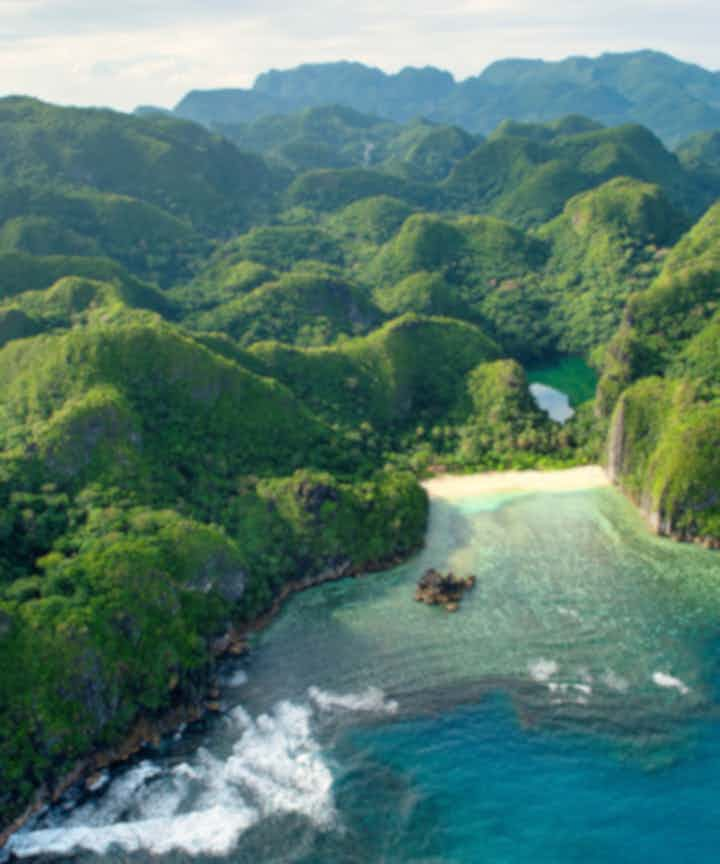
Top Philippines Travel Information
Philippines travel categories.
Discover everything you can experience in the Philippines
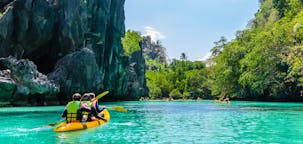
Detailed Articles about the Philippines
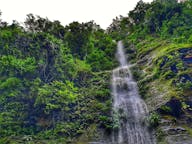
What to Experience in the Philippines
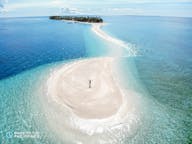
Information about Islands & Beaches in Philippines
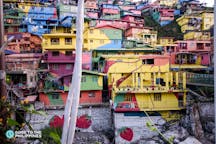
History & Culture of the Philippines

Philippines' adventure & outdoor activity information
Best articles about the philippines.
Explore our most valuable travel tips about the Philippines
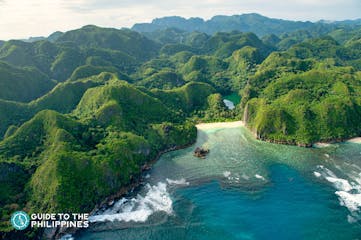
Philippines Travel Guide: Everything You Need to Know

Siargao Budget: 3 Days for Only PHP6500 at the Surfing Capital of the Philippines

Best Palawan Guide: Top Tours, Where to Stay, How to Get Around

El Nido Palawan Travel Guide: Hotels, Itinerary & Tips

Best Boracay Island Travel Guide: Tours + Hotels & Resorts

Bohol Philippines Travel Guide: What to Do + Hotels

Top 14 El Nido Palawan Activities and Tourist Spots: Stunning Beaches, Islands & Lagoons

What to Do in Boracay: Best Tourist Spots and Activities
Top attractions in the philippines.
Find all the tourist spots and hidden gems in the Philippines
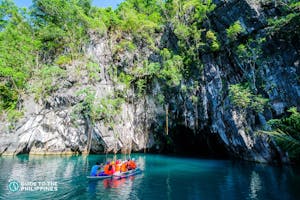
Underground River

White Beach Boracay

Chocolate Hills
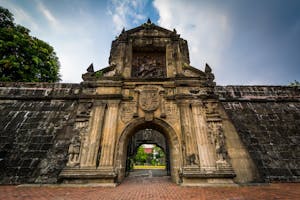
Kayangan Lake
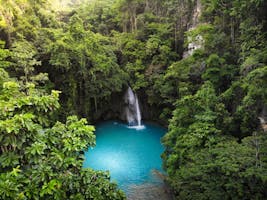
Kawasan Falls
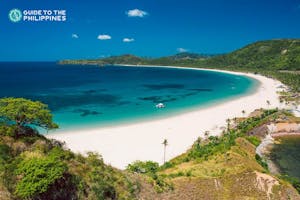
Nacpan Beach

Calle Crisologo
Best vacations in the philippines.
Choose the easiest way to experience the best trips in the Philippines
Epic 3-Day Palawan Boat Expedition Island Tour from El Nido to Coron with Accommodations & Meals
4-day balabac palawan private package with island hopping tours, meals & puerto princesa transfers, relaxing 4-day beachfront mithi resort bohol package from manila, amazing 4-day movenpick boracay 5-star resort package with airfare from manila or clark & transfers.
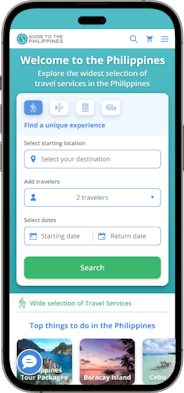
Download the Philippines’ biggest travel marketplace to your phone to manage your entire trip in one place
Scan this QR code with your phone camera and press the link that appears to add the Philippines’ biggest travel marketplace into your pocket. Enter your phone number or email address to receive an SMS or email with the download link.
Top things to do in the Philippines
Discover all the adventures you can experience in the Philippines
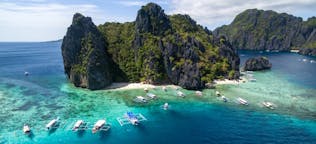
Philippines Tour Packages
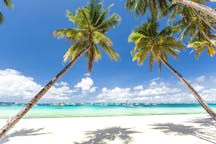
Boracay Island
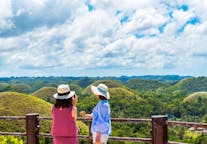
Bohol Island
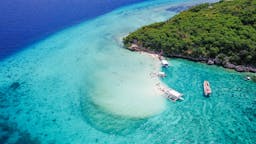
Cebu Island
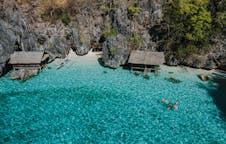
Coron Palawan
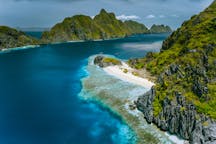
El Nido Palawan
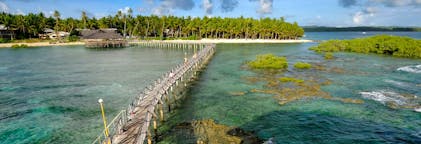
Siargao Island
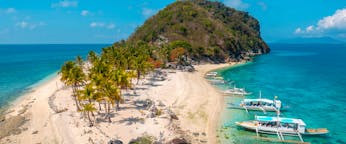
Iloilo City and Nearby
DOH orders 'thorough screening' of arrivals from countries with COVID 'FLiRT' cases

ADVERTISEMENT

30 Interesting Facts About the Philippines
The most interesting facts about the Philippines, from a world record for breastfeeding to the Selfie Capital of the World.
Official name: Republic of the Philippines
Population: 118 million
Area: 300,000 sq km
Capital city: Manila
Major languages: Filipino (Tagalog), English
Major religions: 79.5% Roman Catholic, 9 percent other Christian groups, 6-11% Muslim
Time zone: UTC+8 (Philippine Standard Time)
Interesting facts about the Philippines
1. The Philippines is an island nation in Southeast Asia, located approximately 500 miles (800km) off the coast of Vietnam in the Pacific Ocean.
2. The Philippine archipelago is made up of 7,641 islands.
3. The Philippines is the world’s second-largest archipelagic state by population after Indonesia, and the third-largest by area after Indonesia and Papua New Guinea.
4. For decades, it was believed there were only 7,107 islands, but in 2016, the national mapping authority reported that over 500 new islands had been discovered, although not all have been verified.
5. Despite being made up of over 7,000 islands, the majority of the population lives on just 11 of them.
6. Archaeological evidence suggests the Philippines has been inhabited for over 700,000 years.
7. The Philippines were a Spanish colony for more than three centuries from 1542. In 1898, they were ceded from Spain to the US following the Spanish-American War.
8. The country was named after a 16th-century Spanish king, King Phillip II, after explorer Ruy Lopez de Villalobos visited some of the islands in 1543.
9. The Philippines is the only country in Southeast Asia that was subjected to European colonialism before it developed a dominant culture or a centralized government of its own.
10. Many Filipinos have Spanish names because of a 19th-century Spanish decree that required them to use Spanish surnames. Parents often name their children after the saint whose feast day was on the day of their birth.
11. The Filipino flag is made up of blue and white horizontal stripes and a white triangle featuring a golden sun and three stars. The blue stands for the willingness to sacrifice oneself for freedom, red for courage and the white for liberty. The stars and the sun and its rays represent various regions of the country.
12. When the flag is inverted or flown upside down, it signals the nation is in a state of war. In 2010, the US had to apologise for accidentally flying the Philippine flag upside down during a presidential event in New York.
13. The Philippines is located along the Ring of Fire, a belt of active volcanoes and earthquake epicentres bordering the Pacific Ocean. Up to 90% of the world’s earthquakes and 75% of the world’s volcanoes occur within the Ring of Fire.
14. The Philippines is home to Taal Volcano, one of 16 Decade Volcanoes. Decade Volcanoes have been identified by the International Association of Volcanology and Chemistry of the Earth’s Interior (IAVCEI) as the most dangerous volcanoes on the planet due to their history of destructive eruptions and proximity to populated areas.
15. The Philippines also straddles the Pacific typhoon belt. Annually, an average of nine typhoons hit the Philippines with around five of these classed as destructive. As such, the country is the most exposed in the world to tropical storms.
16. In 1946, after decades of American rule and three years of Japanese occupation during the Second World War from 1942 to 1945, the islands finally gained full independence and were renamed Republic of the Philippines.
17. The Philippines is famous for its Jeepneys. Jeepneys are colourful buses usually decorated with religious and nationalistic artwork. They are the country’s cheapest and most popular mode of public transport. However, recently they’re being phased out to ease city congestion.
18. The Philippines endured nearly a decade of martial law from 1972 until 1981 under President Ferdinand Marcos. After 20 years of rule, Marcos was driven from power in 1986.
19. In 2014, Makati City in Manila was named the Selfie Capital of the World with 258 selfie-takers per 100,000 people – more than second-placed Manhattan in New York.
20. Filipinos love karaoke and almost every Philippine home has a karaoke machine. In fact, it was Filipino inventor Roberto del Rosario who developed the Karaoke Sing-Along System in 1975.
21. The UNESCO-listed Rice Terraces of the Philippine Cordilleras are one of the most famous sights in the country. The contoured rice terraces have existed for over 2,000 years. However, some scholars have argued in recent years that the site is, in fact, 300-400 years old.
22. The Puerto-Princesa Subterranean River is thought to be the world’s longest navigable underground river. It’s navigable up to 4.3 km.
23. The Philippines saw the largest ever papal event when, in 2015, as many as seven million people flocked to see Pope Francis deliver an open-air Mass in Manila.
24. The Cebu sardine run sees millions of sardines migrate along Panagsama Beach in the Moalboal region. Mass fishing is prohibited, so it’s possible to swim and dive with the giant shoals of fish.
25. The yo-yo was invented in the Philippines. There are examples of yo-yos existing in ancient cultures including in China (circa 1000 BC) and Greece (circa 500 BC), but the first yo-yos manufactured in America in the early 20th century were made by Pedro Flores (1896-1964), a Filipino immigrant who eventually sold the trademark to the Duncan Yo-Yo Company.
26. The Philippines set the world record for simultaneous breastfeeding when around 10,000 mothers fed their babies at the same time. The event was organised to highlight the nutritional benefits of breastfeeding.
27. The Philippines is one of 17 megadiverse countries in the world. Megadiverse countries are the world’s most biodiversity-rich countries.
28. The Philippines are home to the world’s longest snake. The reticulated python typically weighs 75kg (165lb) and can grow longer than 7m (23ft) and is known to attack humans.
29. The Philippines has the longest Christmas season in the world: from September to January. The festive season is marked by traditional masses, light displays and family gatherings.
30. In 2016, the world’s natural giant clam pearl was discovered in the Philippines. Weighing 34kg, the pearl was actually found 10 years ago by a fisherman who was unaware of its value. It easily surpassed the previous record-holder, the Pearl of Lao Tzu, which weighs 6.4kg and was found in the Philippines in 1934.
Every effort has been made to verify these facts about the Philippines. However, if you find an error or have any questions, please contact us .


Plan & Book
Flight information, infinity mileagelands, business travel, please select your country / region of residence, jet-set with savings: the great bdo travel sale unleashes exclusive bank discounts.

Kindly take note that flight schedules are subject to change without prior notice.
For inquiries, please call our Manila Town Ticketing Office Reservations hotline at (02) 8539-3987.
This site uses cookies.
EVA Air's websites use cookies and similar technologies for the best experience on our website, including personalized services, ads and traffic analysis. These cookies include targeted media cookies and advanced analytics cookies. By clicking on "Accept", you agree to the use of cookies. You can change your cookie preference by clicking on the "Change your cookie settings" button.
For more detailed information on the cookies we use, please check our Cookie Policy .
Essential cookies are essential for the operation of our website that will let you move around our website freely and use functions on the websites. These cookies don’t gather your personal identifiable information that could be used for marketing and are not disclosed to any third party.
Typhoon leaves at least seven people dead and thousands displaced in the Philippines
A typhoon has finally moved away from the Philippines, leaving at least seven people dead, mostly due to floods or toppled trees
MANILA, Philippines -- A typhoon has finally moved away from the Philippines, leaving at least seven people dead, mostly due to floods or toppled trees, and forcing the closures of several seaports, stranding thousands of passengers, officials said Tuesday.
Typhoon Ewiniar crept by the country's eastern coast late Friday night and lingered over the Philippine islands for several days, before shifting northeastward away from the archipelago. All storm warnings were lifted Tuesday.
The typhoon's shift in direction spared the densely populated capital, Manila, from a potentially damaging hit.
Ewiniar, locally known as Aghon, was last tracked Tuesday about 450 kilometers (280 miles) east of the northern town of Basco in Batanes province with sustained winds of 130 kph (81 mph) and gusts of up to 160 kph (99 mph), according to government forecasters.
At least six villagers drowned in floodwaters or died after being hit by falling trees during the sudden deluge in the hard-hit province of Quezon, provincial police said. In southern Misamis Oriental province, a villager died when a tree fell and struck a motorcycle taxi she was riding on with her sister as they were on their way to school, police said.
Many villages were overwhelmed by flash floods. Some low-lying areas were engulfed in up to eight feet (2.4 meters) of water in Lucena, Quezon province's capital city. The flooding was partly due to clogged drainage systems after an extra-hot summer season, Quezon Governor Angelina Tan and other provincial officials said.
Tan said many houses, including the governor’s residence, were damaged by fierce wind and torrential rains. The typhoon forced her to seek shelter elsewhere while overseeing the distribution of food and other aid to displaced villagers, she said.
Before flying to Brunei on Tuesday for a state visit, President Ferdinand Marcos Jr. said more than 26,700 people were affected by the typhoon, including many who fled to evacuation centers in five provincial regions. Three airports and 29 seaports could not operate normally due to the typhoon while six cities and towns were hit by power outages, he said.
More than 4,800 passengers, truck drivers and cargo helpers were stranded at one point due to seaport closures as the typhoon lashed southern and central provinces, the Philippine coast guard said.
"Even before the typhoon hit, we've transported relief goods in places near the typhoon’s expected path, so they were all ready,” Marcos said.
About 20 typhoons and storms each year batter the Philippine archipelago, which also lies in an Asian region often hit by earthquakes and volcanic eruptions, making it one of the world's most disaster-prone countries.
In 2013, Typhoon Haiyan, one of the strongest on record, left more than 7,300 people dead or missing, flattened entire villages, swept ships inland and displaced more than 5 million in the central Philippines.
Related Topics
- Philippines
Trending Reader Picks

Novak Djokovic keeps his French Open title defense going by getting past Lorenzo Musetti in 5 sets
- Jun 1, 9:14 PM

South Africa heading for 'coalition country'
- May 31, 4:40 AM

Ticketmaster reveals data breach
- Jun 1, 12:42 PM

Man indicted after shots fired at grocery store
- May 31, 10:35 PM

Concerns grow after Papua New Guinea landslide
- May 28, 12:00 AM
ABC News Live
24/7 coverage of breaking news and live events

IMAGES
VIDEO
COMMENTS
Philippine One-Stop Electronic Travel Declaration System. In compliance with Ease of Doing Business Law (R.A. 11032), an act promoting ease of doing business and efficient delivery of government services.
1. Travelers 15 years and older shall present a remotely supervised/laboratory-based Rapid Antigen Test administered and certified by a healthcare professional in a healthcare facility, laboratory, clinic, or other similar establishment taken 24 hours prior to the date and time of departure from country of origin/first port of embarkation in a ...
Call us in Washington, D.C. at 1-888-407-4747 (toll-free in the United States and Canada) or 1-202-501-4444 (from all other countries) from 8:00 a.m. to 8:00 p.m., Eastern Standard Time, Monday through Friday (except U.S. federal holidays). See the State Department's travel website for the Worldwide Caution and Travel Advisories.
Philippine Travel Information System. Simplify your travel with eTravel. eTravel is FREE. or. Download eGovPH app. In collaboration with. In compliance with Ease of Doing Business Law (R.A. 11032), an act promoting ease of doing business and efficient delivery of government services.
U.S. Embassy Manila, Philippines. U.S. Consular Agency Cebu, Philippines June 8, 2022 Message for U.S. Citizens: Philippine Entry and Exit Requirements Entry to the Philippines: Although travel to the Philippines is now permitted, U.S. citizens should know and comply with arrival and departure requirements as promulgated by the Philippine government, which generally include the following as a ...
The eTravel form is an online form used to collect personal and travel information from passengers entering and exiting the Philippines for the purpose of immigration, border control, data analysis, and health surveillance. It serves as your departure/arrival card, health declaration, and contact tracing form.
In light of the current COVID-19 situation, the Philippines has implemented temporary travel restrictions to contain the spread of COVID-19. We urge you to stay home and follow community quarantine protocols. Learn more.
Philippines. Asia. The Philippines is defined by its emerald rice fields, teeming megacities, graffiti-splashed jeepneys, smoldering volcanoes, bug-eyed tarsiers, fuzzy water buffalo and smiling, happy-go-lucky people. Best Time to Visit. 01 / Attractions.
For those who want to travel to the re-opened destinations and top tourist spots in the Philippines, we've collected the information you need to plan your vacation in the new normal. Read on to find out which Philippine destinations are open for leisure travel, what their travel requirements are, and other restrictions and guidelines imposed ...
15 Best Tropical Bali-Like Resorts in the Philippines: Near Manila, Siargao, Cebu, Bohol. Photos by The Forest Camp Resort/Nay Palad HideawayBali is a go-to spot for travelers wanting to escape to idyllic beaches and breathtaking backdrops with majestic temp. Most recommended.
Best Time to Go to the Philippines. The Philippines has two distinct seasons, wet and dry. The dry season starts from November until June. These months are considered the best time to travel to most destinations in the Philippines. The wet season, on the other hand, is from July to October.
HomeData PolicyFAQContact. Philippine One-Stop Electronic Travel Declaration System. You may only register within 72 hours prior to your arrival or departure in the Philippines. Travelers are enjoined to present their eTravel QR code to flight boarding. Initiative of the Government of the Philippines:
Travel Advisory. May 16, 2024. Philippines - Level 2: Exercise Increased Caution. K U T C. Updated to reflect changes in the country summary and information on the Sulu Archipelago, Marawi City. Exercise increased caution to the Philippines due to crime, terrorism, civil unrest, and kidnapping. Some areas have increased risk.
Learn useful information about the Philippines. This Philippine travel guide summarizes everything from transportation, destinations, food, drinks, accommodations, and so much more. Introduction . The Philippines is an archipelago located in Southeast Asia in the western Pacific Ocean.
Note: etravel.gov.ph now replaces the One Health Pass and remains mandatory for all travelers, Filipino and non-Filipino alike. The Embassy would like to remind the public that this website is FREE OF CHARGE and to be vigilant in recognizing fraudulent websites.. For International Arrivals in the Philippines: Presentation of vaccination status and vaccination certificate for COVID-19 is no ...
For information traffic safety and road conditions in the Philippines, see Travel and Transportation on US Department of State's country-specific information for the Philippines. Hide. Maintain personal security. Use the same common sense traveling overseas that you would at home, and always stay alert and aware of your surroundings. ...
The Philippines is a very budget friendly travel destination, with hostels available from 300 Philippine pesos ($5 USD) and private hotels from 600 pesos. Meals are also cheap, costing about 70 to 300 pesos depending on location. Transportation in the Philippines is generally by motorbike or car, and these can be rented, but hiring a driver is ...
How to Much to Budget in the Philippines Per Day. Budget traveler: If you're on a tight budget and want to watch your spending closely, $20 - $30 per day could be sufficient. Mid-range traveler: If you want to have a few splurges and stay in nicer accommodation, plan to budget $35 - $50 per day. Dorm bed = $5-$7.
Petty crime, such as pickpocketing, swarming and bag snatching, occurs, especially in urban areas. Ensure that your belongings, including your passport and other travel documents, are secure at all times. Be careful in crowded shopping malls and other public places. Avoid carrying large sums of money.
Your ultimate source for travel news, tips, and inspiration in the Philippines
Travelling to Philippines. FCDO travel advice for the Philippines. Includes safety and security, insurance, entry requirements and legal differences.
Safety. Terrorist attacks could occur anywhere in the Philippines. Possible targets include aviation and airports, public transport, hotels, shopping malls, restaurants, major events, places of worship and tourist areas. Be alert to possible threats. On 3 December 2023 there was a terrorist attack in Marawi City resulting in four dead and many ...
If you have confirmed travel within the next two weeks, contact the U.S. Embassy in Manila at [email protected] to request an appointment for an emergency passport . Write "emergency passport" in the subject line of your email and attach a copy of your current passport and itinerary. We cannot issue emergency passports in Cebu. First ...
Best Boracay Island Travel Guide: Tours + Hotels & Resorts. Plan your trip to Boracay Island in the Philippines with this travel guide. Find out the top hotels, activities, & travel requirements for a hassle-free trip.
Arra Perez, ABS-CBN News. Published May 27, 2024 11:53 AM PHT. MANILA — Quarantine stations at the Philippines' entry points will be "thoroughly" screening visitors from countries that have logged incidences of COVID FLiRT variants, the Department of Health said Monday. The DOH confirmed the issuance of the Bureau of Quarantine's (BOQ ...
Interesting facts about the Philippines. 1. The Philippines is an island nation in Southeast Asia, located approximately 500 miles (800km) off the coast of Vietnam in the Pacific Ocean. 2. The ...
For more information, please call our Reservations Department at (02) 8539-3987. Reminder: • For online ticket purchase, the Philippine Travel tax will be settled separately at the airport. If eligible for exemption or discount, documents must be presented upon check-in. ...
MANILA, Philippines -- A typhoon has finally moved away from the Philippines, leaving at least seven people dead, mostly due to floods or toppled trees, and forcing the closures of several ...